Tag #ranking
683 papers:
 CIKM-2019-NiYWLNQC #algorithm #facebook #feature model
CIKM-2019-NiYWLNQC #algorithm #facebook #feature model- Feature Selection for Facebook Feed Ranking System via a Group-Sparsity-Regularized Training Algorithm (XN, YY, PW, YL, SN, QQ, CC), pp. 2085–2088.
 CIKM-2019-VergoulisCKDTD #exclamation
CIKM-2019-VergoulisCKDTD #exclamation- BIP! Finder: Facilitating Scientific Literature Search by Exploiting Impact-Based Ranking (TV, SC, IK, PD, CT, TD), pp. 2937–2940.
 CIKM-2019-ZhangMLZ0MXT #learning
CIKM-2019-ZhangMLZ0MXT #learning- Context-Aware Ranking by Constructing a Virtual Environment for Reinforcement Learning (JZ, JM, YL, RZ, MZ0, SM, JX0, QT), pp. 1603–1612.
 CIKM-2019-ZhangYWH #automation #e-commerce #learning #named #realtime
CIKM-2019-ZhangYWH #automation #e-commerce #learning #named #realtime- Autor3: Automated Real-time Ranking with Reinforcement Learning in E-commerce Sponsored Search Advertising (YZ, ZY, LW, LH), pp. 2499–2507.
 ECIR-p1-2019-GuptaKKL #correlation #evaluation #information retrieval #metric #predict
ECIR-p1-2019-GuptaKKL #correlation #evaluation #information retrieval #metric #predict- Correlation, Prediction and Ranking of Evaluation Metrics in Information Retrieval (SG, MK, VK, ML), pp. 636–651.
 ECIR-p1-2019-OosterhuisR #modelling #online #optimisation
ECIR-p1-2019-OosterhuisR #modelling #online #optimisation- Optimizing Ranking Models in an Online Setting (HO, MdR), pp. 382–396.
 ICML-2019-GuY #algorithm #modelling #multi #performance
ICML-2019-GuY #algorithm #modelling #multi #performance- Fast Algorithm for Generalized Multinomial Models with Ranking Data (JG, GY), pp. 2445–2453.
 ICML-2019-Tang #modelling
ICML-2019-Tang #modelling- Mallows ranking models: maximum likelihood estimate and regeneration (WT), pp. 6125–6134.
 ICML-2019-VorobevUGS #learning
ICML-2019-VorobevUGS #learning- Learning to select for a predefined ranking (AV, AU, GG, PS), pp. 6477–6486.
 KDD-2019-BeutelCDQWWHZHC #recommendation
KDD-2019-BeutelCDQWWHZHC #recommendation- Fairness in Recommendation Ranking through Pairwise Comparisons (AB, JC, TD, HQ, LW, YW, LH, ZZ, LH, EHC, CG), pp. 2212–2220.
 KDD-2019-CuiDZYZ0 #crowdsourcing
KDD-2019-CuiDZYZ0 #crowdsourcing- Hidden POI Ranking with Spatial Crowdsourcing (YC, LD, YZ0, BY0, VWZ, KZ0), pp. 814–824.
 KDD-2019-GeyikAK #recommendation
KDD-2019-GeyikAK #recommendation- Fairness-Aware Ranking in Search & Recommendation Systems with Application to LinkedIn Talent Search (SCG, SA, KK), pp. 2221–2231.
 KDD-2019-HuangLK00M0 #synthesis
KDD-2019-HuangLK00M0 #synthesis- Contextual Fact Ranking and Its Applications in Table Synthesis and Compression (SH, JL, FK, XW0, YW0, DM, CY0), pp. 285–293.
 KDD-2019-JiangYBLWM
KDD-2019-JiangYBLWM - Ranking in Genealogy: Search Results Fusion at Ancestry (PJ, YY, GB, FAL, RW, AM), pp. 2754–2764.
 KDD-2019-LiQWM #network
KDD-2019-LiQWM #network- Combining Decision Trees and Neural Networks for Learning-to-Rank in Personal Search (PL0, ZQ, XW, DM), pp. 2032–2040.
 KDD-2019-PasumarthiBWLBN #library #named #scalability
KDD-2019-PasumarthiBWLBN #library #named #scalability- TF-Ranking: Scalable TensorFlow Library for Learning-to-Rank (RKP, SB, XW, CL0, MB, MN, JP, NG, RA, SW), pp. 2970–2978.
 KDD-2019-YeS #named #online
KDD-2019-YeS #named #online- MediaRank: Computational Ranking of Online News Sources (JY, SS), pp. 2469–2477.
 SAS-2019-Ben-AmramDG #multi #set
SAS-2019-Ben-AmramDG #multi #set- Multiphase-Linear Ranking Functions and Their Relation to Recurrent Sets (AMBA, JJD, SG), pp. 459–480.
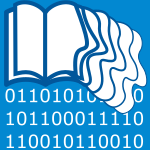 JCDL-2018-FafaliosKN #documentation #query #semantics
JCDL-2018-FafaliosKN #documentation #query #semantics- Ranking Archived Documents for Structured Queries on Semantic Layers (PF, VK, WN), pp. 155–164.
 JCDL-2018-YuanGJT
JCDL-2018-YuanGJT - Formula Ranking within an Article (KY, LG, ZJ, ZT), pp. 123–126.
 JCDL-2018-ZhangW #network
JCDL-2018-ZhangW #network- Ranking Scientific Papers and Venues in Heterogeneous Academic Networks by Mutual Reinforcement (FZ, SW), pp. 127–130.
 CHI-PLAY-2018-BangayM #case study
CHI-PLAY-2018-BangayM #case study- Meaningful Choice in Strategic Unit Selection: A Case Study of Unit Rankings in StarCraft II (SB, OFM), pp. 33–44.
 CIKM-2018-BellKM
CIKM-2018-BellKM - The Title Says It All: A Title Term Weighting Strategy For eCommerce Ranking (AB, PSK, DM), pp. 2233–2241.
 CIKM-2018-ChuLXPLR0Z #e-commerce #graph #optimisation
CIKM-2018-ChuLXPLR0Z #e-commerce #graph #optimisation- Deep Graph Embedding for Ranking Optimization in E-commerce (CC, ZL, BX, FP, CL, RR, QL0, JZ), pp. 2007–2015.
 CIKM-2018-HuL #collaboration #multi
CIKM-2018-HuL #collaboration #multi- Collaborative Multi-objective Ranking (JH, PL0), pp. 1363–1372.
 CIKM-2018-KangFYXCT #multi #named #network
CIKM-2018-KangFYXCT #multi #named #network- X-Rank: Explainable Ranking in Complex Multi-Layered Networks (JK, SF, HY, YX, NC, HT), pp. 1959–1962.
 CIKM-2018-KuhlmanVDNDPRH #interactive #personalisation
CIKM-2018-KuhlmanVDNDPRH #interactive #personalisation- Preference-driven Interactive Ranking System for Personalized Decision Support (CK, MVV, DD, MN, GD, ZP, EAR, LH), pp. 1931–1934.
 CIKM-2018-LinCCT0CL #collaboration #detection
CIKM-2018-LinCCT0CL #collaboration #detection- Collaborative Alert Ranking for Anomaly Detection (YL, ZC, CC, LAT, KZ0, WC, ZL), pp. 1987–1995.
 CIKM-2018-ShenKBQM #clustering #email #learning #multi #query
CIKM-2018-ShenKBQM #clustering #email #learning #multi #query- Multi-Task Learning for Email Search Ranking with Auxiliary Query Clustering (JS, MK, MB, ZQ, DM), pp. 2127–2135.
 CIKM-2018-SongYCX #collaboration
CIKM-2018-SongYCX #collaboration- Neural Collaborative Ranking (BS, XY, YC, CX), pp. 1353–1362.
 CIKM-2018-WangLGBN #framework #metric #optimisation
CIKM-2018-WangLGBN #framework #metric #optimisation- The LambdaLoss Framework for Ranking Metric Optimization (XW, CL0, NG, MB, MN), pp. 1313–1322.
 CIKM-2018-YasserKE #case study #web
CIKM-2018-YasserKE #case study #web- Re-ranking Web Search Results for Better Fact-Checking: A Preliminary Study (KY, MK, TE), pp. 1783–1786.
 CIKM-2018-YuZYWW0C #feedback #multi
CIKM-2018-YuZYWW0C #feedback #multi- Multiple Pairwise Ranking with Implicit Feedback (RY, YZ, YY, LW, CW, QL0, EC), pp. 1727–1730.
 CIKM-2018-ZamaniDCLK #learning #representation
CIKM-2018-ZamaniDCLK #learning #representation- From Neural Re-Ranking to Neural Ranking: Learning a Sparse Representation for Inverted Indexing (HZ, MD0, WBC, EGLM, JK), pp. 497–506.
 CIKM-2018-ZhouYWBEYZW #named #network #personalisation
CIKM-2018-ZhouYWBEYZW #named #network #personalisation- PRRE: Personalized Relation Ranking Embedding for Attributed Networks (SZ, HY, XW0, JB, ME, PY, JZ, CW0), pp. 823–832.
 ECIR-2018-ShahshahaniHZS #approach #towards
ECIR-2018-ShahshahaniHZS #approach #towards- Towards a Unified Supervised Approach for Ranking Triples of Type-Like Relations (MSS, FH, HZ, AS), pp. 707–714.
 ECIR-2018-WilkensZF #documentation #learning
ECIR-2018-WilkensZF #documentation #learning- Document Ranking Applied to Second Language Learning (RW, LZ, CF), pp. 618–624.
 ICML-2018-AgarwalPA
ICML-2018-AgarwalPA - Accelerated Spectral Ranking (AA, PP, SA0), pp. 70–79.
 ICML-2018-FalahatgarJOPR #learning
ICML-2018-FalahatgarJOPR #learning- The Limits of Maxing, Ranking, and Preference Learning (MF, AJ, AO, VP, VR), pp. 1426–1435.
 ICML-2018-Mesaoudi-PaulHB #sorting
ICML-2018-Mesaoudi-PaulHB #sorting- Ranking Distributions based on Noisy Sorting (AEMP, EH, RBF), pp. 3469–3477.
 ICML-2018-WuHS #approach #collaboration #named
ICML-2018-WuHS #approach #collaboration #named- SQL-Rank: A Listwise Approach to Collaborative Ranking (LW, CJH, JS), pp. 5311–5320.
 ICPR-2018-CuradoELH #named
ICPR-2018-CuradoELH #named- net4Lap: Neural Laplacian Regularization for Ranking and Re-Ranking (MC, FE, MAL, ERH), pp. 1366–1371.
 ICPR-2018-GuoLLL #adaptation #identification #kernel
ICPR-2018-GuoLLL #adaptation #identification #kernel- Density-Adaptive Kernel based Re-Ranking for Person Re-Identification (RPG, CGL, YL, JL), pp. 982–987.
 ICPR-2018-GuptaMSM #image #learning #order #similarity
ICPR-2018-GuptaMSM #image #learning #order #similarity- Learning an Order Preserving Image Similarity through Deep Ranking (NG, SM, SS, SM), pp. 1115–1120.
 ICPR-2018-LinLJ #named #predict
ICPR-2018-LinLJ #named #predict- R2-ResNeXt: A ResNeXt-Based Regression Model with Relative Ranking for Facial Beauty Prediction (LL, LL, LJ), pp. 85–90.
 ICPR-2018-ShengCWL #detection #image #multi
ICPR-2018-ShengCWL #detection #image #multi- Weakly Supervised Vehicle Detection in Satellite Images via Multiple Instance Ranking (YS, LC, CW0, JL), pp. 2765–2770.
 ICPR-2018-WuYSZ #identification #learning
ICPR-2018-WuYSZ #identification #learning- Joint Semi-supervised Learning and Re-ranking for Vehicle Re-identification (FW, SY, JSS, BZ), pp. 278–283.
 KDD-2018-AgarwalBGXYZ #online #parametricity #problem
KDD-2018-AgarwalBGXYZ #online #parametricity #problem- Online Parameter Selection for Web-based Ranking Problems (DA, KB0, SG, YX, YY, LZ), pp. 23–32.
 KDD-2018-GrbovicC #personalisation #realtime #using
KDD-2018-GrbovicC #personalisation #realtime #using- Real-time Personalization using Embeddings for Search Ranking at Airbnb (MG, HC), pp. 311–320.
 KDD-2018-LiAKMVW #evaluation #modelling #policy
KDD-2018-LiAKMVW #evaluation #modelling #policy- Offline Evaluation of Ranking Policies with Click Models (SL, YAY, BK, SM, VV, ZW), pp. 1685–1694.
 KDD-2018-MolinoZW #named #network
KDD-2018-MolinoZW #named #network- COTA: Improving the Speed and Accuracy of Customer Support through Ranking and Deep Networks (PM, HZ, YCW), pp. 586–595.
 KDD-2018-SinghJ
KDD-2018-SinghJ - Fairness of Exposure in Rankings (AS, TJ), pp. 2219–2228.
 KDD-2018-TangW #learning #modelling #performance #recommendation
KDD-2018-TangW #learning #modelling #performance #recommendation- Ranking Distillation: Learning Compact Ranking Models With High Performance for Recommender System (JT, KW), pp. 2289–2298.
 POPL-2018-AgrawalC0 #approach #performance #probability #source code #termination
POPL-2018-AgrawalC0 #approach #performance #probability #source code #termination- Lexicographic ranking supermartingales: an efficient approach to termination of probabilistic programs (SA, KC, PN0), p. 32.
 EDM-2017-ZhuLW0 #automation #effectiveness #framework #generative #topic
EDM-2017-ZhuLW0 #automation #effectiveness #framework #generative #topic- An Effective Framework for Automatically Generating and Ranking Topics in MOOC Videos (JZ, XL, ZW, MZ0).
 CIKM-2017-ChaoCYWT
CIKM-2017-ChaoCYWT - Text Embedding for Sub-Entity Ranking from User Reviews (CYC, YFC, HWY, CJW, MFT), pp. 2011–2014.
 CIKM-2017-DingZLTCZ #named #network #personalisation #recommendation
CIKM-2017-DingZLTCZ #named #network #personalisation #recommendation- BayDNN: Friend Recommendation with Bayesian Personalized Ranking Deep Neural Network (DD, MZ0, SYL, JT0, XC, ZHZ), pp. 1479–1488.
 CIKM-2017-Gupta0M #network #personalisation
CIKM-2017-Gupta0M #network #personalisation- Interest Diffusion in Heterogeneous Information Network for Personalized Item Ranking (MG, PK0, RM), pp. 2087–2090.
 CIKM-2017-KawasakiKS #mobile
CIKM-2017-KawasakiKS #mobile- Ranking Rich Mobile Verticals based on Clicks and Abandonment (MK, IK, TS), pp. 2127–2130.
 CIKM-2017-LeiLLZ #learning #personalisation
CIKM-2017-LeiLLZ #learning #personalisation- Alternating Pointwise-Pairwise Learning for Personalized Item Ranking (YL, WL0, ZL, MZ), pp. 2155–2158.
 CIKM-2017-LeL #performance #personalisation #recommendation
CIKM-2017-LeL #performance #personalisation #recommendation- Indexable Bayesian Personalized Ranking for Efficient Top-k Recommendation (DDL, HWL), pp. 1389–1398.
 CIKM-2017-ManotumruksaMO17a #framework #multi #personalisation #recommendation
CIKM-2017-ManotumruksaMO17a #framework #multi #personalisation #recommendation- A Personalised Ranking Framework with Multiple Sampling Criteria for Venue Recommendation (JM, CM, IO), pp. 1469–1478.
 CIKM-2017-PangLGXXC #architecture #information retrieval #named
CIKM-2017-PangLGXXC #architecture #information retrieval #named- DeepRank: A New Deep Architecture for Relevance Ranking in Information Retrieval (LP, YL, JG, JX0, JX, XC), pp. 257–266.
 CIKM-2017-RafailidisC #collaboration #recommendation
CIKM-2017-RafailidisC #collaboration #recommendation- A Collaborative Ranking Model for Cross-Domain Recommendations (DR, FC), pp. 2263–2266.
 CIKM-2017-SongRCZY
CIKM-2017-SongRCZY - Volume Ranking and Sequential Selection in Programmatic Display Advertising (YS, KR, HC, WZ0, YY0), pp. 1099–1107.
 CIKM-2017-XiongLCH #documentation #named #query
CIKM-2017-XiongLCH #documentation #named #query- JointSem: Combining Query Entity Linking and Entity based Document Ranking (CX, ZL0, JC, EHH), pp. 2391–2394.
 CIKM-2017-ZehlikeB0HMB #algorithm
CIKM-2017-ZehlikeB0HMB #algorithm- FA*IR: A Fair Top-k Ranking Algorithm (MZ, FB, CC0, SH, MM, RBY), pp. 1569–1578.
 ECIR-2017-RomeoMBM #approach #learning #multi
ECIR-2017-RomeoMBM #approach #learning #multi- A Multiple-Instance Learning Approach to Sentence Selection for Question Ranking (SR, GDSM, ABC, AM), pp. 437–449.
 ICML-2017-FahandarHC #statistics
ICML-2017-FahandarHC #statistics- Statistical Inference for Incomplete Ranking Data: The Case of Rank-Dependent Coarsening (MAF, EH, IC), pp. 1078–1087.
 ICML-2017-FalahatgarOPS
ICML-2017-FalahatgarOPS - Maximum Selection and Ranking under Noisy Comparisons (MF, AO, VP, ATS), pp. 1088–1096.
 KDD-2017-LiuXOS #e-commerce
KDD-2017-LiuXOS #e-commerce- Cascade Ranking for Operational E-commerce Search (SL, FX, WO, LS), pp. 1557–1565.
 KDD-2017-ShahSC #algorithm #constraints #online #web
KDD-2017-ShahSC #algorithm #constraints #online #web- Online Ranking with Constraints: A Primal-Dual Algorithm and Applications to Web Traffic-Shaping (PS, AS, TC), pp. 405–414.
 KDD-2017-WuHS #collaboration #scalability
KDD-2017-WuHS #collaboration #scalability- Large-scale Collaborative Ranking in Near-Linear Time (LW, CJH, JS), pp. 515–524.
 CAV-2017-Ben-AmramG #multi #on the
CAV-2017-Ben-AmramG #multi #on the- On Multiphase-Linear Ranking Functions (AMBA, SG), pp. 601–620.
 CHI-PLAY-2016-KouGK
CHI-PLAY-2016-KouGK - Ranking Practices and Distinction in League of Legends (YK, XG, YMK), pp. 4–9.
 CIKM-2016-FoleyOA #keyword #query
CIKM-2016-FoleyOA #keyword #query- Improving Entity Ranking for Keyword Queries (JF, BO, JA), pp. 2061–2064.
 CIKM-2016-HagenVGS #axiom
CIKM-2016-HagenVGS #axiom- Axiomatic Result Re-Ranking (MH, MV, SG, BS0), pp. 721–730.
 CIKM-2016-PetersenSJL #adaptation
CIKM-2016-PetersenSJL #adaptation- Adaptive Distributional Extensions to DFR Ranking (CP, JGS, KJ, CL), pp. 2005–2008.
 CIKM-2016-RafailidisC #collaboration #recommendation #social
CIKM-2016-RafailidisC #collaboration #recommendation #social- Joint Collaborative Ranking with Social Relationships in Top-N Recommendation (DR, FC), pp. 1393–1402.
 CIKM-2016-TkachenkoL
CIKM-2016-TkachenkoL - Plackett-Luce Regression Mixture Model for Heterogeneous Rankings (MT, HWL), pp. 237–246.
 CIKM-2016-TutekGSMB #concept #detection #knowledge base #using
CIKM-2016-TutekGSMB #concept #detection #knowledge base #using- Detecting and Ranking Conceptual Links between Texts Using a Knowledge Base (MT, GG, JS, NMF, BDB), pp. 2077–2080.
 CIKM-2016-YangAGC #named
CIKM-2016-YangAGC #named- aNMM: Ranking Short Answer Texts with Attention-Based Neural Matching Model (LY0, QA, JG, WBC), pp. 287–296.
 CIKM-2016-YuanGJCYZ #learning #named #using
CIKM-2016-YuanGJCYZ #learning #named #using- LambdaFM: Learning Optimal Ranking with Factorization Machines Using Lambda Surrogates (FY, GG, JMJ, LC0, HY, WZ0), pp. 227–236.
 ECIR-2016-RoySGC #documentation #query #segmentation
ECIR-2016-RoySGC #documentation #query #segmentation- Improving Document Ranking for Long Queries with Nested Query Segmentation (RSR, AS, NG, MC), pp. 775–781.
 ECIR-2016-Welleck #optimisation #performance
ECIR-2016-Welleck #optimisation #performance- Efficient AUC Optimization for Information Ranking Applications (SJW), pp. 159–170.
 ECIR-2016-YangGSMSMC #modelling
ECIR-2016-YangGSMSMC #modelling- Modeling User Interests for Zero-Query Ranking (LY0, QG, YS, SM, MS, KM, WBC), pp. 171–184.
 ICML-2016-MalherbeCV #approach #optimisation
ICML-2016-MalherbeCV #approach #optimisation- A ranking approach to global optimization (CM, EC, NV), pp. 1539–1547.
 ICML-2016-XuXCY #assessment #crowdsourcing #quality #statistics
ICML-2016-XuXCY #assessment #crowdsourcing #quality #statistics- False Discovery Rate Control and Statistical Quality Assessment of Annotators in Crowdsourced Ranking (QX, JX, XC, YY0), pp. 1282–1291.
 ICPR-2016-VoSL #recognition
ICPR-2016-VoSL #recognition- Facial expression recognition by re-ranking with global and local generic features (DMV, AS, THL), pp. 4118–4123.
 KDD-2016-BrooksKG #data-driven #predict #using
KDD-2016-BrooksKG #data-driven #predict #using- Developing a Data-Driven Player Ranking in Soccer Using Predictive Model Weights (JB, MK, JVG), pp. 49–55.
 KDD-2016-ChengZCJCW #analysis #correlation
KDD-2016-ChengZCJCW #analysis #correlation- Ranking Causal Anomalies via Temporal and Dynamical Analysis on Vanishing Correlations (WC, KZ0, HC, GJ, ZC, WW0), pp. 805–814.
 KDD-2016-JainPV #multi #recommendation
KDD-2016-JainPV #multi #recommendation- Extreme Multi-label Loss Functions for Recommendation, Tagging, Ranking & Other Missing Label Applications (HJ, YP, MV), pp. 935–944.
 KDD-2016-KapurLCAP
KDD-2016-KapurLCAP - Ranking Universities Based on Career Outcomes of Graduates (NK, NIL, BCC, DA, IP), pp. 137–144.
 KDD-2016-LiAHS #how #personalisation
KDD-2016-LiAHS #how #personalisation- How to Get Them a Dream Job?: Entity-Aware Features for Personalized Job Search Ranking (JL, DA, VHT, SS), pp. 501–510.
 KDD-2016-YinHTDZOCKDNLC
KDD-2016-YinHTDZOCKDNLC - Ranking Relevance in Yahoo Search (DY, YH, JT, TDJ, MZ, HO, JC, CK, HD, CN, JML, YC), pp. 323–332.
 SAS-2016-MauricaMP #float #linear #on the #problem
SAS-2016-MauricaMP #float #linear #on the #problem- On the Linear Ranking Problem for Simple Floating-Point Loops (FM, FM, ÉP), pp. 300–316.
 HT-2015-RoutB #algorithm #dataset #twitter
HT-2015-RoutB #algorithm #dataset #twitter- A Human-annotated Dataset for Evaluating Tweet Ranking Algorithms (DPR, KB), pp. 95–99.
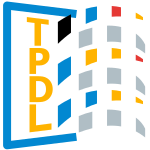 TPDL-2015-KanellosVVGVHD #towards
TPDL-2015-KanellosVVGVHD #towards- MirPub v2: Towards Ranking and Refining miRNA Publication Search Results (IK, VV, TV, GG, YV, AGH, TD), pp. 355–359.
 VLDB-2015-RahmanLT0D #database #privacy
VLDB-2015-RahmanLT0D #database #privacy- Privacy Implications of Database Ranking (MFR, WL, ST, NZ, GD), pp. 1106–1117.
 CHI-2015-VuillemotP #navigation
CHI-2015-VuillemotP #navigation- Investigating the Direct Manipulation of Ranking Tables for Time Navigation (RV, CP), pp. 2703–2706.
 CIKM-2015-0002GD #information management #scalability #web
CIKM-2015-0002GD #information management #scalability #web- Ranking Deep Web Text Collections for Scalable Information Extraction (PB0, LG, CD), pp. 153–162.
 CIKM-2015-JameelLSB #topic
CIKM-2015-JameelLSB #topic- A Unified Posterior Regularized Topic Model with Maximum Margin for Learning-to-Rank (SJ, WL, SS, LB), pp. 103–112.
 CIKM-2015-JiangLLC #consistency #knowledge base #web
CIKM-2015-JiangLLC #consistency #knowledge base #web- Improving Ranking Consistency for Web Search by Leveraging a Knowledge Base and Search Logs (JYJ, JL0, CYL, PJC), pp. 1441–1450.
 CIKM-2015-MunozTG #approach #learning
CIKM-2015-MunozTG #approach #learning- A Soft Computing Approach for Learning to Aggregate Rankings (JAVM, RdST, MAG), pp. 83–92.
 CIKM-2015-SchuhmacherDP #query #web
CIKM-2015-SchuhmacherDP #query #web- Ranking Entities for Web Queries Through Text and Knowledge (MS, LD, SPP), pp. 1461–1470.
 CIKM-2015-TymoshenkoM #impact analysis #semantics
CIKM-2015-TymoshenkoM #impact analysis #semantics- Assessing the Impact of Syntactic and Semantic Structures for Answer Passages Reranking (KT, AM), pp. 1451–1460.
 CIKM-2015-YuM #similarity
CIKM-2015-YuM #similarity- Gauging Correct Relative Rankings For Similarity Search (WY, JAM), pp. 1791–1794.
 CIKM-2015-ZhangXLGXHC #interactive #modelling #parametricity
CIKM-2015-ZhangXLGXHC #interactive #modelling #parametricity- Modeling Parameter Interactions in Ranking SVM (YZ, JX0, YL, JG, MX, YH, XC), pp. 1799–1802.
 ECIR-2015-GebremeskelV #documentation
ECIR-2015-GebremeskelV #documentation- Entity-Centric Stream Filtering and Ranking: Filtering and Unfilterable Documents (GGG, APdV), pp. 303–314.
 ECIR-2015-MomeniBA #adaptation #social #social media
ECIR-2015-MomeniBA #adaptation #social #social media- Adaptive Faceted Ranking for Social Media Comments (EM, SB, EA), pp. 789–792.
 ICML-2015-ParkNZSD #collaboration #scalability
ICML-2015-ParkNZSD #collaboration #scalability- Preference Completion: Large-scale Collaborative Ranking from Pairwise Comparisons (DP, JN, JZ, SS, ISD), pp. 1907–1916.
 ICML-2015-RajkumarGL0 #probability #set
ICML-2015-RajkumarGL0 #probability #set- Ranking from Stochastic Pairwise Preferences: Recovering Condorcet Winners and Tournament Solution Sets at the Top (AR, SG, LHL, SA), pp. 665–673.
 ICML-2015-SibonyCJ #learning #statistics
ICML-2015-SibonyCJ #learning #statistics- MRA-based Statistical Learning from Incomplete Rankings (ES, SC, JJ), pp. 1432–1441.
 KDD-2015-FrenoSJA #modelling #recommendation
KDD-2015-FrenoSJA #modelling #recommendation- One-Pass Ranking Models for Low-Latency Product Recommendations (AF, MS, RJ, CA), pp. 1789–1798.
 KDD-2015-FuLPXGZZ #modelling
KDD-2015-FuLPXGZZ #modelling- Real Estate Ranking via Mixed Land-use Latent Models (YF, GL, SP, HX, YG, HZ, CZ), pp. 299–308.
 MLDM-2015-KrasotkinaM #approach #optimisation
MLDM-2015-KrasotkinaM #approach #optimisation- A Bayesian Approach to Sparse Learning-to-Rank for Search Engine Optimization (OK, VM), pp. 382–394.
 RecSys-2015-Steck #matrix
RecSys-2015-Steck #matrix- Gaussian Ranking by Matrix Factorization (HS), pp. 115–122.
 SIGIR-2015-HeBVAR #evaluation #framework #predict #quality #refinement
SIGIR-2015-HeBVAR #evaluation #framework #predict #quality #refinement- Untangling Result List Refinement and Ranking Quality: a Framework for Evaluation and Prediction (JH, MB, APdV, LA, MdR), pp. 293–302.
 SIGIR-2015-Li #image #interactive #reachability #retrieval
SIGIR-2015-Li #image #interactive #reachability #retrieval- Reachability based Ranking in Interactive Image Retrieval (JL), pp. 867–870.
 SIGIR-2015-LiCLPK #named #recommendation
SIGIR-2015-LiCLPK #named #recommendation- Rank-GeoFM: A Ranking based Geographical Factorization Method for Point of Interest Recommendation (XL, GC, XL, TANP, SK), pp. 433–442.
 SIGIR-2015-LuccheseNOPT #documentation
SIGIR-2015-LuccheseNOPT #documentation- Speeding up Document Ranking with Rank-based Features (CL, FMN, SO, RP, NT), pp. 895–898.
 SIGIR-2015-PetriM #cost analysis #on the
SIGIR-2015-PetriM #cost analysis #on the- On the Cost of Phrase-Based Ranking (MP, AM), pp. 931–934.
 SIGIR-2015-ReinandaMR #aspect-oriented #mining #recommendation
SIGIR-2015-ReinandaMR #aspect-oriented #mining #recommendation- Mining, Ranking and Recommending Entity Aspects (RR, EM, MdR), pp. 263–272.
 SIGIR-2015-ShokouhiG #query #recommendation
SIGIR-2015-ShokouhiG #query #recommendation- From Queries to Cards: Re-ranking Proactive Card Recommendations Based on Reactive Search History (MS, QG), pp. 695–704.
 SIGIR-2015-TranTCN #optimisation #random #web
SIGIR-2015-TranTCN #optimisation #random #web- A Random Walk Model for Optimization of Search Impact in Web Frontier Ranking (GT, AT, BBC, WN), pp. 153–162.
 SIGIR-2015-TrevisiolABB #problem
SIGIR-2015-TrevisiolABB #problem- Local Ranking Problem on the BrowseGraph (MT, LMA, PB, RB), pp. 173–182.
 SIGIR-2015-XuWW #collaboration #personalisation #recommendation #semantics
SIGIR-2015-XuWW #collaboration #personalisation #recommendation #semantics- Personalized Semantic Ranking for Collaborative Recommendation (SX, SW, LW), pp. 971–974.
 PLDI-2015-GonnordMR #synthesis #using
PLDI-2015-GonnordMR #synthesis #using- Synthesis of ranking functions using extremal counterexamples (LG, DM, GR), pp. 608–618.
 SAC-2015-DominguesSBMPR #metadata #multi #personalisation #recommendation
SAC-2015-DominguesSBMPR #metadata #multi #personalisation #recommendation- Applying multi-view based metadata in personalized ranking for recommender systems (MAD, CVS, FMMB, MGM, MGCP, SOR), pp. 1105–1107.
 CAV-2015-Ben-AmramG #complexity
CAV-2015-Ben-AmramG #complexity- Complexity of Bradley-Manna-Sipma Lexicographic Ranking Functions (AMBA, SG), pp. 304–321.
 DocEng-2014-WilliamsCG
DocEng-2014-WilliamsCG - Classifying and ranking search engine results as potential sources of plagiarism (KW, HHC, CLG), pp. 97–106.
 VLDB-2015-FujiwaraIKO14 #image #retrieval #scalability
VLDB-2015-FujiwaraIKO14 #image #retrieval #scalability- Scaling Manifold Ranking Based Image Retrieval (YF, GI, SK, MO), pp. 341–352.
 CSMR-WCRE-2014-MondalRS #automation #mining #refactoring
CSMR-WCRE-2014-MondalRS #automation #mining #refactoring- Automatic ranking of clones for refactoring through mining association rules (MM, CKR, KAS), pp. 114–123.
 ICPC-2014-SouzaCM #development
ICPC-2014-SouzaCM #development- Ranking crowd knowledge to assist software development (LBLdS, ECC, MdAM), pp. 72–82.
 ICSME-2014-XuanM #fault #learning #locality #metric #multi
ICSME-2014-XuanM #fault #learning #locality #metric #multi- Learning to Combine Multiple Ranking Metrics for Fault Localization (JX, MM), pp. 191–200.
 MSR-2014-HanamTHL #static analysis
MSR-2014-HanamTHL #static analysis- Finding patterns in static analysis alerts: improving actionable alert ranking (QH, LT, RH, PL), pp. 152–161.
 MSR-2014-MondalRS #co-evolution #predict
MSR-2014-MondalRS #co-evolution #predict- Prediction and ranking of co-change candidates for clones (MM, CKR, KAS), pp. 32–41.
 CHI-2014-PerinVF #exclamation #navigation
CHI-2014-PerinVF #exclamation #navigation- A table!: improving temporal navigation in soccer ranking tables (CP, RV, JDF), pp. 887–896.
 CIKM-2014-BellaachiaA #multi #summary
CIKM-2014-BellaachiaA #multi #summary- Multi-document Hyperedge-based Ranking for Text Summarization (AB, MAD), pp. 1919–1922.
 CIKM-2014-ChanDYTZ #classification #retrieval
CIKM-2014-ChanDYTZ #classification #retrieval- Term Selection and Result Reranking for Question Retrieval by Exploiting Hierarchical Classification (WC, JD, WY, JT, XZ), pp. 141–150.
 CIKM-2014-FangQHZ #composition #overview #sentiment #summary #using
CIKM-2014-FangQHZ #composition #overview #sentiment #summary #using- Ranking Sentiment Explanations for Review Summarization Using Dual Decomposition (LF, QQ, MH, XZ), pp. 1931–1934.
 CIKM-2014-LimsopathamMO #modelling #multi #towards
CIKM-2014-LimsopathamMO #modelling #multi #towards- Modelling Relevance towards Multiple Inclusion Criteria when Ranking Patients (NL, CM, IO), pp. 1639–1648.
 CIKM-2014-LiuYGS #feedback #graph #pseudo #recommendation
CIKM-2014-LiuYGS #feedback #graph #pseudo #recommendation- Meta-Path-Based Ranking with Pseudo Relevance Feedback on Heterogeneous Graph for Citation Recommendation (XL, YY, CG, YS), pp. 121–130.
 CIKM-2014-ProkofyevMGDC #fault
CIKM-2014-ProkofyevMGDC #fault- Correct Me If I’m Wrong: Fixing Grammatical Errors by Preposition Ranking (RP, RM, MG, GD, PCM), pp. 331–340.
 CIKM-2014-VouzoukidouAC #named #query #realtime
CIKM-2014-VouzoukidouAC #named #query #realtime- MeowsReader: Real-Time Ranking and Filtering of News with Generalized Continuous Top-k Queries (NV, BA, VC), pp. 2066–2068.
 CIKM-2014-WangWLW #classification #concept
CIKM-2014-WangWLW #classification #concept- Concept-based Short Text Classification and Ranking (FW, ZW, ZL, JRW), pp. 1069–1078.
 CIKM-2014-Wu0LJ #constraints #optimisation
CIKM-2014-Wu0LJ #constraints #optimisation- Ranking Optimization with Constraints (FW, JX, HL, XJ), pp. 1049–1058.
 CIKM-2014-ZhangYCQGZSH #social
CIKM-2014-ZhangYCQGZSH #social- Social Book Search Reranking with Generalized Content-Based Filtering (BWZ, XCY, XPC, JQ, BG, FZ, LS, HWH), pp. 361–370.
 CIKM-2014-ZhaoMK #collaboration #personalisation #social
CIKM-2014-ZhaoMK #collaboration #personalisation #social- Leveraging Social Connections to Improve Personalized Ranking for Collaborative Filtering (TZ, JJM, IK), pp. 261–270.
 ECIR-2014-ChenWHY #modelling #personalisation #social #social media
ECIR-2014-ChenWHY #modelling #personalisation #social #social media- Facet-Based User Modeling in Social Media for Personalized Ranking (CC, DW, CH, XY), pp. 443–448.
 ICML-c1-2014-SoufianiPX #modelling #parametricity
ICML-c1-2014-SoufianiPX #modelling #parametricity- Computing Parametric Ranking Models via Rank-Breaking (HAS, DCP, LX), pp. 360–368.
 ICML-c2-2014-ClemenconR
ICML-c2-2014-ClemenconR - Anomaly Ranking as Supervised Bipartite Ranking (SC, SR), pp. 343–351.
 ICML-c2-2014-LimL #learning #metric #performance
ICML-c2-2014-LimL #learning #metric #performance- Efficient Learning of Mahalanobis Metrics for Ranking (DL, GRGL), pp. 1980–1988.
 ICPR-2014-FuKGYZ
ICPR-2014-FuKGYZ - Binary Code Reranking Method Based on Bit Importance (HF, XK, YG, XY, LZ), pp. 2679–2684.
 ICPR-2014-GaurM #image
ICPR-2014-GaurM #image- Ranking Images Based on Aesthetic Qualities (AG, KM), pp. 3410–3415.
 ICPR-2014-ManzatoDMR #feedback #personalisation #recommendation #topic
ICPR-2014-ManzatoDMR #feedback #personalisation #recommendation #topic- Improving Personalized Ranking in Recommender Systems with Topic Hierarchies and Implicit Feedback (MGM, MAD, RMM, SOR), pp. 3696–3701.
 KDD-2014-AgarwalCGHHIKMSSZ #process
KDD-2014-AgarwalCGHHIKMSSZ #process- Activity ranking in LinkedIn feed (DA, BCC, RG, JH, QH, AI, SK, YM, PS, AS, LZ), pp. 1603–1612.
 KDD-2014-FuXGYZZ #clustering #dependence
KDD-2014-FuXGYZZ #clustering #dependence- Exploiting geographic dependencies for real estate appraisal: a mutual perspective of ranking and clustering (YF, HX, YG, ZY, YZ, ZHZ), pp. 1047–1056.
 KDD-2014-NiTFZ #network
KDD-2014-NiTFZ #network- Inside the atoms: ranking on a network of networks (JN, HT, WF, XZ), pp. 1356–1365.
 KDIR-2014-MeguebliKDP #social
KDIR-2014-MeguebliKDP #social- Exploiting Social Debates for Opinion Ranking (YM, MK, BLD, FP), pp. 250–260.
 RecSys-2014-LercheJ #feedback #personalisation #using
RecSys-2014-LercheJ #feedback #personalisation #using- Using graded implicit feedback for bayesian personalized ranking (LL, DJ), pp. 353–356.
 RecSys-2014-XuPA #predict #recommendation
RecSys-2014-XuPA #predict #recommendation- Controlled experimentation in recommendations, ranking & response prediction (YX, RP, JA), p. 389.
 SEKE-2014-GaoKN #estimation #learning #quality
SEKE-2014-GaoKN #estimation #learning #quality- Comparing Two Approaches for Adding Feature Ranking to Sampled Ensemble Learning for Software Quality Estimation (KG, TMK, AN), pp. 280–285.
 SIGIR-2014-ArakiC #similarity #validation
SIGIR-2014-ArakiC #similarity #validation- An annotation similarity model in passage ranking for historical fact validation (JA, JC), pp. 1111–1114.
 SIGIR-2014-BabbarPGA #approach #classification #distributed #scalability
SIGIR-2014-BabbarPGA #approach #classification #distributed #scalability- Re-ranking approach to classification in large-scale power-law distributed category systems (RB, IP, ÉG, MRA), pp. 1059–1062.
 SIGIR-2014-CaiLR #documentation #matrix #personalisation #probability
SIGIR-2014-CaiLR #documentation #matrix #personalisation #probability- Personalized document re-ranking based on Bayesian probabilistic matrix factorization (FC, SL, MdR), pp. 835–838.
 SIGIR-2014-CanCM #feedback #modelling
SIGIR-2014-CanCM #feedback #modelling- Incorporating query-specific feedback into learning-to-rank models (EFC, WBC, RM), pp. 1035–1038.
 SIGIR-2014-ChengSHCC #named #self
SIGIR-2014-ChengSHCC #named #self- IMRank: influence maximization via finding self-consistent ranking (SC, HS, JH, WC, XC), pp. 475–484.
 SIGIR-2014-CostaCS #learning #modelling
SIGIR-2014-CostaCS #learning #modelling- Learning temporal-dependent ranking models (MC, FMC, MJS), pp. 757–766.
 SIGIR-2014-QiuCYLL #learning #personalisation
SIGIR-2014-QiuCYLL #learning #personalisation- Item group based pairwise preference learning for personalized ranking (SQ, JC, TY, CL, HL), pp. 1219–1222.
 SIGIR-2014-TangJY #optimisation #runtime
SIGIR-2014-TangJY #optimisation #runtime- Cache-conscious runtime optimization for ranking ensembles (XT, XJ, TY), pp. 1123–1126.
 SIGIR-2014-ZhangLY #documentation
SIGIR-2014-ZhangLY #documentation- A POMDP model for content-free document re-ranking (SZ, JL, HY), pp. 1139–1142.
 ASE-2014-YeXZC #retrieval
ASE-2014-YeXZC #retrieval- Interrogative-guided re-ranking for question-oriented software text retrieval (TY, BX, YZ, XC), pp. 115–120.
 SAC-2014-KimLSKL #approach #named #web
SAC-2014-KimLSKL #approach #named #web- C-Rank: a contribution-based web page ranking approach (DJK, SCL, HYS, SWK, JBL), pp. 908–912.
 SAC-2014-MitranCB #automation #image
SAC-2014-MitranCB #automation #image- GeoTime-based tag ranking model for automatic image annotation (MM, GC, MB), pp. 896–901.
 SAC-2014-RanaKS #algorithm #evaluation #social
SAC-2014-RanaKS #algorithm #evaluation #social- The strength of social strength: an evaluation study of algorithmic versus user-defined ranking (JR, JK, KS), pp. 658–659.
 ESOP-2014-UrbanM #abstract domain
ESOP-2014-UrbanM #abstract domain- An Abstract Domain to Infer Ordinal-Valued Ranking Functions (CU, AM), pp. 412–431.
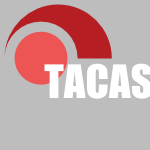 TACAS-2014-LeikeH #linear
TACAS-2014-LeikeH #linear- Ranking Templates for Linear Loops (JL, MH), pp. 172–186.
 VMCAI-2014-Masse #policy #termination
VMCAI-2014-Masse #policy #termination- Policy Iteration-Based Conditional Termination and Ranking Functions (DM), pp. 453–471.
 JCDL-2013-GollapalliMG #graph #topic #using
JCDL-2013-GollapalliMG #graph #topic #using- Ranking experts using author-document-topic graphs (SDG, PM, CLG), pp. 87–96.
 JCDL-2013-LimaSMSML #multi #research
JCDL-2013-LimaSMSML #multi #research- Aggregating productivity indices for ranking researchers across multiple areas (HL, THPS, MMM, RLTS, WMJ, AHFL), pp. 97–106.
 JCDL-2013-ShuaiJLB #case study #comparative #wiki
JCDL-2013-ShuaiJLB #case study #comparative #wiki- A comparative study of academic and Wikipedia ranking (XS, ZJ, XL, JB), pp. 25–28.
 TPDL-2013-AlhooriF #predict #question #social
TPDL-2013-AlhooriF #predict #question #social- Can Social Reference Management Systems Predict a Ranking of Scholarly Venues? (HA, RF), pp. 138–143.
 TPDL-2013-KohnckeB #library #using
TPDL-2013-KohnckeB #library #using- Context-Sensitive Ranking Using Cross-Domain Knowledge for Chemical Digital Libraries (BK, WTB), pp. 285–296.
 VLDB-2013-EftekharK #clustering #data flow
VLDB-2013-EftekharK #clustering #data flow- Partitioning and Ranking Tagged Data Sources (ME, NK), pp. 229–240.
 OCSC-2013-Butler #game studies
OCSC-2013-Butler #game studies- The Effect of Leaderboard Ranking on Players’ Perception of Gaming Fun (CB), pp. 129–136.
 CIKM-2013-LanNGC #question
CIKM-2013-LanNGC #question- Is top-k sufficient for ranking? (YL, SN, JG, XC), pp. 1261–1270.
 CIKM-2013-LiuN
CIKM-2013-LiuN - A phased ranking model for question answering (RL, EN), pp. 79–88.
 CIKM-2013-MorishimaYTSK #dependence #performance #web
CIKM-2013-MorishimaYTSK #dependence #performance #web- Efficient filtering and ranking schemes for finding inclusion dependencies on the web (AM, EY, MT, SS, HK), pp. 763–768.
 CIKM-2013-SeverynNM #classification
CIKM-2013-SeverynNM #classification- Building structures from classifiers for passage reranking (AS, MN, AM), pp. 969–978.
 CIKM-2013-StrotgenG #proximity #query
CIKM-2013-StrotgenG #proximity #query- Proximity2-aware ranking for textual, temporal, and geographic queries (JS, MG), pp. 739–744.
 CIKM-2013-XuXWW #automation #feedback #image
CIKM-2013-XuXWW #automation #feedback #image- A heterogenous automatic feedback semi-supervised method for image reranking (XCX, XSX, YW, XW), pp. 999–1008.
 CIKM-2013-ZhuXGC #detection #mobile #perspective
CIKM-2013-ZhuXGC #detection #mobile #perspective- Ranking fraud detection for mobile apps: a holistic view (HZ, HX, YG, EC), pp. 619–628.
 ECIR-2013-AsadiL #documentation #modelling #performance
ECIR-2013-AsadiL #documentation #modelling #performance- Training Efficient Tree-Based Models for Document Ranking (NA, JL), pp. 146–157.
 ECIR-2013-JuM #classification #incremental
ECIR-2013-JuM #classification #incremental- Incremental Reranking for Hierarchical Text Classification (QJ, AM), pp. 726–729.
 ECIR-2013-SantosCSM #image #multimodal
ECIR-2013-SantosCSM #image #multimodal- Multimodal Re-ranking of Product Image Search Results (JMdS, JMBC, PCS, ESdM), pp. 62–73.
 ECIR-2013-ThollardQ #image
ECIR-2013-ThollardQ #image- Content-Based Re-ranking of Text-Based Image Search Results (FT, GQ), pp. 618–629.
 ECIR-2013-TsaiW
ECIR-2013-TsaiW - Risk Ranking from Financial Reports (MFT, CJW), pp. 804–807.
 ECIR-2013-XiaoXE #named
ECIR-2013-XiaoXE #named- OPARS: Objective Photo Aesthetics Ranking System (HX, HX, CE), pp. 861–864.
 ECIR-2013-ZhukovskiiGS
ECIR-2013-ZhukovskiiGS - URL Redirection Accounting for Improving Link-Based Ranking Methods (MZ, GG, PS), pp. 656–667.
 ICML-c1-2013-OstingBO #statistics
ICML-c1-2013-OstingBO #statistics- Enhanced statistical rankings via targeted data collection (BO, CB, SO), pp. 489–497.
 ICML-c2-2013-WestonMY #clustering #sublinear
ICML-c2-2013-WestonMY #clustering #sublinear- Label Partitioning For Sublinear Ranking (JW, AM, HY), pp. 181–189.
 ICML-c3-2013-WauthierJJ #performance
ICML-c3-2013-WauthierJJ #performance- Efficient Ranking from Pairwise Comparisons (FLW, MIJ, NJ), pp. 109–117.
 KDD-2013-TanXGW #learning #metric #modelling #optimisation #rank
KDD-2013-TanXGW #learning #metric #modelling #optimisation #rank- Direct optimization of ranking measures for learning to rank models (MT, TX, LG, SW), pp. 856–864.
 RecSys-2013-Hurley #personalisation
RecSys-2013-Hurley #personalisation- Personalised ranking with diversity (NJH), pp. 379–382.
 RecSys-2013-Steck #evaluation #predict #recommendation
RecSys-2013-Steck #evaluation #predict #recommendation- Evaluation of recommendations: rating-prediction and ranking (HS), pp. 213–220.
 RecSys-2013-SuYCY #personalisation #recommendation
RecSys-2013-SuYCY #personalisation #recommendation- Set-oriented personalized ranking for diversified top-n recommendation (RS, LY, KC, YY), pp. 415–418.
 SIGIR-2013-BalogR #classification #cumulative #recommendation
SIGIR-2013-BalogR #classification #cumulative #recommendation- Cumulative citation recommendation: classification vs. ranking (KB, HR), pp. 941–944.
 SIGIR-2013-BouadjenekHB #named #personalisation #social #web
SIGIR-2013-BouadjenekHB #named #personalisation #social #web- Sopra: a new social personalized ranking function for improving web search (MRB, HH, MB), pp. 861–864.
 SIGIR-2013-KimCHZDG #summary
SIGIR-2013-KimCHZDG #summary- Ranking explanatory sentences for opinion summarization (HDK, MC, MH, CZ, UD, RG), pp. 1069–1072.
 SIGIR-2013-LuWTZHZ #rank #scalability
SIGIR-2013-LuWTZHZ #rank #scalability- A low rank structural large margin method for cross-modal ranking (XL, FW, ST, ZZ, XH, YZ), pp. 433–442.
 SIGIR-2013-Molino #modelling #semantics
SIGIR-2013-Molino #modelling #semantics- Semantic models for answer re-ranking in question answering (PM), p. 1146.
 SIGIR-2013-Paik #effectiveness #novel
SIGIR-2013-Paik #effectiveness #novel- A novel TF-IDF weighting scheme for effective ranking (JHP), pp. 343–352.
 SIGIR-2013-RaiberK #clustering #documentation #markov #random #using
SIGIR-2013-RaiberK #clustering #documentation #markov #random #using- Ranking document clusters using markov random fields (FR, OK), pp. 333–342.
 SIGIR-2013-ShokouhiWBR
SIGIR-2013-ShokouhiWBR - Fighting search engine amnesia: reranking repeated results (MS, RWW, PNB, FR), pp. 273–282.
 SIGIR-2013-WangHCSWC #adaptation #personalisation #web
SIGIR-2013-WangHCSWC #adaptation #personalisation #web- Personalized ranking model adaptation for web search (HW, XH, MWC, YS, RWW, WC), pp. 323–332.
 SIGIR-2013-YankovBS #mobile
SIGIR-2013-YankovBS #mobile- Interoperability ranking for mobile applications (DY, PB, RS), pp. 857–860.
 POPL-2013-Ben-AmramG #constraints #integer #linear #on the #problem
POPL-2013-Ben-AmramG #constraints #integer #linear #on the #problem- On the linear ranking problem for integer linear-constraint loops (AMBA, SG), pp. 51–62.
 PPDP-2013-BagnaraM #linear
PPDP-2013-BagnaraM #linear- Eventual linear ranking functions (RB, FM), pp. 229–238.
 SAS-2013-Urban #abstract domain
SAS-2013-Urban #abstract domain- The Abstract Domain of Segmented Ranking Functions (CU), pp. 43–62.
 SAC-2013-CamposFHV #personalisation #query #using #xml
SAC-2013-CamposFHV #personalisation #query #using #xml- XML search personalization strategies using query expansion, reranking and a search engine modification (LMdC, JMFL, JFH, EVL), pp. 872–877.
 SAC-2013-ChaudhariZW #component #framework #towards
SAC-2013-ChaudhariZW #component #framework #towards- Towards a ranking framework for software components (DC, MZ, KW), pp. 495–498.
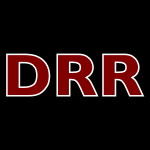 DRR-2012-SaldarriagaMV #word
DRR-2012-SaldarriagaMV #word- Retrieving handwriting by combining word spotting and manifold ranking (SPS, EM, CVG).
 JCDL-2012-DengHLK #modelling #network
JCDL-2012-DengHLK #modelling #network- Modeling and exploiting heterogeneous bibliographic networks for expertise ranking (HD, JH, MRL, IK), pp. 71–80.
 JCDL-2012-Nomoto #library #personalisation
JCDL-2012-Nomoto #library #personalisation- Re-ranking bibliographic records for personalized library search (TN), pp. 125–128.
 JCDL-2012-OhLMY #using
JCDL-2012-OhLMY #using- Evaluating and ranking patents using weighted citations (SO, ZL, PM, JY), pp. 281–284.
 TPDL-2012-NeumayerBN #distributed #repository
TPDL-2012-NeumayerBN #distributed #repository- Ranking Distributed Knowledge Repositories (RN, KB, KN), pp. 486–491.
 VLDB-2012-JestesPLT #scalability
VLDB-2012-JestesPLT #scalability- Ranking Large Temporal Data (JJ, JMP, FL, MT), pp. 1412–1423.
 WCRE-2012-AllierAHD #algorithm #framework
WCRE-2012-AllierAHD #algorithm #framework- A Framework to Compare Alert Ranking Algorithms (SA, NA, AH, SD), pp. 277–285.
 CHI-2012-NobaranyORCMM #design #interface #metric #rating
CHI-2012-NobaranyORCMM #design #interface #metric #rating- The design space of opinion measurement interfaces: exploring recall support for rating and ranking (SN, LO, VKR, CHC, JM, TM), pp. 2035–2044.
 CIKM-2012-AgarwalCW #multi #using
CIKM-2012-AgarwalCW #multi #using- Multi-faceted ranking of news articles using post-read actions (DA, BCC, XW), pp. 694–703.
 CIKM-2012-AsadiL #documentation #generative #performance
CIKM-2012-AsadiL #documentation #generative #performance- Fast candidate generation for two-phase document ranking: postings list intersection with bloom filters (NA, JL), pp. 2419–2422.
 CIKM-2012-BerneckerEKRZ #database #fuzzy #probability
CIKM-2012-BerneckerEKRZ #database #fuzzy #probability- Probabilistic ranking in fuzzy object databases (TB, TE, HPK, MR, AZ), pp. 2647–2650.
 CIKM-2012-DybalaRAS #analysis #comparative #generative
CIKM-2012-DybalaRAS #analysis #comparative #generative- Data filtering in humor generation: comparative analysis of hit rate and co-occurrence rankings as a method to choose usable pun candidates (PD, RR, KA, KS), pp. 2587–2590.
 CIKM-2012-JiangSZ #effectiveness #towards
CIKM-2012-JiangSZ #effectiveness #towards- Towards an effective and unbiased ranking of scientific literature through mutual reinforcement (XJ, XS, HZ), pp. 714–723.
 CIKM-2012-KharitonovS #web
CIKM-2012-KharitonovS #web- Demographic context in web search re-ranking (EK, PS), pp. 2555–2558.
 CIKM-2012-KongJYXZ
CIKM-2012-KongJYXZ - Ranking news events by influence decay and information fusion for media and users (LK, SJ, RY, SX, YZ), pp. 1849–1853.
 CIKM-2012-KulkarniTHC #estimation #topic
CIKM-2012-KulkarniTHC #estimation #topic- Shard ranking and cutoff estimation for topically partitioned collections (AK, AST, DH, JC), pp. 555–564.
 CIKM-2012-KurlandRS #clustering #predict
CIKM-2012-KurlandRS #clustering #predict- Query-performance prediction and cluster ranking: two sides of the same coin (OK, FR, AS), pp. 2459–2462.
 CIKM-2012-LeePKL #graph #named #novel #recommendation
CIKM-2012-LeePKL #graph #named #novel #recommendation- PathRank: a novel node ranking measure on a heterogeneous graph for recommender systems (SL, SP, MK, SgL), pp. 1637–1641.
 CIKM-2012-LiuZG #analysis
CIKM-2012-LiuZG #analysis- Full-text citation analysis: enhancing bibliometric and scientific publication ranking (XL, JZ, CG), pp. 1975–1979.
 CIKM-2012-NiuLGC #probability #problem
CIKM-2012-NiuLGC #probability #problem- A new probabilistic model for top-k ranking problem (SN, YL, JG, XC), pp. 2519–2522.
 CIKM-2012-WangWLL #graph #keyword #using #wiki
CIKM-2012-WangWLL #graph #keyword #using #wiki- Exploring simultaneous keyword and key sentence extraction: improve graph-based ranking using wikipedia (XW, LW, JL, SL), pp. 2619–2622.
 CIKM-2012-ZhangSZZ #transaction
CIKM-2012-ZhangSZZ #transaction- Credibility-based product ranking for C2C transactions (RZ, CS, MZ, AZ), pp. 2149–2153.
 CIKM-2012-ZhouLZ12a #collaboration #query
CIKM-2012-ZhouLZ12a #collaboration #query- Collaborative ranking: improving the relevance for tail queries (KZ, XL, HZ), pp. 1900–1904.
 ECIR-2012-GeraniZC #linear #multi
ECIR-2012-GeraniZC #linear #multi- Score Transformation in Linear Combination for Multi-criteria Relevance Ranking (SG, CZ, FC), pp. 256–267.
 ECIR-2012-QuattoniCT #retrieval
ECIR-2012-QuattoniCT #retrieval- A Latent Variable Ranking Model for Content-Based Retrieval (AQ, XC, AT), pp. 340–351.
 ICML-2012-DembczynskiKH #consistency #multi
ICML-2012-DembczynskiKH #consistency #multi- Consistent Multilabel Ranking through Univariate Losses (KD, WK, EH), p. 175.
 ICML-2012-MenonJVEO #predict
ICML-2012-MenonJVEO #predict- Predicting accurate probabilities with a ranking loss (AKM, XJ, SV, CE, LOM), p. 88.
 ICPR-2012-GaoES #pseudo
ICPR-2012-GaoES #pseudo- A ranking model for face alignment with Pseudo Census Transform (HG, HKE, RS), pp. 1116–1119.
 ICPR-2012-LingZP #retrieval #similarity
ICPR-2012-LingZP #retrieval #similarity- Tri-space and ranking based heterogeneous similarity measure for cross-media retrieval (LL, XZ, YP), pp. 230–233.
 ICPR-2012-MatsudaY #multi #recognition
ICPR-2012-MatsudaY #multi #recognition- Multiple-food recognition considering co-occurrence employing manifold ranking (YM, KY), pp. 2017–2020.
 ICPR-2012-XiaoZZ #consistency #retrieval
ICPR-2012-XiaoZZ #consistency #retrieval- Spatial consistency based selective reranking for content based object retrieval (TX, CZ, HZ), pp. 417–420.
 KDD-2012-JiLHCH #parallel
KDD-2012-JiLHCH #parallel- Parallel field ranking (MJ, BL, XH, DC, JH), pp. 723–731.
 KR-2012-MorettiT #set #using
KR-2012-MorettiT #set #using- Ranking Sets of Possibly Interacting Objects Using Shapley Extensions (SM, AT).
 MLDM-2012-MacchiaCM #mining #modelling #network
MLDM-2012-MacchiaCM #mining #modelling #network- Mining Ranking Models from Dynamic Network Data (LM, MC, DM), pp. 566–577.
 RecSys-2012-PradelUG #evaluation #metric
RecSys-2012-PradelUG #evaluation #metric- Ranking with non-random missing ratings: influence of popularity and positivity on evaluation metrics (BP, NU, PG), pp. 147–154.
 RecSys-2012-SalimansPG #collaboration #learning
RecSys-2012-SalimansPG #collaboration #learning- Collaborative learning of preference rankings (TS, UP, TG), pp. 261–264.
 RecSys-2012-TakacsT #personalisation
RecSys-2012-TakacsT #personalisation- Alternating least squares for personalized ranking (GT, DT), pp. 83–90.
 SIGIR-2012-ArroyueloGMOS #trade-off
SIGIR-2012-ArroyueloGMOS #trade-off- To index or not to index: time-space trade-offs in search engines with positional ranking functions (DA, SG, MM, MO, TS), pp. 255–264.
 SIGIR-2012-BerardiES #automation #classification
SIGIR-2012-BerardiES #automation #classification- A utility-theoretic ranking method for semi-automated text classification (GB, AE, FS), pp. 961–970.
 SIGIR-2012-ChangHYLC #web
SIGIR-2012-ChangHYLC #web- Learning-based time-sensitive re-ranking for web search (PTC, YCH, CLY, SDL, PJC), pp. 1101–1102.
 SIGIR-2012-KharitonovS #gender
SIGIR-2012-KharitonovS #gender- Gender-aware re-ranking (EK, PS), pp. 1081–1082.
 SIGIR-2012-LvLW #heuristic #mobile
SIGIR-2012-LvLW #heuristic #mobile- An exploration of ranking heuristics in mobile local search (YL, DL, QW), pp. 295–304.
 SIGIR-2012-MetrikovPA #performance
SIGIR-2012-MetrikovPA #performance- Impact of assessor disagreement on ranking performance (PM, VP, JAA), pp. 1091–1092.
 SIGIR-2012-NiuGLC #evaluation #learning #rank
SIGIR-2012-NiuGLC #evaluation #learning #rank- Top-k learning to rank: labeling, ranking and evaluation (SN, JG, YL, XC), pp. 751–760.
 SIGIR-2012-ONeil #sentiment #using
SIGIR-2012-ONeil #sentiment #using- Entity sentiment extraction using text ranking (JO), p. 1024.
 SIGIR-2012-OzertemCDV #framework #machine learning #query
SIGIR-2012-OzertemCDV #framework #machine learning #query- Learning to suggest: a machine learning framework for ranking query suggestions (UO, OC, PD, EV), pp. 25–34.
 SIGIR-2012-SeverynM #learning #scalability
SIGIR-2012-SeverynM #learning #scalability- Structural relationships for large-scale learning of answer re-ranking (AS, AM), pp. 741–750.
 SIGIR-2012-TrevisiolCAJ #behaviour #image
SIGIR-2012-TrevisiolCAJ #behaviour #image- Image ranking based on user browsing behavior (MT, LC, LMA, AJ), pp. 445–454.
 SIGIR-2012-WangBC #modelling #optimisation #robust
SIGIR-2012-WangBC #modelling #optimisation #robust- Robust ranking models via risk-sensitive optimization (LW, PNB, KCT), pp. 761–770.
 SIGIR-2012-Whiting #problem
SIGIR-2012-Whiting #problem- The essence of time: considering temporal relevance as an intent-aware ranking problem (SW), p. 1000.
 SIGIR-2012-XiaoZT #image
SIGIR-2012-XiaoZT #image- Exploring tag relevance for image tag re-ranking (JX, WZ, QT), pp. 1069–1070.
 TOOLS-EUROPE-J-2011-LavalFVD12 #performance #retrieval #scalability
TOOLS-EUROPE-J-2011-LavalFVD12 #performance #retrieval #scalability- Efficient Retrieval and Ranking of Undesired Package Cycles in Large Software Systems (JL, JRF, PV, SD), pp. 1–24.
 SAC-2012-VerheijKFVH #framework #query
SAC-2012-VerheijKFVH #framework #query- Querying and ranking news items in the hermes framework (AV, AK, FF, DV, FH), pp. 672–679.
 DATE-2012-MitraBD #formal method #mining
DATE-2012-MitraBD #formal method #mining- Formal methods for ranking counterexamples through assumption mining (SM, AB, PD), pp. 911–916.
 JCDL-2011-GollapalliMG #library
JCDL-2011-GollapalliMG #library- Ranking authors in digital libraries (SDG, PM, CLG), pp. 251–254.
 SIGMOD-2011-ChenP #documentation #retrieval
SIGMOD-2011-ChenP #documentation #retrieval- Context-sensitive ranking for document retrieval (LJC, YP), pp. 757–768.
 SIGMOD-2011-GuanWZSY #correlation #graph
SIGMOD-2011-GuanWZSY #correlation #graph- Assessing and ranking structural correlations in graphs (ZG, JW, QZ, AKS, XY), pp. 937–948.
 SIGMOD-2011-SolimanIMT #metric #nondeterminism #semantics
SIGMOD-2011-SolimanIMT #metric #nondeterminism #semantics- Ranking with uncertain scoring functions: semantics and sensitivity measures (MAS, IFI, DM, MT), pp. 805–816.
 SIGMOD-2011-StoyanovichLMR #named #semantics #visualisation
SIGMOD-2011-StoyanovichLMR #named #semantics #visualisation- SkylineSearch: semantic ranking and result visualization for pubmed (JS, ML, WM, KAR), pp. 1247–1250.
 TPDL-2011-GiannopoulosDS #behaviour
TPDL-2011-GiannopoulosDS #behaviour- Search Behavior-Driven Training for Result Re-Ranking (GG, TD, TKS), pp. 316–328.
 VLDB-2011-VenetisGJH
VLDB-2011-VenetisGJH - Hyper-local, directions-based ranking of places (PV, HG, CSJ, AYH), pp. 290–301.
 VLDB-2011-WangYYZP #database #nondeterminism #on the
VLDB-2011-WangYYZP #database #nondeterminism #on the- On Pruning for Top-K Ranking in Uncertain Databases (CW, LYY, JHY, ORZ, JP), pp. 598–609.
 CSMR-2011-TsantalisC #refactoring
CSMR-2011-TsantalisC #refactoring- Ranking Refactoring Suggestions Based on Historical Volatility (NT, AC), pp. 25–34.
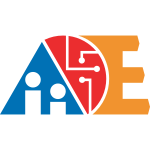 AIIDE-2011-YuT #algorithm #generative #personalisation
AIIDE-2011-YuT #algorithm #generative #personalisation- Personalized Procedural Content Generation to Minimize Frustration and Boredom Based on Ranking Algorithm (HY, TT).
 OCSC-2011-YongpisanpopOM #collaboration #community #web
OCSC-2011-YongpisanpopOM #collaboration #community #web- Community Search: A Collaborative Searching Web Application with a User Ranking System (PY, MO, KiM), pp. 378–386.
 CIKM-2011-AktolgaA #query
CIKM-2011-AktolgaA #query- Reranking search results for sparse queries (EA, JA), pp. 173–182.
 CIKM-2011-BachmannSLS #database
CIKM-2011-BachmannSLS #database- Extracting cross references from life science databases for search result ranking (AB, RS, ML, MS), pp. 1253–1258.
 CIKM-2011-BicerTN #keyword #modelling #using
CIKM-2011-BicerTN #keyword #modelling #using- Ranking support for keyword search on structured data using relevance models (VB, TT, RN), pp. 1669–1678.
 CIKM-2011-BressanP #rank
CIKM-2011-BressanP #rank- Local computation of PageRank: the ranking side (MB, LP), pp. 631–640.
 CIKM-2011-CardosoM #similarity
CIKM-2011-CardosoM #similarity- Google, bing and a new perspective on ranking similarity (BC, JM), pp. 1933–1936.
 CIKM-2011-JameelLYC
CIKM-2011-JameelLYC - An unsupervised ranking method based on a technical difficulty terrain (SJ, WL, CmAY, SC), pp. 1989–1992.
 CIKM-2011-KalyanpurPBLC #composition
CIKM-2011-KalyanpurPBLC #composition- Fact-based question decomposition for candidate answer re-ranking (AK, SP, BB, AL, JCC), pp. 2045–2048.
 CIKM-2011-NiuLX #graph #named #using
CIKM-2011-NiuLX #graph #named #using- DIGRank: using global degree to facilitate ranking in an incomplete graph (XN, LL, KX), pp. 2297–2300.
 CIKM-2011-RamanJS #learning
CIKM-2011-RamanJS #learning- Structured learning of two-level dynamic rankings (KR, TJ, PS), pp. 291–296.
 CIKM-2011-SafadiQ #retrieval #video
CIKM-2011-SafadiQ #retrieval #video- Re-ranking by local re-scoring for video indexing and retrieval (BS, GQ), pp. 2081–2084.
 CIKM-2011-SahayRP #social #web
CIKM-2011-SahayRP #social #web- Social ranking for spoken web search (SS, NR, NP), pp. 1835–1840.
 CIKM-2011-SellamanickamGS #approach #learning
CIKM-2011-SellamanickamGS #approach #learning- A pairwise ranking based approach to learning with positive and unlabeled examples (SS, PG, SKS), pp. 663–672.
 CIKM-2011-StyskinRVS #set
CIKM-2011-StyskinRVS #set- Recency ranking by diversification of result set (AS, FR, FV, PS), pp. 1949–1952.
 CIKM-2011-UysalC #approach #microblog #twitter
CIKM-2011-UysalC #approach #microblog #twitter- User oriented tweet ranking: a filtering approach to microblogs (IU, WBC), pp. 2261–2264.
 CIKM-2011-WangC #information retrieval #modelling #probability #statistics
CIKM-2011-WangC #information retrieval #modelling #probability #statistics- Statistical information retrieval modelling: from the probability ranking principle to recent advances in diversity, portfolio theory, and beyond (JW, KCT), pp. 2603–2604.
 CIKM-2011-XuJL #image #mining #online
CIKM-2011-XuJL #image #mining #online- Retrieving and ranking unannotated images through collaboratively mining online search results (SX, HJ, FCML), pp. 485–494.
 CIKM-2011-YamamotoNT #interface #named
CIKM-2011-YamamotoNT #interface #named- RerankEverything: a reranking interface for exploring search results (TY, SN, KT), pp. 1913–1916.
 CIKM-2011-ZhuCXCT #category theory #towards
CIKM-2011-ZhuCXCT #category theory #towards- Towards expert finding by leveraging relevant categories in authority ranking (HZ, HC, HX, EC, JT), pp. 2221–2224.
 CIKM-2011-ZwolV
CIKM-2011-ZwolV - Object ranking (RvZ, SV), pp. 2613–2614.
 ECIR-2011-AktolgaAS #using
ECIR-2011-AktolgaAS #using- Passage Reranking for Question Answering Using Syntactic Structures and Answer Types (EA, JA, DAS), pp. 617–628.
 ECIR-2011-BelloginWC #collaboration #retrieval
ECIR-2011-BelloginWC #collaboration #retrieval- Text Retrieval Methods for Item Ranking in Collaborative Filtering (AB, JW, PC), pp. 301–306.
 ECIR-2011-BuffoniTG
ECIR-2011-BuffoniTG - The Importance of the Depth for Text-Image Selection Strategy in Learning-To-Rank (DB, ST, PG), pp. 743–746.
 ECIR-2011-CaiGWZ #adaptation
ECIR-2011-CaiGWZ #adaptation- Weight-Based Boosting Model for Cross-Domain Relevance Ranking Adaptation (PC, WG, KFW, AZ), pp. 562–567.
 ECIR-2011-IofciuDCV #effectiveness #feedback #named
ECIR-2011-IofciuDCV #effectiveness #feedback #named- ReFER: Effective Relevance Feedback for Entity Ranking (TI, GD, NC, APdV), pp. 264–276.
 ECIR-2011-MacdonaldO #learning #modelling
ECIR-2011-MacdonaldO #learning #modelling- Learning Models for Ranking Aggregates (CM, IO), pp. 517–529.
 ECIR-2011-SafadiQ #multi #retrieval
ECIR-2011-SafadiQ #multi #retrieval- Re-ranking for Multimedia Indexing and Retrieval (BS, GQ), pp. 708–711.
 ECIR-2011-ShiLH #collaboration #multi #self
ECIR-2011-ShiLH #collaboration #multi #self- Reranking Collaborative Filtering with Multiple Self-contained Modalities (YS, ML, AH), pp. 699–703.
 ECIR-2011-SteinH
ECIR-2011-SteinH - Introducing the User-over-Ranking Hypothesis (BS, MH), pp. 503–509.
 ECIR-2011-ZhaoZSH #approach #metric #novel #quantum
ECIR-2011-ZhaoZSH #approach #metric #novel #quantum- A Novel Re-ranking Approach Inspired by Quantum Measurement (XZ, PZ, DS, YH), pp. 721–724.
 ICML-2011-KotlowskiDH
ICML-2011-KotlowskiDH - Bipartite Ranking through Minimization of Univariate Loss (WK, KD, EH), pp. 1113–1120.
 ICML-2011-RobbianoC #learning #plugin
ICML-2011-RobbianoC #learning #plugin- Minimax Learning Rates for Bipartite Ranking and Plug-in Rules (SR, SC), pp. 441–448.
 KDD-2011-DubeyCB #graph
KDD-2011-DubeyCB #graph- Diversity in ranking via resistive graph centers (AD, SC, CB), pp. 78–86.
 KDD-2011-GaoLWWL #graph #metadata #scalability
KDD-2011-GaoLWWL #graph #metadata #scalability- Semi-supervised ranking on very large graphs with rich metadata (BG, TYL, WW, TW, HL), pp. 96–104.
 KDD-2011-JinLH #axiom #network #similarity
KDD-2011-JinLH #axiom #network #similarity- Axiomatic ranking of network role similarity (RJ, VEL, HH), pp. 922–930.
 KDD-2011-TongHWKL #graph #optimisation #scalability
KDD-2011-TongHWKL #graph #optimisation #scalability- Diversified ranking on large graphs: an optimization viewpoint (HT, JH, ZW, RK, CYL), pp. 1028–1036.
 KDD-2011-ZhouBS #approach #graph
KDD-2011-ZhouBS #approach #graph- An iterated graph laplacian approach for ranking on manifolds (XZ, MB, NS), pp. 877–885.
 KDIR-2011-KuhlweinUTGH #automation #multi #reasoning
KDIR-2011-KuhlweinUTGH #automation #multi #reasoning- Multi-output Ranking for Automated Reasoning (DK, JU, ET, HG, TH), pp. 42–51.
 RecSys-2011-LeeSKLL #graph #multi #random #recommendation
RecSys-2011-LeeSKLL #graph #multi #random #recommendation- Random walk based entity ranking on graph for multidimensional recommendation (SL, SiS, MK, DL, SgL), pp. 93–100.
 SIGIR-2011-AsadiMEL #learning #pseudo #web
SIGIR-2011-AsadiMEL #learning #pseudo #web- Pseudo test collections for learning web search ranking functions (NA, DM, TE, JJL), pp. 1073–1082.
 SIGIR-2011-BerberichKLZ
SIGIR-2011-BerberichKLZ - Improving local search ranking through external logs (KB, ACK, DL, PZ), pp. 785–794.
 SIGIR-2011-CaiGZW #adaptation #education #query
SIGIR-2011-CaiGZW #adaptation #education #query- Relevant knowledge helps in choosing right teacher: active query selection for ranking adaptation (PC, WG, AZ, KFW), pp. 115–124.
 SIGIR-2011-CuiWLOYS #predict #social #what
SIGIR-2011-CuiWLOYS #predict #social #what- Who should share what?: item-level social influence prediction for users and posts ranking (PC, FW, SL, MO, SY, LS), pp. 185–194.
 SIGIR-2011-EfronG #estimation
SIGIR-2011-EfronG #estimation- Estimation methods for ranking recent information (ME, GG), pp. 495–504.
 SIGIR-2011-GanjisaffarCL #modelling #precise
SIGIR-2011-GanjisaffarCL #modelling #precise- Bagging gradient-boosted trees for high precision, low variance ranking models (YG, RC, CVL), pp. 85–94.
 SIGIR-2011-KanhabuaBM #predict
SIGIR-2011-KanhabuaBM #predict- Ranking related news predictions (NK, RB, MM), pp. 755–764.
 SIGIR-2011-KanhabuaN11a #comparison
SIGIR-2011-KanhabuaN11a #comparison- A comparison of time-aware ranking methods (NK, KN), pp. 1257–1258.
 SIGIR-2011-KanoulasSMPA #algorithm #scalability #set
SIGIR-2011-KanoulasSMPA #algorithm #scalability #set- A large-scale study of the effect of training set characteristics over learning-to-rank algorithms (EK, SS, PM, VP, JAA), pp. 1243–1244.
 SIGIR-2011-KazaiKKM #comparative #crowdsourcing #design #evaluation
SIGIR-2011-KazaiKKM #comparative #crowdsourcing #design #evaluation- Crowdsourcing for book search evaluation: impact of hit design on comparative system ranking (GK, JK, MK, NMF), pp. 205–214.
 SIGIR-2011-LiWLZS #image #multimodal #optimisation #web
SIGIR-2011-LiWLZS #image #multimodal #optimisation #web- Optimizing multimodal reranking for web image search (HL, MW, ZL, ZJZ, JS), pp. 1119–1120.
 SIGIR-2011-SantosMO11a #metric #on the
SIGIR-2011-SantosMO11a #metric #on the- On the suitability of diversity metrics for learning-to-rank for diversity (RLTS, CM, IO), pp. 1185–1186.
 SIGIR-2011-SkoutasA
SIGIR-2011-SkoutasA - Ranking tags in resource collections (DS, MA), pp. 1207–1208.
 SIGIR-2011-SongZXLL #query
SIGIR-2011-SongZXLL #query- Query term ranking based on search results overlap (WS, YZ, YX, TL, SL), pp. 1253–1254.
 SIGIR-2011-WangLM #performance #retrieval
SIGIR-2011-WangLM #performance #retrieval- A cascade ranking model for efficient ranked retrieval (LW, JJL, DM), pp. 105–114.
 SIGIR-2011-XuBCCHLL #image #performance #retrieval
SIGIR-2011-XuBCCHLL #image #performance #retrieval- Efficient manifold ranking for image retrieval (BX, JB, CC, DC, XH, WL, JL), pp. 525–534.
 SIGIR-2011-ZhangMLM #approach #how #information retrieval
SIGIR-2011-ZhangMLM #approach #how #information retrieval- How to count thumb-ups and thumb-downs?: an information retrieval approach to user-rating based ranking of items (DZ, RM, HL, JM), pp. 1223–1224.
 SIGIR-2011-ZucconAR #documentation #interactive
SIGIR-2011-ZucconAR #documentation #interactive- The interactive PRP for diversifying document rankings (GZ, LA, CJvR), pp. 1227–1228.
 TOOLS-EUROPE-2011-FalleriDLVD #performance #retrieval #scalability
TOOLS-EUROPE-2011-FalleriDLVD #performance #retrieval #scalability- Efficient Retrieval and Ranking of Undesired Package Cycles in Large Software Systems (JRF, SD, JL, PV, SD), pp. 260–275.
 ICST-2011-ShenFZ #effectiveness #fault #named
ICST-2011-ShenFZ #effectiveness #fault #named- EFindBugs: Effective Error Ranking for FindBugs (HS, JF, JZ), pp. 299–308.
 SAT-2011-Gelder #multi
SAT-2011-Gelder #multi- Careful Ranking of Multiple Solvers with Timeouts and Ties (AVG), pp. 317–328.
 ECDL-2010-BillerbeckDFIK #query #using #web
ECDL-2010-BillerbeckDFIK #query #using #web- Ranking Entities Using Web Search Query Logs (BB, GD, CSF, TI, RK), pp. 273–281.
 ECDL-2010-KanhabuaN #query
ECDL-2010-KanhabuaN #query- Determining Time of Queries for Re-ranking Search Results (NK, KN), pp. 261–272.
 ECDL-2010-MarianLRV #graph
ECDL-2010-MarianLRV #graph- Citation Graph Based Ranking in Invenio (LM, JYL, MR, MV), pp. 236–247.
 HT-2010-KashoobCK #social #web
HT-2010-KashoobCK #social #web- Community-based ranking of the social web (SK, JC, KYK), pp. 141–150.
 JCDL-2010-GouZCKG #documentation #network #social
JCDL-2010-GouZCKG #documentation #network #social- Social network document ranking (LG, XZ, HHC, JHK, CLG), pp. 313–322.
 VLDB-2010-LiD #dataset #probability
VLDB-2010-LiD #dataset #probability- Ranking Continuous Probabilistic Datasets (JL, AD), pp. 638–649.
 ICALP-v2-2010-BansalJKN #algorithm #approximate
ICALP-v2-2010-BansalJKN #algorithm #approximate- Approximation Algorithms for Diversified Search Ranking (NB, KJ, AK, JN), pp. 273–284.
 FDG-2010-BotvichMOPKK
FDG-2010-BotvichMOPKK - Integrating players, reputation and ranking to manage cheating in MMOGs (DB, JM, GO, SDP, AK, MK), pp. 17–24.
 CAiSE-2010-StecherCNN #integration #query
CAiSE-2010-StecherCNN #integration #query- Query Ranking in Information Integration (RS, SC, CN, WN), pp. 230–235.
 CIKM-2010-BronBR #analysis #component
CIKM-2010-BronBR #analysis #component- Ranking related entities: components and analyses (MB, KB, MdR), pp. 1079–1088.
 CIKM-2010-DuGZC #summary
CIKM-2010-DuGZC #summary- Manifold ranking with sink points for update summarization (PD, JG, JZ, XC), pp. 1757–1760.
 CIKM-2010-GordeviciusELAG #evolution
CIKM-2010-GordeviciusELAG #evolution- Ranking of evolving stories through meta-aggregation (JG, FJE, HCL, PA, JG), pp. 1909–1912.
 CIKM-2010-HarveyRC #modelling #social #topic #using
CIKM-2010-HarveyRC #modelling #social #topic #using- Ranking social bookmarks using topic models (MH, IR, MJC), pp. 1401–1404.
 CIKM-2010-JinW #concept
CIKM-2010-JinW #concept- Discovering, ranking and annotating cross-document relationships between concepts (WJ, XW), pp. 1929–1930.
 CIKM-2010-KameshwaranPMVD #interactive #network
CIKM-2010-KameshwaranPMVD #interactive #network- Outcome aware ranking in interaction networks (SK, VP, SM, NV, KD), pp. 229–238.
 CIKM-2010-KapteinSVK #using #wiki
CIKM-2010-KapteinSVK #using #wiki- Entity ranking using Wikipedia as a pivot (RK, PS, APdV, JK), pp. 69–78.
 CIKM-2010-KotovKDC #profiling #query #web
CIKM-2010-KotovKDC #profiling #query #web- Temporal query log profiling to improve web search ranking (AK, PK, LD, YC), pp. 1149–1158.
 CIKM-2010-KouCZZ #learning
CIKM-2010-KouCZZ #learning- Learning to blend rankings: a monotonic transformation to blend rankings from heterogeneous domains (ZK, YC, ZZ, HZ), pp. 1921–1924.
 CIKM-2010-LiBS #online #overview #predict
CIKM-2010-LiBS #online #overview #predict- Affinity-driven prediction and ranking of products in online product review sites (HL, SSB, AS), pp. 1745–1748.
 CIKM-2010-LiLBZ #optimisation #web
CIKM-2010-LiLBZ #optimisation #web- Optimizing unified loss for web ranking specialization (FL, XL, JB, ZZ), pp. 1593–1596.
 CIKM-2010-LiuCXD #collaboration #personalisation
CIKM-2010-LiuCXD #collaboration #personalisation- Exploiting user interests for collaborative filtering: interests expansion via personalized ranking (QL, EC, HX, CHQD), pp. 1697–1700.
 CIKM-2010-LongCVYZ
CIKM-2010-LongCVYZ - Ranking with auxiliary data (BL, YC, SV, SHY, ZZ), pp. 1489–1492.
 CIKM-2010-MoonDJLZ #behaviour
CIKM-2010-MoonDJLZ #behaviour- User behavior driven ranking without editorial judgments (TM, GD, SJ, CL, ZZ), pp. 1473–1476.
 CIKM-2010-MoonLCLZC #feedback #learning #online #realtime #using
CIKM-2010-MoonLCLZC #feedback #learning #online #realtime #using- Online learning for recency search ranking using real-time user feedback (TM, LL, WC, CL, ZZ, YC), pp. 1501–1504.
 CIKM-2010-MullerSS #adaptation
CIKM-2010-MullerSS #adaptation- Adaptive outlierness for subspace outlier ranking (EM, MS, TS), pp. 1629–1632.
 CIKM-2010-NguyenYLF #case study #experience #learning #multi #using
CIKM-2010-NguyenYLF #case study #experience #learning #multi #using- Experiences with using SVM-based learning for multi-objective ranking (LTN, WGY, RL, OF), pp. 1917–1920.
 CIKM-2010-SayyadiEHR #challenge #personalisation #social #social media
CIKM-2010-SayyadiEHR #challenge #personalisation #social #social media- Challenges in personalized authority flow based ranking of social media (HS, JE, VH, LR), pp. 1409–1412.
 CIKM-2010-WangCWZH #modelling
CIKM-2010-WangCWZH #modelling- Explore click models for search ranking (DW, WC, GW, YZ, BH), pp. 1417–1420.
 CIKM-2010-WangML #constraints
CIKM-2010-WangML #constraints- Ranking under temporal constraints (LW, DM, JJL), pp. 79–88.
 CIKM-2010-WuHL #image #retrieval
CIKM-2010-WuHL #image #retrieval- Group ranking with application to image retrieval (OW, WH, BL), pp. 1441–1444.
 CIKM-2010-ZaragozaCB #question #web
CIKM-2010-ZaragozaCB #question #web- Web search solved?: all result rankings the same? (HZ, BBC, RABY), pp. 529–538.
 CIKM-2010-ZhaoJHSYL #modelling
CIKM-2010-ZhaoJHSYL #modelling- Context modeling for ranking and tagging bursty features in text streams (WXZ, JJ, JH, DS, HY, XL), pp. 1769–1772.
 CIKM-2010-ZhouLMW #approach #documentation
CIKM-2010-ZhouLMW #approach #documentation- A late fusion approach to cross-lingual document re-ranking (DZ, SL, JM, VW), pp. 1433–1436.
 ECIR-2010-AgarwalC #algorithm #information retrieval
ECIR-2010-AgarwalC #algorithm #information retrieval- Maximum Margin Ranking Algorithms for Information Retrieval (SA, MC), pp. 332–343.
 ECIR-2010-PengMO #learning
ECIR-2010-PengMO #learning- Learning to Select a Ranking Function (JP, CM, IO), pp. 114–126.
 ECIR-2010-SaldarriagaMV #information retrieval #online
ECIR-2010-SaldarriagaMV #information retrieval #online- Ranking Fusion Methods Applied to On-Line Handwriting Information Retrieval (SPS, EM, CVG), pp. 253–264.
 ECIR-2010-YinHL #information retrieval #using #wiki
ECIR-2010-YinHL #information retrieval #using #wiki- Promoting Ranking Diversity for Biomedical Information Retrieval Using Wikipedia (XY, XH, ZL), pp. 495–507.
 ECIR-2010-ZucconA #documentation #probability #quantum #rank #using
ECIR-2010-ZucconA #documentation #probability #quantum #rank #using- Using the Quantum Probability Ranking Principle to Rank Interdependent Documents (GZ, LA), pp. 357–369.
 ICML-2010-BordesUW #ambiguity #learning #semantics
ICML-2010-BordesUW #ambiguity #learning #semantics- Label Ranking under Ambiguous Supervision for Learning Semantic Correspondences (AB, NU, JW), pp. 103–110.
 ICML-2010-ChengDH
ICML-2010-ChengDH - Label Ranking Methods based on the Plackett-Luce Model (WC, KD, EH), pp. 215–222.
 ICML-2010-DuchiMJ #algorithm #consistency #on the
ICML-2010-DuchiMJ #algorithm #consistency #on the- On the Consistency of Ranking Algorithms (JCD, LWM, MIJ), pp. 327–334.
 ICML-2010-HuangG #independence #learning
ICML-2010-HuangG #independence #learning- Learning Hierarchical Riffle Independent Groupings from Rankings (JH, CG), pp. 455–462.
 ICML-2010-SlivkinsRG #documentation #learning #scalability
ICML-2010-SlivkinsRG #documentation #learning #scalability- Learning optimally diverse rankings over large document collections (AS, FR, SG), pp. 983–990.
 ICPR-2010-ChangCH #approach #estimation #image
ICPR-2010-ChangCH #approach #estimation #image- A Ranking Approach for Human Ages Estimation Based on Face Images (KYC, CSC, YPH), pp. 3396–3399.
 ICPR-2010-DiamantiniGP
ICPR-2010-DiamantiniGP - Feature Ranking Based on Decision Border (CD, AG, DP), pp. 609–612.
 ICPR-2010-JinLLWG #topic
ICPR-2010-JinLLWG #topic- Topic-Sensitive Tag Ranking (YJ, RL, ZL, KW, XG), pp. 629–632.
 ICPR-2010-LeeJJ #image #retrieval #scalability
ICPR-2010-LeeJJ #image #retrieval #scalability- Unsupervised Ensemble Ranking: Application to Large-Scale Image Retrieval (JEL, RJ, AKJ), pp. 3902–3906.
 ICPR-2010-PiroonratanaWUALC #identification #morphism #nondeterminism #symmetry #using
ICPR-2010-PiroonratanaWUALC #identification #morphism #nondeterminism #symmetry #using- Identification of Ancestry Informative Markers from Chromosome-Wide Single Nucleotide Polymorphisms Using Symmetrical Uncertainty Ranking (TP, WW, TU, AA, CL, NC), pp. 2448–2451.
 ICPR-2010-YangZM #estimation
ICPR-2010-YangZM #estimation- Ranking Model for Facial Age Estimation (PY, LZ, DNM), pp. 3404–3407.
 KDD-2010-ChapelleSVWZT #learning #multi #web
KDD-2010-ChapelleSVWZT #learning #multi #web- Multi-task learning for boosting with application to web search ranking (OC, PKS, SV, KQW, YZ, BLT), pp. 1189–1198.
 KDD-2010-Sculley
KDD-2010-Sculley - Combined regression and ranking (DS), pp. 979–988.
 KDIR-2010-ZhuLC
KDIR-2010-ZhuLC - Ranking Classes of Search Engine Results (ZZ, ML, IJC), pp. 294–301.
 SIGIR-2010-BagherjeiranHR
SIGIR-2010-BagherjeiranHR - Ranking for the conversion funnel (AB, AOH, AR), pp. 146–153.
 SIGIR-2010-CaputoBS #approach #semantics
SIGIR-2010-CaputoBS #approach #semantics- From fusion to re-ranking: a semantic approach (AC, PB, GS), pp. 815–816.
 SIGIR-2010-DiazMA #online
SIGIR-2010-DiazMA #online- Relevance and ranking in online dating systems (FD, DM, SAY), pp. 66–73.
 SIGIR-2010-HeR #approach #automation #detection #generative
SIGIR-2010-HeR #approach #automation #detection #generative- A ranking approach to target detection for automatic link generation (JH, MdR), pp. 831–832.
 SIGIR-2010-KimC #documentation #multi #using
SIGIR-2010-KimC #documentation #multi #using- Ranking using multiple document types in desktop search (JK, WBC), pp. 50–57.
 SIGIR-2010-LongCZCZT #learning #optimisation
SIGIR-2010-LongCZCZT #learning #optimisation- Active learning for ranking through expected loss optimization (BL, OC, YZ, YC, ZZ, BLT), pp. 267–274.
 SIGIR-2010-ParkC #dependence #parsing #query
SIGIR-2010-ParkC #dependence #parsing #query- Query term ranking based on dependency parsing of verbose queries (JHP, WBC), pp. 829–830.
 SIGIR-2010-WooLLSR #retrieval #using
SIGIR-2010-WooLLSR #retrieval #using- Achieving high accuracy retrieval using intra-document term ranking (HWW, JTL, SWL, YIS, HCR), pp. 885–886.
 SIGIR-2010-XiangJPSCL #web
SIGIR-2010-XiangJPSCL #web- Context-aware ranking in web search (BX, DJ, JP, XS, EC, HL), pp. 451–458.
 SIGIR-2010-ZwolPMS
SIGIR-2010-ZwolPMS - Machine learned ranking of entity facets (RvZ, LGP, MM, BS), pp. 879–880.
 SAS-2010-AliasDFG #bound #complexity #multi #source code #termination
SAS-2010-AliasDFG #bound #complexity #multi #source code #termination- Multi-dimensional Rankings, Program Termination, and Complexity Bounds of Flowchart Programs (CA, AD, PF, LG), pp. 117–133.
 SAC-2010-CeciALM #approach #data mining #mining #relational
SAC-2010-CeciALM #approach #data mining #mining #relational- Complex objects ranking: a relational data mining approach (MC, AA, CL, DM), pp. 1071–1077.
 SAC-2010-LecerfC #documentation #layout #retrieval #scalability
SAC-2010-LecerfC #documentation #layout #retrieval #scalability- Scalable indexing for layout based document retrieval and ranking (LL, BC), pp. 28–32.
 SAC-2010-MiyanishiSU #generative
SAC-2010-MiyanishiSU #generative- Hypothesis generation and ranking based on event similarities (TM, KS, KU), pp. 1552–1558.
 TACAS-2010-CookKRW #synthesis
TACAS-2010-CookKRW #synthesis- Ranking Function Synthesis for Bit-Vector Relations (BC, DK, PR, CMW), pp. 236–250.
 HT-2009-AbelBBHKP #folksonomy
HT-2009-AbelBBHKP #folksonomy- Context-based ranking in folksonomies (FA, MB, CB, NH, DK, VP), pp. 209–218.
 HT-2009-BruckschenVR #navigation #ontology #topic
HT-2009-BruckschenVR #navigation #ontology #topic- Named entities for hot topics ranking and ontology navigation aid (MB, RV, SJR), pp. 373–374.
 ICDAR-2009-ParakhinH #probability
ICDAR-2009-ParakhinH #probability- Finding the Most Probable Ranking of Objects with Probabilistic Pairwise Preferences (MP, PMH), pp. 616–620.
 JCDL-2009-MurataTMK #using
JCDL-2009-MurataTMK #using- Query-page intention matching using clicked titles and snippets to boost search rankings (MM, HT, YM, RK), pp. 105–114.
 SIGMOD-2009-LiYJ #distributed #probability
SIGMOD-2009-LiYJ #distributed #probability- Ranking distributed probabilistic data (FL, KY, JJ), pp. 361–374.
 VLDB-2009-ChaudhuriD #database #keyword #query
VLDB-2009-ChaudhuriD #database #keyword #query- Keyword querying and Ranking in Databases (SC, GD), pp. 1658–1659.
 VLDB-2009-LiSD #approach #database #probability
VLDB-2009-LiSD #approach #database #probability- A Unified Approach to Ranking in Probabilistic Databases (JL, BS, AD), pp. 502–513.
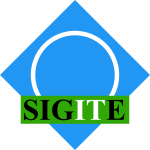 SIGITE-2009-ChristoffersonL
SIGITE-2009-ChristoffersonL - Ranking scholarly outlets for information technology (LRC, BML), pp. 115–126.
 ICSM-2009-YokomoriSNI #component #framework #impact analysis #using
ICSM-2009-YokomoriSNI #component #framework #impact analysis #using- Assessing the impact of framework changes using component ranking (RY, HPS, MN, KI), pp. 189–198.
 CIKM-2009-CarteretteC #documentation #modelling #novel #probability #retrieval #topic
CIKM-2009-CarteretteC #documentation #modelling #novel #probability #retrieval #topic- Probabilistic models of ranking novel documents for faceted topic retrieval (BC, PC), pp. 1287–1296.
 CIKM-2009-ChangYQ #documentation
CIKM-2009-ChangYQ #documentation- Context-sensitive document ranking (LC, JXY, LQ), pp. 1533–1536.
 CIKM-2009-ChuiLKH #query #sequence
CIKM-2009-ChuiLKH #query #sequence- Supporting ranking pattern-based aggregate queries in sequence data cubes (CKC, EL, BK, WSH), pp. 997–1006.
 CIKM-2009-ElbassuoniRSSW #query
CIKM-2009-ElbassuoniRSSW #query- Language-model-based ranking for queries on RDF-graphs (SE, MR, RS, MS, GW), pp. 977–986.
 CIKM-2009-GengYXH #adaptation
CIKM-2009-GengYXH #adaptation- Ranking model adaptation for domain-specific search (BG, LY, CX, XSH), pp. 197–206.
 CIKM-2009-GwaderaC #mining #using
CIKM-2009-GwaderaC #mining #using- Mining and ranking streams of news stories using cross-stream sequential patterns (RG, FC), pp. 1709–1712.
 CIKM-2009-HauffHJA #estimation #set #topic
CIKM-2009-HauffHJA #estimation #set #topic- Relying on topic subsets for system ranking estimation (CH, DH, FdJ, LA), pp. 1859–1862.
 CIKM-2009-HsiaoC #image #retrieval
CIKM-2009-HsiaoC #image #retrieval- Intention-focused active reranking for image object retrieval (JHH, MSC), pp. 157–166.
 CIKM-2009-KrikonKB
CIKM-2009-KrikonKB - Utilizing inter-passage and inter-document similarities for re-ranking search results (EK, OK, MB), pp. 1597–1600.
 CIKM-2009-LeeCKC #approach #dependence #query
CIKM-2009-LeeCKC #approach #dependence #query- A term dependency-based approach for query terms ranking (CJL, RCC, SHK, PJC), pp. 1267–1276.
 CIKM-2009-LiLJZCD #evaluation #robust #web
CIKM-2009-LiLJZCD #evaluation #robust #web- Incorporating robustness into web ranking evaluation (XL, FL, SJ, ZZ, YC, AD), pp. 2007–2010.
 CIKM-2009-LiuB #community
CIKM-2009-LiuB #community- Computational community interest for ranking (XL, VvB), pp. 245–254.
 CIKM-2009-LiuWC #effectiveness #retrieval #xml
CIKM-2009-LiuWC #effectiveness #retrieval #xml- Effective XML content and structure retrieval with relevance ranking (XL, CW, LC), pp. 147–156.
 CIKM-2009-LiuZSNW #clustering #documentation #query
CIKM-2009-LiuZSNW #clustering #documentation #query- Clustering queries for better document ranking (YL, LZ, RS, JYN, JRW), pp. 1569–1572.
 CIKM-2009-MacdonaldO #documentation
CIKM-2009-MacdonaldO #documentation- The influence of the document ranking in expert search (CM, IO), pp. 1983–1986.
 CIKM-2009-PanCASD #feature model #using
CIKM-2009-PanCASD #feature model #using- Feature selection for ranking using boosted trees (FP, TC, DA, FS, GD), pp. 2025–2028.
 CIKM-2009-SongPLZQ #keyword #modelling #topic
CIKM-2009-SongPLZQ #keyword #modelling #topic- Topic and keyword re-ranking for LDA-based topic modeling (YS, SP, SL, MXZ, WQ), pp. 1757–1760.
 CIKM-2009-WangTFCYL
CIKM-2009-WangTFCYL - Heterogeneous cross domain ranking in latent space (BW, JT, WF, SC, ZY, YL), pp. 987–996.
 CIKM-2009-WangWLL #named #query #summary
CIKM-2009-WangWLL #named #query #summary- HyperSum: hypergraph based semi-supervised sentence ranking for query-oriented summarization (WW, FW, WL, SL), pp. 1855–1858.
 CIKM-2009-WeiLWH #framework #interactive #named #summary
CIKM-2009-WeiLWH #framework #interactive #named #summary- iRANK: an interactive ranking framework and its application in query-focused summarization (FW, WL, WW, YH), pp. 1557–1560.
 CIKM-2009-YuOH #performance
CIKM-2009-YuOH #performance- Efficient feature weighting methods for ranking (HY, JO, WSH), pp. 1157–1166.
 CIKM-2009-ZhuCWZWC #divide and conquer #learning #query
CIKM-2009-ZhuCWZWC #divide and conquer #learning #query- To divide and conquer search ranking by learning query difficulty (ZAZ, WC, TW, CZ, GW, ZC), pp. 1883–1886.
 CIKM-2009-ZhuCZWWC #algorithm
CIKM-2009-ZhuCZWWC #algorithm- A general magnitude-preserving boosting algorithm for search ranking (CZ, WC, ZAZ, GW, DW, ZC), pp. 817–826.
 ECIR-2009-Ailon #algorithm #linear #query #using
ECIR-2009-Ailon #algorithm #linear #query #using- A Simple Linear Ranking Algorithm Using Query Dependent Intercept Variables (NA), pp. 685–690.
 ECIR-2009-DemartiniGN
ECIR-2009-DemartiniGN - A Vector Space Model for Ranking Entities and Its Application to Expert Search (GD, JG, WN), pp. 189–201.
 ECIR-2009-GaoNZW #multi #web
ECIR-2009-GaoNZW #multi #web- Joint Ranking for Multilingual Web Search (WG, CN, MZ, KFW), pp. 114–125.
 ECIR-2009-Wang #analysis #documentation #information retrieval
ECIR-2009-Wang #analysis #documentation #information retrieval- Mean-Variance Analysis: A New Document Ranking Theory in Information Retrieval (JW0), pp. 4–16.
 ICML-2009-ChengHH #learning
ICML-2009-ChengHH #learning- Decision tree and instance-based learning for label ranking (WC, JCH, EH), pp. 161–168.
 ICML-2009-GuiverS #modelling
ICML-2009-GuiverS #modelling- Bayesian inference for Plackett-Luce ranking models (JG, ES), pp. 377–384.
 ICML-2009-LanLML #algorithm #analysis
ICML-2009-LanLML #algorithm #analysis- Generalization analysis of listwise learning-to-rank algorithms (YL, TYL, ZM, HL), pp. 577–584.
 ICML-2009-Rueping
ICML-2009-Rueping - Ranking interesting subgroups (SR), pp. 913–920.
 ICML-2009-UsunierBG #classification #order
ICML-2009-UsunierBG #classification #order- Ranking with ordered weighted pairwise classification (NU, DB, PG), pp. 1057–1064.
 ICML-2009-VolkovsZ #learning #named
ICML-2009-VolkovsZ #learning #named- BoltzRank: learning to maximize expected ranking gain (MV, RSZ), pp. 1089–1096.
 KDD-2009-Delage #library #online
KDD-2009-Delage #library #online- Regret-based online ranking for a growing digital library (ED), pp. 229–238.
 KDD-2009-RendleMNS #learning #recommendation
KDD-2009-RendleMNS #learning #recommendation- Learning optimal ranking with tensor factorization for tag recommendation (SR, LBM, AN, LST), pp. 727–736.
 KDD-2009-WangWZ #named #quality #web
KDD-2009-WangWZ #named #quality #web- PSkip: estimating relevance ranking quality from web search clickthrough data (KW, TW, ZZ), pp. 1355–1364.
 RecSys-2009-HelouSSG #process #recommendation
RecSys-2009-HelouSSG #process #recommendation- The 3A contextual ranking system: simultaneously recommending actors, assets, and group activities (SEH, CS, SS, DG), pp. 373–376.
 RecSys-2009-MarlinZ #collaboration #predict
RecSys-2009-MarlinZ #collaboration #predict- Collaborative prediction and ranking with non-random missing data (BMM, RSZ), pp. 5–12.
 SIGIR-2009-AmbaiY #clustering #image #multi #set #visual notation
SIGIR-2009-AmbaiY #clustering #image #multi #set #visual notation- Multiclass VisualRank: image ranking method in clustered subsets based on visual features (MA, YY), pp. 732–733.
 SIGIR-2009-AminiU #algorithm #information management #multi #summary
SIGIR-2009-AminiU #algorithm #information management #multi #summary- Incorporating prior knowledge into a transductive ranking algorithm for multi-document summarization (MRA, NU), pp. 704–705.
 SIGIR-2009-AslamKPSY #documentation #effectiveness #performance
SIGIR-2009-AslamKPSY #documentation #effectiveness #performance- Document selection methodologies for efficient and effective learning-to-rank (JAA, EK, VP, SS, EY), pp. 468–475.
 SIGIR-2009-Carterette #correlation #distance #on the #rank
SIGIR-2009-Carterette #correlation #distance #on the #rank- On rank correlation and the distance between rankings (BC), pp. 436–443.
 SIGIR-2009-ChangDLZ #topic
SIGIR-2009-ChangDLZ #topic- Enhancing topical ranking with preferences from click-through data (YC, AD, CL, ZZ), pp. 666–667.
 SIGIR-2009-GaoYLDN #web
SIGIR-2009-GaoYLDN #web- Smoothing clickthrough data for web search ranking (JG, WY, XL, KD, JYN), pp. 355–362.
 SIGIR-2009-GuanBMCW #graph #multi #personalisation #recommendation #using
SIGIR-2009-GuanBMCW #graph #multi #personalisation #recommendation #using- Personalized tag recommendation using graph-based ranking on multi-type interrelated objects (ZG, JB, QM, CC, CW), pp. 540–547.
 SIGIR-2009-HuangH #approach #information retrieval #learning
SIGIR-2009-HuangH #approach #information retrieval #learning- A bayesian learning approach to promoting diversity in ranking for biomedical information retrieval (XH, QH), pp. 307–314.
 SIGIR-2009-JiangHL #approach
SIGIR-2009-JiangHL #approach- A ranking approach to keyphrase extraction (XJ, YH, HL), pp. 756–757.
 SIGIR-2009-JinW #named
SIGIR-2009-JinW #named- CDPRanking: discovering and ranking cross-document paths between entities (WJ, XW), p. 844.
 SIGIR-2009-JiZLZXCSZ
SIGIR-2009-JiZLZXCSZ - Global ranking by exploiting user clicks (SJ, KZ, CL, ZZ, GRX, OC, GS, HZ), pp. 35–42.
 SIGIR-2009-LiLJZ #robust #web
SIGIR-2009-LiLJZ #robust #web- Comparing both relevance and robustness in selection of web ranking functions (FL, XL, SJ, ZZ), pp. 648–649.
 SIGIR-2009-LiLLL #framework #information retrieval #probability #topic
SIGIR-2009-LiLLL #framework #information retrieval #probability #topic- A probabilistic topic-based ranking framework for location-sensitive domain information retrieval (HL, ZL, WCL, DLL), pp. 331–338.
 SIGIR-2009-Liu #community #using
SIGIR-2009-Liu #community #using- Using computational community interest as an indicator for ranking (XL), p. 851.
 SIGIR-2009-LiuMH #multi #named #visual notation
SIGIR-2009-LiuMH #multi #named #visual notation- CrowdReranking: exploring multiple search engines for visual search reranking (YL, TM, XSH), pp. 500–507.
 SIGIR-2009-MacdonaldO #documentation #on the
SIGIR-2009-MacdonaldO #documentation #on the- On perfect document rankings for expert search (CM, IO), pp. 740–741.
 SIGIR-2009-NollYGMS #folksonomy
SIGIR-2009-NollYGMS #folksonomy- Telling experts from spammers: expertise ranking in folksonomies (MGN, CmAY, NG, CM, NS), pp. 612–619.
 SIGIR-2009-SunQTW #learning #metric #rank #robust
SIGIR-2009-SunQTW #learning #metric #rank #robust- Robust sparse rank learning for non-smooth ranking measures (ZS, TQ, QT, JW), pp. 259–266.
 SIGIR-2009-WangTFZ #community #modelling #reasoning
SIGIR-2009-WangTFZ #community #modelling #reasoning- Ranking community answers by modeling question-answer relationships via analogical reasoning (XJW, XT, DF, LZ), pp. 179–186.
 SIGIR-2009-YangWGH #learning #query #web
SIGIR-2009-YangWGH #learning #query #web- Query sampling for ranking learning in web search (LY, LW, BG, XSH), pp. 754–755.
 SAC-2009-AbreuMSG #fault #locality
SAC-2009-AbreuMSG #fault #locality- Refining spectrum-based fault localization rankings (RA, WM, MS, AJCvG), pp. 409–414.
 SAC-2009-BacharM #classification #novel
SAC-2009-BacharM #classification #novel- A novel distance-based classifier built on pattern ranking (DB, RM), pp. 1427–1432.
 CASE-2009-FanL #effectiveness
CASE-2009-FanL #effectiveness- A Bayesian Ranking Scheme for supporting cost-effective yield diagnosis services (CMF, YPL), pp. 427–432.
 DAC-2009-CallegariWB #analysis
DAC-2009-CallegariWB #analysis- Speedpath analysis based on hypothesis pruning and ranking (NC, LCW, PB), pp. 346–351.
 DAC-2009-XiongVZ #correlation #statistics
DAC-2009-XiongVZ #correlation #statistics- Statistical ordering of correlated timing quantities and its application for path ranking (JX, CV, VZ), pp. 122–125.
 STOC-2009-AzarGY #multi
STOC-2009-AzarGY #multi- Multiple intents re-ranking (YA, IG, XY), pp. 669–678.
 CAV-2009-Ben-Amram #constraints #termination
CAV-2009-Ben-Amram #constraints #termination- Size-Change Termination, Monotonicity Constraints and Ranking Functions (AMBA), pp. 109–123.
 HT-2008-LeeBG #community #similarity #using
HT-2008-LeeBG #community #similarity #using- Extracting and ranking viral communities using seeds and content similarity (HCL, AB, LG), pp. 139–148.
 SIGMOD-2008-FengFN #order
SIGMOD-2008-FengFN #order- Discovering bucket orders from full rankings (JF, QF, WN), pp. 55–66.
 SIGMOD-2008-HuaPZL #approach #nondeterminism #probability #query
SIGMOD-2008-HuaPZL #approach #nondeterminism #probability #query- Ranking queries on uncertain data: a probabilistic threshold approach (MH, JP, WZ, XL), pp. 673–686.
 SIGMOD-2008-KasneciSIERW #named
SIGMOD-2008-KasneciSIERW #named- NAGA: harvesting, searching and ranking knowledge (GK, FMS, GI, SE, MR, GW), pp. 1285–1288.
 SIGMOD-2008-WuXH #named #query
SIGMOD-2008-WuXH #named #query- ARCube: supporting ranking aggregate queries in partially materialized data cubes (TW, DX, JH), pp. 79–92.
 ICEIS-ISAS2-2008-PivetaMPAGP #process #refactoring #using
ICEIS-ISAS2-2008-PivetaMPAGP #process #refactoring #using- Ranking Refactoring Patterns Using the Analytical Hierarchy Process (EKP, AMDM, MSP, JA, PG, RTP), pp. 195–200.
 CIKM-2008-AbelHK #folksonomy #question
CIKM-2008-AbelHK #folksonomy #question- Ranking in folksonomy systems: can context help? (FA, NH, DK), pp. 1429–1430.
 CIKM-2008-CarvalhoECC
CIKM-2008-CarvalhoECC - Suppressing outliers in pairwise preference ranking (VRC, JLE, WWC, JGC), pp. 1487–1488.
 CIKM-2008-ChenLWSHT #adaptation #named
CIKM-2008-ChenLWSHT #adaptation #named- Trada: tree based ranking function adaptation (KC, RL, CKW, GS, LPH, BLT), pp. 1143–1152.
 CIKM-2008-ChenWSZ
CIKM-2008-ChenWSZ - Semi-supervised ranking aggregation (SC, FW, YS, CZ), pp. 1427–1428.
 CIKM-2008-DouSYW #learning #question #web
CIKM-2008-DouSYW #learning #question #web- Are click-through data adequate for learning web search rankings? (ZD, RS, XY, JRW), pp. 73–82.
 CIKM-2008-MacdonaldO
CIKM-2008-MacdonaldO - Key blog distillation: ranking aggregates (CM, IO), pp. 1043–1052.
 CIKM-2008-TodaYMK
CIKM-2008-TodaYMK - Incorporating place name extents into geo-ir ranking (HT, NY, YM, RK), pp. 1489–1490.
 CIKM-2008-WangTL #hybrid #named #scalability #towards
CIKM-2008-WangTL #hybrid #named #scalability #towards- CE2: towards a large scale hybrid search engine with integrated ranking support (HW, TT, CL), pp. 1323–1324.
 CIKM-2008-WangZRM #automation #online #topic #using
CIKM-2008-WangZRM #automation #online #topic #using- Automatic online news topic ranking using media focus and user attention based on aging theory (CW, MZ, LR, SM), pp. 1033–1042.
 ECIR-2008-CarvalhoC
ECIR-2008-CarvalhoC - Ranking Users for Intelligent Message Addressing (VRC, WWC), pp. 321–333.
 ECIR-2008-DemartiniCBN #category theory #web
ECIR-2008-DemartiniCBN #category theory #web- Ranking Categories for Web Search (GD, PAC, IB, WN), pp. 564–569.
 ECIR-2008-NaKL08a #clustering #retrieval
ECIR-2008-NaKL08a #clustering #retrieval- Structural Re-ranking with Cluster-Based Retrieval (SHN, ISK, JHL), pp. 658–662.
 ECIR-2008-PehcevskiVT #locality #wiki
ECIR-2008-PehcevskiVT #locality #wiki- Exploiting Locality of Wikipedia Links in Entity Ranking (JP, AMV, JAT), pp. 258–269.
 ICML-2008-BergeronZBB #multi
ICML-2008-BergeronZBB #multi- Multiple instance ranking (CB, JZ, CMB, KPB), pp. 48–55.
 ICML-2008-OuyangG #learning
ICML-2008-OuyangG #learning- Learning dissimilarities by ranking: from SDP to QP (HO, AGG), pp. 728–735.
 ICML-2008-RadlinskiKJ #learning #multi
ICML-2008-RadlinskiKJ #learning #multi- Learning diverse rankings with multi-armed bandits (FR, RK, TJ), pp. 784–791.
 ICPR-2008-XiaRH #invariant #robust #visual notation
ICPR-2008-XiaRH #invariant #robust #visual notation- Ranking the local invariant features for the robust visual saliencies (SX, PR, ERH), pp. 1–4.
 ICPR-2008-ZhangW #clustering #order
ICPR-2008-ZhangW #clustering #order- Partial closure-based constrained clustering with order ranking (SZ, HSW), pp. 1–4.
 ICPR-2008-ZitouniSOD #algorithm #graph #image #using #web
ICPR-2008-ZitouniSOD #algorithm #graph #image #using #web- Re-ranking of web image search results using a graph algorithm (HZ, SGS, DO, PD), pp. 1–4.
 KDD-2008-ChakrabartiKSB #learning
KDD-2008-ChakrabartiKSB #learning- Structured learning for non-smooth ranking losses (SC, RK, US, CB), pp. 88–96.
 RecSys-2008-ZanardiC #recommendation #social #using
RecSys-2008-ZanardiC #recommendation #social #using- Social ranking: uncovering relevant content using tag-based recommender systems (VZ, LC), pp. 51–58.
 SIGIR-2008-AminiTG #algorithm #learning
SIGIR-2008-AminiTG #algorithm #learning- A boosting algorithm for learning bipartite ranking functions with partially labeled data (MRA, TVT, CG), pp. 99–106.
 SIGIR-2008-BenderskyK #graph #using
SIGIR-2008-BenderskyK #graph #using- Re-ranking search results using document-passage graphs (MB, OK), pp. 853–854.
 SIGIR-2008-GengLQALS #nearest neighbour #query #using
SIGIR-2008-GengLQALS #nearest neighbour #query #using- Query dependent ranking using K-nearest neighbor (XG, TYL, TQ, AA, HL, HYS), pp. 115–122.
 SIGIR-2008-HeMO08a #using
SIGIR-2008-HeMO08a #using- Ranking opinionated blog posts using OpinionFinder (BH, CM, IO), pp. 727–728.
 SIGIR-2008-HuH
SIGIR-2008-HuH - A reranking model for genomics aspect search (QH, XH), pp. 783–784.
 SIGIR-2008-Kurland #approach #clustering #documentation
SIGIR-2008-Kurland #approach #clustering #documentation- The opposite of smoothing: a language model approach to ranking query-specific document clusters (OK), pp. 171–178.
 SIGIR-2008-LiuLLJ #clustering #geometry #query
SIGIR-2008-LiuLLJ #clustering #geometry #query- Spectral geometry for simultaneously clustering and ranking query search results (YL, WL, YL, LJ), pp. 539–546.
 SIGIR-2008-MerhavF #multi #on the #peer-to-peer
SIGIR-2008-MerhavF #multi #on the #peer-to-peer- On multiword entity ranking in peer-to-peer search (YM, OF), pp. 859–860.
 SIGIR-2008-RodeSH
SIGIR-2008-RodeSH - Combining document- and paragraph-based entity ranking (HR, PS, DH), pp. 851–852.
 SAC-2008-Blomqvist #automation #ontology
SAC-2008-Blomqvist #automation #ontology- Pattern ranking for semi-automatic ontology construction (EB), pp. 2248–2255.
 SAC-2008-ConstantinA #distributed #xml
SAC-2008-ConstantinA #distributed #xml- Usage-based ranking of distributed XML data (CC, BA), pp. 1008–1012.
 SAC-2008-LeeH #quality
SAC-2008-LeeH #quality- Ranking with tagging as quality indicators (JL, SwH), pp. 2432–2436.
 SAC-2008-TanWC #categorisation #performance
SAC-2008-TanWC #categorisation #performance- An efficient feature ranking measure for text categorization (ST, YW, XC), pp. 407–413.
 SAC-2008-VercoustreTP #wiki
SAC-2008-VercoustreTP #wiki- Entity ranking in Wikipedia (AMV, JAT, JP), pp. 1101–1106.
 HPDC-2008-LaforenzaNS #collaboration #workflow
HPDC-2008-LaforenzaNS #collaboration #workflow- Collaborative ranking of grid-enabled workflow service providers (DL, FMN, FS), pp. 227–228.
 PDP-2008-Gomez-PantojaM #distributed #query
PDP-2008-Gomez-PantojaM #distributed #query- Load Balancing Distributed Inverted Files: Query Ranking (CGP, MM), pp. 329–333.
 ESOP-2008-ChawdharyCGSY #abstraction
ESOP-2008-ChawdharyCGSY #abstraction- Ranking Abstractions (AC, BC, SG, MS, HY), pp. 148–162.
 TACAS-2008-Ben-AmramC #approach #satisfiability #termination
TACAS-2008-Ben-AmramC #approach #satisfiability #termination- A SAT-Based Approach to Size Change Termination with Global Ranking Functions (AMBA, MC), pp. 218–232.
 CAV-2008-AlurKW #automaton #game studies #requirements
CAV-2008-AlurKW #automaton #game studies #requirements- Ranking Automata and Games for Prioritized Requirements (RA, AK, GW), pp. 240–253.
 JCDL-2007-YanL #community #database #metric #research #towards
JCDL-2007-YanL #community #database #metric #research #towards- Toward alternative measures for ranking venues: a case of database research community (SY, DL), pp. 235–244.
 SIGMOD-2007-AgrawalEKV
SIGMOD-2007-AgrawalEKV - Auditing disclosure by relevance ranking (RA, AVE, JK, RV), pp. 79–90.
 SIGMOD-2007-LiWLWC #clustering
SIGMOD-2007-LiWLWC #clustering- Supporting ranking and clustering as generalized order-by and group-by (CL, MW, LL, HW, KCCC), pp. 127–138.
 SIGMOD-2007-XinHC #ad hoc
SIGMOD-2007-XinHC #ad hoc- Progressive and selective merge: computing top-k with ad-hoc ranking functions (DX, JH, KCCC), pp. 103–114.
 VLDB-2007-SchnaitterSP #estimation #optimisation #query
VLDB-2007-SchnaitterSP #estimation #optimisation #query- Depth Estimation for Ranking Query Optimization (KS, JS, NP), pp. 902–913.
 CHI-2007-CuiWXTT #clustering #interactive #named
CHI-2007-CuiWXTT #clustering #interactive #named- EasyAlbum: an interactive photo annotation system based on face clustering and re-ranking (JC, FW, RX, YT, XT), pp. 367–376.
 OCSC-2007-SagaT #network #social
OCSC-2007-SagaT #network #social- Ranking Method for Mediators in Social Network (RS, HT), pp. 151–159.
 CAiSE-2007-CostacheNP #distributed #personalisation
CAiSE-2007-CostacheNP #distributed #personalisation- Personalizing PageRank-Based Ranking over Distributed Collections (SC, WN, RP), pp. 111–126.
 ICEIS-AIDSS-2007-RoviraASPV
ICEIS-AIDSS-2007-RoviraASPV - Group Decision Systems for Ranking and Selection — An Application to the Accreditation of Doping Control Laboratories (XR, NA, MS, FP, MV), pp. 82–87.
 CIKM-2007-SongZYZD #distance #estimation #learning #metric
CIKM-2007-SongZYZD #distance #estimation #learning #metric- Ranking with semi-supervised distance metric learning and its application to housing potential estimation (YS, BZ, WJY, CZ, JD), pp. 975–978.
 CIKM-2007-VieiraFDGRR #network #performance #social
CIKM-2007-VieiraFDGRR #network #performance #social- Efficient search ranking in social networks (MVV, BMF, RD, PBG, DdCR, BARN), pp. 563–572.
 CIKM-2007-ZaragozaRMACA #wiki
CIKM-2007-ZaragozaRMACA #wiki- Ranking very many typed entities on wikipedia (HZ, HR, PM, JA, MC, GA), pp. 1015–1018.
 ECIR-2007-GengWLZ
ECIR-2007-GengWLZ - Fighting Link Spam with a Two-Stage Ranking Strategy (GG, CW, QL, YZ), pp. 699–702.
 ECIR-2007-QuarteroniMMB #classification
ECIR-2007-QuarteroniMMB #classification- Advanced Structural Representations for Question Classification and Answer Re-ranking (SQ, AM, SM, RB), pp. 234–245.
 ECIR-2007-SunG #library
ECIR-2007-SunG #library- Popularity Weighted Ranking for Academic Digital Libraries (YS, CLG), pp. 605–612.
 ECIR-2007-YuSLWM #image #using
ECIR-2007-YuSLWM #image #using- Improve Ranking by Using Image Information (QY, SS, ZL, JRW, WYM), pp. 645–652.
 ICML-2007-CortesMR #algorithm
ICML-2007-CortesMR #algorithm- Magnitude-preserving ranking algorithms (CC, MM, AR), pp. 169–176.
 ICML-2007-XuF #learning #linear #on the
ICML-2007-XuF #learning #linear #on the- On learning linear ranking functions for beam search (YX, AF), pp. 1047–1054.
 KDD-2007-BeckerA #concept #realtime #using
KDD-2007-BeckerA #concept #realtime #using- Real-time ranking with concept drift using expert advice (HB, MA), pp. 86–94.
 KDD-2007-ParkP #collaboration
KDD-2007-ParkP #collaboration- Applying collaborative filtering techniques to movie search for better ranking and browsing (STP, DMP), pp. 550–559.
 KDD-2007-RadlinskiJ #learning
KDD-2007-RadlinskiJ #learning- Active exploration for learning rankings from clickthrough data (FR, TJ), pp. 570–579.
 SIGIR-2007-Abou-AssalehG
SIGIR-2007-Abou-AssalehG - Geographic ranking for a local search engine (TAA, WG), p. 911.
 SIGIR-2007-AlmeidaGCC #adaptation #approach #component #programming #search-based
SIGIR-2007-AlmeidaGCC #adaptation #approach #component #programming #search-based- A combined component approach for finding collection-adapted ranking functions based on genetic programming (HMdA, MAG, MC, PC), pp. 399–406.
 SIGIR-2007-GengLQL #feature model
SIGIR-2007-GengLQL #feature model- Feature selection for ranking (XG, TYL, TQ, HL), pp. 407–414.
 SIGIR-2007-Haubold #retrieval #video
SIGIR-2007-Haubold #retrieval #video- Selection and ranking of text from highly imperfect transcripts for retrieval of video content (AH), pp. 791–792.
 SIGIR-2007-JurczykA #analysis
SIGIR-2007-JurczykA #analysis- Hits on question answer portals: exploration of link analysis for author ranking (PJ, EA), pp. 845–846.
 SIGIR-2007-KoNS #probability #visual notation
SIGIR-2007-KoNS #probability #visual notation- A probabilistic graphical model for joint answer ranking in question answering (JK, EN, LS), pp. 343–350.
 SIGIR-2007-LiaoC #query
SIGIR-2007-LiaoC #query- Applying ranking SVM in query relaxation (CL, TC), pp. 763–764.
 SIGIR-2007-NieDW #community
SIGIR-2007-NieDW #community- Ranking by community relevance (LN, BDD, BW), pp. 873–874.
 SIGIR-2007-OBrienA
SIGIR-2007-OBrienA - Focused ranking in a vertical search engine (PO, TAA), p. 912.
 SIGIR-2007-QinZWLLL #multi
SIGIR-2007-QinZWLLL #multi- Ranking with multiple hyperplanes (TQ, XDZ, DSW, TYL, WL, HL), pp. 279–286.
 SIGIR-2007-TsaiLQCM #named
SIGIR-2007-TsaiLQCM #named- FRank: a ranking method with fidelity loss (MFT, TYL, TQ, HHC, WYM), pp. 383–390.
 SIGIR-2007-WuLW #probability #rank
SIGIR-2007-WuLW #probability #rank- Probability ranking principle via optimal expected rank (HCW, RWPL, KFW), pp. 713–714.
 SIGIR-2007-ZhengCSZ #framework #learning #using
SIGIR-2007-ZhengCSZ #framework #learning #using- A regression framework for learning ranking functions using relative relevance judgments (ZZ, KC, GS, HZ), pp. 287–294.
 SAC-2007-HwangY #mining
SAC-2007-HwangY #mining- Mining and processing category ranking (SwH, HY), pp. 441–442.
 SAC-2007-YouH #approach #personalisation
SAC-2007-YouH #approach #personalisation- Personalized ranking: a contextual ranking approach (GwY, SwH), pp. 506–510.
 ISSTA-2007-RenR #fault #heuristic #java #locality
ISSTA-2007-RenR #fault #heuristic #java #locality- Heuristic ranking of java program edits for fault localization (XR, BGR), pp. 239–249.
 DocEng-2006-Ruiz-RicoGR #automation #feature model #named
DocEng-2006-Ruiz-RicoGR #automation #feature model #named- NEWPAR: an automatic feature selection and weighting schema for category ranking (FRR, JLVG, MCRS), pp. 128–137.
 SIGMOD-2006-AgrawalRT
SIGMOD-2006-AgrawalRT - Context-sensitive ranking (RA, RR, ET), pp. 383–394.
 SIGMOD-2006-ChakrabartiGHX
SIGMOD-2006-ChakrabartiGHX - Ranking objects based on relationships (KC, VG, JH, DX), pp. 371–382.
 SIGMOD-2006-LiCI #ad hoc
SIGMOD-2006-LiCI #ad hoc- Supporting ad-hoc ranking aggregates (CL, KCCC, IFI), pp. 61–72.
 SIGMOD-2006-ZhangHCWLC #database #optimisation #query
SIGMOD-2006-ZhangHCWLC #database #optimisation #query- Boolean + ranking: querying a database by k-constrained optimization (ZZ, SwH, KCCC, MW, CAL, YCC), pp. 359–370.
 VLDB-2006-XinHCL #approach #multi #query
VLDB-2006-XinHCL #approach #multi #query- Answering Top-k Queries with Multi-Dimensional Selections: The Ranking Cube Approach (DX, JH, HC, XL), pp. 463–475.
 ICPC-2006-PoshyvanykMRGA #identification #probability #semantics
ICPC-2006-PoshyvanykMRGA #identification #probability #semantics- Combining Probabilistic Ranking and Latent Semantic Indexing for Feature Identification (DP, AM, VR, YGG, GA), pp. 137–148.
 ICSM-2006-TonellaAS #testing #using
ICSM-2006-TonellaAS #testing #using- Using the Case-Based Ranking Methodology for Test Case Prioritization (PT, PA, AS), pp. 123–133.
 CIKM-2006-ChenZJDM #community #multi #web
CIKM-2006-ChenZJDM #community #multi #web- Ranking web objects from multiple communities (LC, LZ, FJ, KD, WYM), pp. 377–386.
 CIKM-2006-Melucci #using
CIKM-2006-Melucci #using- Ranking in context using vector spaces (MM), pp. 866–867.
 CIKM-2006-SuWHL #database #e-commerce #query #web
CIKM-2006-SuWHL #database #e-commerce #query #web- Query result ranking over e-commerce web databases (WS, JW, QH, FHL), pp. 575–584.
 CIKM-2006-TaylorZCRB #multi #optimisation #parametricity
CIKM-2006-TaylorZCRB #multi #optimisation #parametricity- Optimisation methods for ranking functions with multiple parameters (MJT, HZ, NC, SR, CB), pp. 585–593.
 CIKM-2006-YangJZNX #clustering #documentation #using #validation
CIKM-2006-YangJZNX #clustering #documentation #using #validation- Document re-ranking using cluster validation and label propagation (LY, DHJ, GZ, NY, GX), pp. 690–697.
 CIKM-2006-ZhouC #framework #novel #performance #predict #query #robust
CIKM-2006-ZhouC #framework #novel #performance #predict #query #robust- Ranking robustness: a novel framework to predict query performance (YZ, WBC), pp. 567–574.
 CIKM-2006-ZhuangC #query #using
CIKM-2006-ZhuangC #query #using- Re-ranking search results using query logs (ZZ, SC), pp. 860–861.
 ECIR-2006-BogersB
ECIR-2006-BogersB - Authoritative Re-ranking of Search Results (TB, AvdB), pp. 519–522.
 ECIR-2006-BoydellS #collaboration #web
ECIR-2006-BoydellS #collaboration #web- Title and Snippet Based Result Re-ranking in Collaborative Web Search (OB, BS), pp. 484–487.
 ECIR-2006-VittautG #information retrieval #machine learning
ECIR-2006-VittautG #information retrieval #machine learning- Machine Learning Ranking for Structured Information Retrieval (JNV, PG), pp. 338–349.
 ECIR-2006-YaoWLLM #layout #visual notation #web
ECIR-2006-YaoWLLM #layout #visual notation #web- Ranking Web News Via Homepage Visual Layout and Cross-Site Voting (JY, JW, ZL, ML, WYM), pp. 131–142.
 ICML-2006-Agarwal #graph
ICML-2006-Agarwal #graph- Ranking on graph data (SA0), pp. 25–32.
 ICML-2006-HuangLW
ICML-2006-HuangLW - Ranking individuals by group comparisons (TKH, CJL, RCW), pp. 425–432.
 ICML-2006-SternHG #game studies #predict
ICML-2006-SternHG #game studies #predict- Bayesian pattern ranking for move prediction in the game of Go (DHS, RH, TG), pp. 873–880.
 ICPR-v2-2006-LiLW #feature model #hybrid
ICPR-v2-2006-LiLW #feature model #hybrid- A Hybrid Method of Unsupervised Feature Selection Based on Ranking (YL, BLL, ZFW), pp. 687–690.
 ICPR-v3-2006-ZhuW #scalability
ICPR-v3-2006-ZhuW #scalability- Scalable Representative Instance Selection and Ranking (XZ, XW), pp. 352–355.
 KDD-2006-YanB #classification #optimisation
KDD-2006-YanB #classification #optimisation- Beyond classification and ranking: constrained optimization of the ROI (LY, PB), pp. 948–953.
 SEKE-2006-LiPZXS #component #retrieval
SEKE-2006-LiPZXS #component #retrieval- Ranking Component Retrieval Results by Leveraging User History Information (YL, YP, LZ, BX, JS), pp. 284–289.
 SEKE-2006-WuHY #clustering
SEKE-2006-WuHY #clustering- Salient Phrases-based Clustering and Ranking in Chinese Bulletin Board System (XW, SH, YY), pp. 73–78.
 SIGIR-2006-AgichteinBD #behaviour #web
SIGIR-2006-AgichteinBD #behaviour #web- Improving web search ranking by incorporating user behavior information (EA, EB, STD), pp. 19–26.
 SIGIR-2006-Baeza-YatesBC #algorithm #rank
SIGIR-2006-Baeza-YatesBC #algorithm #rank- Generalizing PageRank: damping functions for link-based ranking algorithms (RABY, PB, CC), pp. 308–315.
 SIGIR-2006-CaoXLLHH #adaptation #documentation #retrieval
SIGIR-2006-CaoXLLHH #adaptation #documentation #retrieval- Adapting ranking SVM to document retrieval (YC, JX, TYL, HL, YH, HWH), pp. 186–193.
 SIGIR-2006-CarteretteP #learning
SIGIR-2006-CarteretteP #learning- Learning a ranking from pairwise preferences (BC, DP), pp. 629–630.
 SIGIR-2006-VinayCMW #effectiveness #on the
SIGIR-2006-VinayCMW #effectiveness #on the- On ranking the effectiveness of searches (VV, IJC, NMF, KRW), pp. 398–404.
 SAC-2006-TsvetinovUC
SAC-2006-TsvetinovUC - Dominance and ranking issues applying interval techniques in pre-negotiations for services (PET, AU, TC), pp. 887–888.
 SAC-2006-WuD #web
SAC-2006-WuD #web- Undue influence: eliminating the impact of link plagiarism on web search rankings (BW, BDD), pp. 1099–1104.
 VMCAI-2006-BalabanCP #abstraction #recursion #source code
VMCAI-2006-BalabanCP #abstraction #recursion #source code- Ranking Abstraction of Recursive Programs (IB, AC, AP), pp. 267–281.
 CBSE-2005-TansalarakC #component
CBSE-2005-TansalarakC #component- Finding a Needle in the Haystack: A Technique for Ranking Matches Between Components (NT, KTC), pp. 171–186.
 ICDAR-2005-HuangDDGH #documentation #layout
ICDAR-2005-HuangDDGH #documentation #layout- Document Ranking by Layout Relevance (MH, DD, DSD, LG, BAH), pp. 362–366.
 ICDAR-2005-KangG #recognition
ICDAR-2005-KangG #recognition- A New Feature Ranking Method in a HMM-Based Handwriting Recognition System (SK, VG), pp. 779–783.
 SIGMOD-2005-ChoRA #quality #web
SIGMOD-2005-ChoRA #quality #web- Page Quality: In Search of an Unbiased Web Ranking (JC, SR, RA), pp. 551–562.
 VLDB-2005-LiSCI #database #named #query #relational
VLDB-2005-LiSCI #database #named #query #relational- RankSQL: Supporting Ranking Queries in Relational Database Management Systems (CL, MAS, KCCC, IFI), pp. 1342–1345.
 VLDB-2005-PandeyROCC #random
VLDB-2005-PandeyROCC #random- Shuffling a Stacked Deck: The Case for Partially Randomized Ranking of Search Engine Results (SP, SR, CO, JC, SC), pp. 781–792.
 ICALP-2005-BradleyMS #principle
ICALP-2005-BradleyMS #principle- The Polyranking Principle (ARB, ZM, HBS), pp. 1349–1361.
 ICALP-2005-DonatoLT #algorithm #analysis #similarity
ICALP-2005-DonatoLT #algorithm #analysis #similarity- Stability and Similarity of Link Analysis Ranking Algorithms (DD, SL, PT), pp. 717–729.
 CHI-2005-Kaki #category theory #documentation #named
CHI-2005-Kaki #category theory #documentation #named- Findex: search result categories help users when document ranking fails (MK), pp. 131–140.
 CIKM-2005-ChiritaDN #detection #named #using
CIKM-2005-ChiritaDN #detection #named #using- MailRank: using ranking for spam detection (PAC, JD, WN), pp. 373–380.
 CIKM-2005-FengAAS #query #scalability
CIKM-2005-FengAAS #query #scalability- Scalable ranking for preference queries (YF, DA, AEA, AKS), pp. 313–314.
 ECIR-2005-AminiUG #algorithm #automation #clustering #summary
ECIR-2005-AminiUG #algorithm #automation #clustering #summary- Automatic Text Summarization Based on Word-Clusters and Ranking Algorithms (MRA, NU, PG), pp. 142–156.
 ICML-2005-BreitenbachG #clustering
ICML-2005-BreitenbachG #clustering- Clustering through ranking on manifolds (MB, GZG), pp. 73–80.
 ICML-2005-ZhangJS #naive bayes
ICML-2005-ZhangJS #naive bayes- Augmenting naive Bayes for ranking (HZ, LJ, JS), pp. 1020–1027.
 KDD-2005-Yu #retrieval
KDD-2005-Yu #retrieval- SVM selective sampling for ranking with application to data retrieval (HY), pp. 354–363.
 SIGIR-2005-KurlandL #modelling #rank #using
SIGIR-2005-KurlandL #modelling #rank #using- PageRank without hyperlinks: structural re-ranking using links induced by language models (OK, LL), pp. 306–313.
 SIGIR-2005-PerkioBT #adaptation #algorithm
SIGIR-2005-PerkioBT #adaptation #algorithm- A temporally adaptive content-based relevance ranking algorithm (JP, WLB, HT), pp. 647–648.
 SAC-2005-WangPSV
SAC-2005-WangPSV - Variable selection and ranking for analyzing automobile traffic accident data (HW, ASP, RKS, SVV), pp. 32–37.
 STOC-2005-AilonCN #clustering #consistency
STOC-2005-AilonCN #clustering #consistency- Aggregating inconsistent information: ranking and clustering (NA, MC, AN), pp. 684–693.
 CAV-2005-BradleyMS #linear #reachability
CAV-2005-BradleyMS #linear #reachability- Linear Ranking with Reachability (ARB, ZM, HBS), pp. 491–504.
 ECDL-2004-LarsonF #information retrieval #library
ECDL-2004-LarsonF #information retrieval #library- Spatial Ranking Methods for Geographic Information Retrieval (GIR) in Digital Libraries (RRL, PF), pp. 45–56.
 PODS-2004-FaginKSMV
PODS-2004-FaginKSMV - Comparing and Aggregating Rankings with Ties (RF, RK, MM, DS, EV), pp. 47–58.
 PODS-2004-Tsaparas #using #web
PODS-2004-Tsaparas #using #web- Using Non-Linear Dynamical Systems for Web Searching and Ranking (PT), pp. 59–70.
 VLDB-2004-ChaudhuriDHW #database #probability #query
VLDB-2004-ChaudhuriDHW #database #probability #query- Probabilistic Ranking of Database Query Results (SC, GD, VH, GW), pp. 888–899.
 VLDB-2004-GeertsMT #relational
VLDB-2004-GeertsMT #relational- Relational link-based ranking (FG, HM, ET), pp. 552–563.
 VLDB-2004-HalaschekAAS #rdf #scalability #semantics
VLDB-2004-HalaschekAAS #rdf #scalability #semantics- Discovering and Ranking Semantic Associations over a Large RDF Metabase (CHW, BAM, IBA, APS), pp. 1317–1320.
 CIKM-2004-ChitrapuraK #graph
CIKM-2004-ChitrapuraK #graph- Node ranking in labeled directed graphs (KPC, SRK), pp. 597–606.
 ECIR-2004-Kamps #documentation #effectiveness #retrieval
ECIR-2004-Kamps #documentation #effectiveness #retrieval- Improving Retrieval Effectiveness by Reranking Documents Based on Controlled Vocabulary (JK), pp. 283–295.
 ICML-2004-Brinker #learning
ICML-2004-Brinker #learning- Active learning of label ranking functions (KB).
 SIGIR-2004-Buckley #comparative #predict #retrieval #topic
SIGIR-2004-Buckley #comparative #predict #retrieval #topic- Topic prediction based on comparative retrieval rankings (CB), pp. 506–507.
 SIGIR-2004-FanLWXF #feedback #retrieval #robust
SIGIR-2004-FanLWXF #feedback #retrieval #robust- Tuning before feedback: combining ranking discovery and blind feedback for robust retrieval (WF, ML, LW, WX, EAF), pp. 138–145.
 SIGIR-2004-LiuZC #configuration management #information retrieval #xml
SIGIR-2004-LiuZC #configuration management #information retrieval #xml- Configurable indexing and ranking for XML information retrieval (SL, QZ, WWC), pp. 88–95.
 SIGIR-2004-XiLB #effectiveness #learning
SIGIR-2004-XiLB #effectiveness #learning- Learning effective ranking functions for newsgroup search (WX, JL, EB), pp. 394–401.
 SIGIR-2004-XuU #analysis #mining #web
SIGIR-2004-XuU #analysis #mining #web- A unified model of literal mining and link analysis for ranking web resources (YX, KU), pp. 546–547.
 FSE-2004-KremenekAYE #correlation #fault
FSE-2004-KremenekAYE #correlation #fault- Correlation exploitation in error ranking (TK, KA, JY, DRE), pp. 83–93.
 TACAS-2004-FangPPZ #liveness
TACAS-2004-FangPPZ #liveness- Liveness with Incomprehensible Ranking (YF, NP, AP, LDZ), pp. 482–496.
 VMCAI-2004-FangPPZ #liveness
VMCAI-2004-FangPPZ #liveness- Liveness with Invisible Ranking (YF, NP, AP, LDZ), pp. 223–238.
 VMCAI-2004-PodelskiR #linear #synthesis
VMCAI-2004-PodelskiR #linear #synthesis- A Complete Method for the Synthesis of Linear Ranking Functions (AP, AR), pp. 239–251.
 CAiSE-2003-KimC #documentation #evaluation #web
CAiSE-2003-KimC #documentation #evaluation #web- Ranking Web Documents with Dynamic Evaluation by Expert Groups (SWK, CWC), pp. 437–448.
 ICEIS-v1-2003-SillittiVGPS #component
ICEIS-v1-2003-SillittiVGPS #component- Ranking and Selecting Components to Build Systems (AS, TV, GG, PP, GS), pp. 396–400.
 ICML-2003-Harrington #algorithm #collaboration #online #using
ICML-2003-Harrington #algorithm #collaboration #online #using- Online Ranking/Collaborative Filtering Using the Perceptron Algorithm (EFH), pp. 250–257.
 ICML-2003-LingY
ICML-2003-LingY - Decision Tree with Better Ranking (CXL, RJY), pp. 480–487.
 SIGIR-2003-NurayC #automation #retrieval
SIGIR-2003-NurayC #automation #retrieval- Automatic ranking of retrieval systems in imperfect environments (RN, FC), pp. 379–380.
 SIGIR-2003-ShenZ #documentation #information retrieval #interactive #query
SIGIR-2003-ShenZ #documentation #information retrieval #interactive #query- Exploiting query history for document ranking in interactive information retrieval (XS, CZ), pp. 377–378.
 SAC-2003-WuC #information retrieval
SAC-2003-WuC #information retrieval- Methods for Ranking Information Retrieval Systems Without Relevance Judgments (SW, FC), pp. 811–816.
 ICML-2002-LebanonL #modelling #named #permutation #probability #using
ICML-2002-LebanonL #modelling #named #permutation #probability #using- Cranking: Combining Rankings Using Conditional Probability Models on Permutations (GL, JDL), pp. 363–370.
 KDD-2002-WangS
KDD-2002-WangS - Item selection by “hub-authority” profit ranking (KW, MYTS), pp. 652–657.
 SEKE-2002-Drori #algorithm #documentation #idea #simulation
SEKE-2002-Drori #algorithm #documentation #idea #simulation- Algorithm for documents ranking: idea and simulation results (OD), pp. 99–102.
 SIGIR-2002-CrammerS #algorithm #online #product line
SIGIR-2002-CrammerS #algorithm #online #product line- A new family of online algorithms for category ranking (KC, YS), pp. 151–158.
 SIGIR-2002-WhiteJR #documentation #feedback #using #web
SIGIR-2002-WhiteJR #documentation #feedback #using #web- A system using implicit feedback and top ranking sentences to help users find relevant web documents (RW, JMJ, IR), p. 446.
 SIGIR-2002-WhiteRJ #documentation #evaluation #using
SIGIR-2002-WhiteRJ #documentation #evaluation #using- Finding relevant documents using top ranking sentences: an evaluation of two alternative schemes (RW, IR, JMJ), pp. 57–64.
 SIGIR-2001-SoboroffNC #retrieval
SIGIR-2001-SoboroffNC #retrieval- Ranking Retrieval Systems without Relevance Judgments (IS, CKN, PC), pp. 66–73.
 SIGIR-2001-VoKM #effectiveness #termination
SIGIR-2001-VoKM #effectiveness #termination- Vector-Space Ranking with Effective Early Termination (VNA, OdK, AM), pp. 35–42.
 TACAS-2001-ColonS #linear #synthesis
TACAS-2001-ColonS #linear #synthesis- Synthesis of Linear Ranking Functions (MC, HS), pp. 67–81.
 ICML-2000-Collins #natural language #parsing
ICML-2000-Collins #natural language #parsing- Discriminative Reranking for Natural Language Parsing (MC), pp. 175–182.
 SIGIR-2000-DingC #adaptation #towards #web
SIGIR-2000-DingC #adaptation #towards #web- Towards an adaptive and task-specific ranking mechanism in Web searching (C(D, CHC), pp. 375–376.
 SIGIR-2000-KantrowitzMM
SIGIR-2000-KantrowitzMM - Stemming and its effects on TFIDF ranking (MK, BM, VOM), pp. 357–359.
 SIGIR-2000-Ogawa #documentation #n-gram #performance #pseudo #retrieval
SIGIR-2000-Ogawa #documentation #n-gram #performance #pseudo #retrieval- Pseudo-frequency method: an efficient document ranking retrieval method for n-gram indexing (YO), pp. 321–323.
 SIGIR-2000-Ounis #image #using
SIGIR-2000-Ounis #image #using- Ranking digital images using combination if evidences (IO), pp. 348–350.
- DL-1999-WechslerS #information retrieval #multi
- A New Ranking Principle for Multimedia Information Retrieval (MW, PS), pp. 146–151.
 CIKM-1999-KimSC #database #image #representation
CIKM-1999-KimSC #database #image #representation- Spatial Match Representation Scheme Supporting Ranking in Iconic Images Databases (YJK, CBS, JWC), pp. 450–457.
 SIGIR-1999-LosadaB #documentation #modelling #using
SIGIR-1999-LosadaB #documentation #modelling #using- Using a Belief Revision Operator for Document Ranking in Extended Boolean Models (DEL, AB), pp. 66–73.
 ICPR-1998-HjaltasonRSW #modelling #recognition #sorting #using
ICPR-1998-HjaltasonRSW #modelling #recognition #sorting #using- Using spatial sorting and ranking in model-based object recognition (GRH, MR, HS, IW), pp. 1347–1349.
 ICPR-1998-SebeLH #image #metric #retrieval
ICPR-1998-SebeLH #image #metric #retrieval- Which ranking metric is optimal? With applications in image retrieval and stereo matching (NS, MSL, DPH), pp. 265–271.
 ICPR-1998-Vinod #process #retrieval #video
ICPR-1998-Vinod #process #retrieval #video- Activity based video shot retrieval and ranking (VVV), pp. 682–684.
 KDD-1998-Rosset #classification #comparison #evaluation #flexibility #named #performance
KDD-1998-Rosset #classification #comparison #evaluation #flexibility #named #performance- Ranking — Methods for Flexible Evaluation and Efficient Comparison of Classification Performance (SR), pp. 324–328.
 KR-1998-Weydert #canonical #how #knowledge base
KR-1998-Weydert #canonical #how #knowledge base- SYSTEM JZ — How to Build a Canonical Ranking Model of a Default Knowledge Base (EW), pp. 190–201.
 SIGIR-1998-CarbonellG #documentation #order #summary #using
SIGIR-1998-CarbonellG #documentation #order #summary #using- The Use of MMR, Diversity-Based Reranking for Reordering Documents and Producing Summaries (JGC, JG), pp. 335–336.
 VLDB-1996-Ogawa #documentation #effectiveness #performance #scalability #using
VLDB-1996-Ogawa #documentation #effectiveness #performance #scalability #using- Effective & Efficient Document Ranking without using a Large Lexicon (YO), pp. 192–202.
 SIGIR-1994-Persin #documentation #performance
SIGIR-1994-Persin #documentation #performance- Document Filtering for Fast Ranking (MP), pp. 339–348.
 SIGIR-1993-Efthimiadis #evaluation #interactive #query
SIGIR-1993-Efthimiadis #evaluation #interactive #query- A User-Centered Evaluation of Ranking Algorithims for Interactive Query Expansion (ENE), pp. 146–159.
 SIGIR-1993-OgawaBH #keyword #string #word
SIGIR-1993-OgawaBH #keyword #string #word- Simple Word Strings as Compound Keywords: An Indexing and Ranking Method for Japanese Texts (YO, AB, MH), pp. 227–236.
 SIGIR-1992-Keen
SIGIR-1992-Keen - Term Position Ranking: Some New Test Results (EMK), pp. 66–76.
 SIGIR-1986-Harman #case study #documentation
SIGIR-1986-Harman #case study #documentation- An Experimental Study of Factors Important in Document Ranking (DH), pp. 186–193.
 SIGIR-1985-Radecki #clustering #retrieval
SIGIR-1985-Radecki #clustering #retrieval- Output Ranking Methodology for Document-Clustering-Based Boolean Retrieval Systems (TR), pp. 70–76.
 STOC-1985-GoldbergS
STOC-1985-GoldbergS - Compression and Ranking (AVG, MS), pp. 440–448.
 SIGIR-1981-Stirling #algorithm #documentation #information retrieval #on the
SIGIR-1981-Stirling #algorithm #documentation #information retrieval #on the- On the Limitations of Document Ranking Algorithms in Information Retrieval (KHS), pp. 63–65.
 STOC-1980-FredericksonJ
STOC-1980-FredericksonJ - Generalized Selection and Ranking (GNF, DBJ), pp. 420–428.
 CIKM-2019-NiYWLNQC #algorithm #facebook #feature model
CIKM-2019-NiYWLNQC #algorithm #facebook #feature model CIKM-2019-VergoulisCKDTD #exclamation
CIKM-2019-VergoulisCKDTD #exclamation CIKM-2019-ZhangMLZ0MXT #learning
CIKM-2019-ZhangMLZ0MXT #learning CIKM-2019-ZhangYWH #automation #e-commerce #learning #named #realtime
CIKM-2019-ZhangYWH #automation #e-commerce #learning #named #realtime ECIR-p1-2019-GuptaKKL #correlation #evaluation #information retrieval #metric #predict
ECIR-p1-2019-GuptaKKL #correlation #evaluation #information retrieval #metric #predict ECIR-p1-2019-OosterhuisR #modelling #online #optimisation
ECIR-p1-2019-OosterhuisR #modelling #online #optimisation ICML-2019-GuY #algorithm #modelling #multi #performance
ICML-2019-GuY #algorithm #modelling #multi #performance ICML-2019-Tang #modelling
ICML-2019-Tang #modelling ICML-2019-VorobevUGS #learning
ICML-2019-VorobevUGS #learning KDD-2019-BeutelCDQWWHZHC #recommendation
KDD-2019-BeutelCDQWWHZHC #recommendation KDD-2019-CuiDZYZ0 #crowdsourcing
KDD-2019-CuiDZYZ0 #crowdsourcing KDD-2019-GeyikAK #recommendation
KDD-2019-GeyikAK #recommendation KDD-2019-HuangLK00M0 #synthesis
KDD-2019-HuangLK00M0 #synthesis KDD-2019-JiangYBLWM
KDD-2019-JiangYBLWM  KDD-2019-LiQWM #network
KDD-2019-LiQWM #network KDD-2019-PasumarthiBWLBN #library #named #scalability
KDD-2019-PasumarthiBWLBN #library #named #scalability KDD-2019-YeS #named #online
KDD-2019-YeS #named #online SAS-2019-Ben-AmramDG #multi #set
SAS-2019-Ben-AmramDG #multi #set JCDL-2018-FafaliosKN #documentation #query #semantics
JCDL-2018-FafaliosKN #documentation #query #semantics JCDL-2018-YuanGJT
JCDL-2018-YuanGJT  JCDL-2018-ZhangW #network
JCDL-2018-ZhangW #network CHI-PLAY-2018-BangayM #case study
CHI-PLAY-2018-BangayM #case study CIKM-2018-BellKM
CIKM-2018-BellKM  CIKM-2018-ChuLXPLR0Z #e-commerce #graph #optimisation
CIKM-2018-ChuLXPLR0Z #e-commerce #graph #optimisation CIKM-2018-HuL #collaboration #multi
CIKM-2018-HuL #collaboration #multi CIKM-2018-KangFYXCT #multi #named #network
CIKM-2018-KangFYXCT #multi #named #network CIKM-2018-KuhlmanVDNDPRH #interactive #personalisation
CIKM-2018-KuhlmanVDNDPRH #interactive #personalisation CIKM-2018-LinCCT0CL #collaboration #detection
CIKM-2018-LinCCT0CL #collaboration #detection CIKM-2018-ShenKBQM #clustering #email #learning #multi #query
CIKM-2018-ShenKBQM #clustering #email #learning #multi #query CIKM-2018-SongYCX #collaboration
CIKM-2018-SongYCX #collaboration CIKM-2018-WangLGBN #framework #metric #optimisation
CIKM-2018-WangLGBN #framework #metric #optimisation CIKM-2018-YasserKE #case study #web
CIKM-2018-YasserKE #case study #web CIKM-2018-YuZYWW0C #feedback #multi
CIKM-2018-YuZYWW0C #feedback #multi CIKM-2018-ZamaniDCLK #learning #representation
CIKM-2018-ZamaniDCLK #learning #representation CIKM-2018-ZhouYWBEYZW #named #network #personalisation
CIKM-2018-ZhouYWBEYZW #named #network #personalisation ECIR-2018-ShahshahaniHZS #approach #towards
ECIR-2018-ShahshahaniHZS #approach #towards ECIR-2018-WilkensZF #documentation #learning
ECIR-2018-WilkensZF #documentation #learning ICML-2018-AgarwalPA
ICML-2018-AgarwalPA  ICML-2018-FalahatgarJOPR #learning
ICML-2018-FalahatgarJOPR #learning ICML-2018-Mesaoudi-PaulHB #sorting
ICML-2018-Mesaoudi-PaulHB #sorting ICML-2018-WuHS #approach #collaboration #named
ICML-2018-WuHS #approach #collaboration #named ICPR-2018-CuradoELH #named
ICPR-2018-CuradoELH #named ICPR-2018-GuoLLL #adaptation #identification #kernel
ICPR-2018-GuoLLL #adaptation #identification #kernel ICPR-2018-GuptaMSM #image #learning #order #similarity
ICPR-2018-GuptaMSM #image #learning #order #similarity ICPR-2018-LinLJ #named #predict
ICPR-2018-LinLJ #named #predict ICPR-2018-ShengCWL #detection #image #multi
ICPR-2018-ShengCWL #detection #image #multi ICPR-2018-WuYSZ #identification #learning
ICPR-2018-WuYSZ #identification #learning KDD-2018-AgarwalBGXYZ #online #parametricity #problem
KDD-2018-AgarwalBGXYZ #online #parametricity #problem KDD-2018-GrbovicC #personalisation #realtime #using
KDD-2018-GrbovicC #personalisation #realtime #using KDD-2018-LiAKMVW #evaluation #modelling #policy
KDD-2018-LiAKMVW #evaluation #modelling #policy KDD-2018-MolinoZW #named #network
KDD-2018-MolinoZW #named #network KDD-2018-SinghJ
KDD-2018-SinghJ  KDD-2018-TangW #learning #modelling #performance #recommendation
KDD-2018-TangW #learning #modelling #performance #recommendation POPL-2018-AgrawalC0 #approach #performance #probability #source code #termination
POPL-2018-AgrawalC0 #approach #performance #probability #source code #termination EDM-2017-ZhuLW0 #automation #effectiveness #framework #generative #topic
EDM-2017-ZhuLW0 #automation #effectiveness #framework #generative #topic CIKM-2017-ChaoCYWT
CIKM-2017-ChaoCYWT  CIKM-2017-DingZLTCZ #named #network #personalisation #recommendation
CIKM-2017-DingZLTCZ #named #network #personalisation #recommendation CIKM-2017-Gupta0M #network #personalisation
CIKM-2017-Gupta0M #network #personalisation CIKM-2017-KawasakiKS #mobile
CIKM-2017-KawasakiKS #mobile CIKM-2017-LeiLLZ #learning #personalisation
CIKM-2017-LeiLLZ #learning #personalisation CIKM-2017-LeL #performance #personalisation #recommendation
CIKM-2017-LeL #performance #personalisation #recommendation CIKM-2017-ManotumruksaMO17a #framework #multi #personalisation #recommendation
CIKM-2017-ManotumruksaMO17a #framework #multi #personalisation #recommendation CIKM-2017-PangLGXXC #architecture #information retrieval #named
CIKM-2017-PangLGXXC #architecture #information retrieval #named CIKM-2017-RafailidisC #collaboration #recommendation
CIKM-2017-RafailidisC #collaboration #recommendation CIKM-2017-SongRCZY
CIKM-2017-SongRCZY  CIKM-2017-XiongLCH #documentation #named #query
CIKM-2017-XiongLCH #documentation #named #query CIKM-2017-ZehlikeB0HMB #algorithm
CIKM-2017-ZehlikeB0HMB #algorithm ECIR-2017-RomeoMBM #approach #learning #multi
ECIR-2017-RomeoMBM #approach #learning #multi ICML-2017-FahandarHC #statistics
ICML-2017-FahandarHC #statistics ICML-2017-FalahatgarOPS
ICML-2017-FalahatgarOPS  KDD-2017-LiuXOS #e-commerce
KDD-2017-LiuXOS #e-commerce KDD-2017-ShahSC #algorithm #constraints #online #web
KDD-2017-ShahSC #algorithm #constraints #online #web KDD-2017-WuHS #collaboration #scalability
KDD-2017-WuHS #collaboration #scalability CAV-2017-Ben-AmramG #multi #on the
CAV-2017-Ben-AmramG #multi #on the CHI-PLAY-2016-KouGK
CHI-PLAY-2016-KouGK  CIKM-2016-FoleyOA #keyword #query
CIKM-2016-FoleyOA #keyword #query CIKM-2016-HagenVGS #axiom
CIKM-2016-HagenVGS #axiom CIKM-2016-PetersenSJL #adaptation
CIKM-2016-PetersenSJL #adaptation CIKM-2016-RafailidisC #collaboration #recommendation #social
CIKM-2016-RafailidisC #collaboration #recommendation #social CIKM-2016-TkachenkoL
CIKM-2016-TkachenkoL  CIKM-2016-TutekGSMB #concept #detection #knowledge base #using
CIKM-2016-TutekGSMB #concept #detection #knowledge base #using CIKM-2016-YangAGC #named
CIKM-2016-YangAGC #named CIKM-2016-YuanGJCYZ #learning #named #using
CIKM-2016-YuanGJCYZ #learning #named #using ECIR-2016-RoySGC #documentation #query #segmentation
ECIR-2016-RoySGC #documentation #query #segmentation ECIR-2016-Welleck #optimisation #performance
ECIR-2016-Welleck #optimisation #performance ECIR-2016-YangGSMSMC #modelling
ECIR-2016-YangGSMSMC #modelling ICML-2016-MalherbeCV #approach #optimisation
ICML-2016-MalherbeCV #approach #optimisation ICML-2016-XuXCY #assessment #crowdsourcing #quality #statistics
ICML-2016-XuXCY #assessment #crowdsourcing #quality #statistics ICPR-2016-VoSL #recognition
ICPR-2016-VoSL #recognition KDD-2016-BrooksKG #data-driven #predict #using
KDD-2016-BrooksKG #data-driven #predict #using KDD-2016-ChengZCJCW #analysis #correlation
KDD-2016-ChengZCJCW #analysis #correlation KDD-2016-JainPV #multi #recommendation
KDD-2016-JainPV #multi #recommendation KDD-2016-KapurLCAP
KDD-2016-KapurLCAP  KDD-2016-LiAHS #how #personalisation
KDD-2016-LiAHS #how #personalisation KDD-2016-YinHTDZOCKDNLC
KDD-2016-YinHTDZOCKDNLC  SAS-2016-MauricaMP #float #linear #on the #problem
SAS-2016-MauricaMP #float #linear #on the #problem HT-2015-RoutB #algorithm #dataset #twitter
HT-2015-RoutB #algorithm #dataset #twitter TPDL-2015-KanellosVVGVHD #towards
TPDL-2015-KanellosVVGVHD #towards VLDB-2015-RahmanLT0D #database #privacy
VLDB-2015-RahmanLT0D #database #privacy CHI-2015-VuillemotP #navigation
CHI-2015-VuillemotP #navigation CIKM-2015-0002GD #information management #scalability #web
CIKM-2015-0002GD #information management #scalability #web CIKM-2015-JameelLSB #topic
CIKM-2015-JameelLSB #topic CIKM-2015-JiangLLC #consistency #knowledge base #web
CIKM-2015-JiangLLC #consistency #knowledge base #web CIKM-2015-MunozTG #approach #learning
CIKM-2015-MunozTG #approach #learning CIKM-2015-SchuhmacherDP #query #web
CIKM-2015-SchuhmacherDP #query #web CIKM-2015-TymoshenkoM #impact analysis #semantics
CIKM-2015-TymoshenkoM #impact analysis #semantics CIKM-2015-YuM #similarity
CIKM-2015-YuM #similarity CIKM-2015-ZhangXLGXHC #interactive #modelling #parametricity
CIKM-2015-ZhangXLGXHC #interactive #modelling #parametricity ECIR-2015-GebremeskelV #documentation
ECIR-2015-GebremeskelV #documentation ECIR-2015-MomeniBA #adaptation #social #social media
ECIR-2015-MomeniBA #adaptation #social #social media ICML-2015-ParkNZSD #collaboration #scalability
ICML-2015-ParkNZSD #collaboration #scalability ICML-2015-RajkumarGL0 #probability #set
ICML-2015-RajkumarGL0 #probability #set ICML-2015-SibonyCJ #learning #statistics
ICML-2015-SibonyCJ #learning #statistics KDD-2015-FrenoSJA #modelling #recommendation
KDD-2015-FrenoSJA #modelling #recommendation KDD-2015-FuLPXGZZ #modelling
KDD-2015-FuLPXGZZ #modelling MLDM-2015-KrasotkinaM #approach #optimisation
MLDM-2015-KrasotkinaM #approach #optimisation RecSys-2015-Steck #matrix
RecSys-2015-Steck #matrix SIGIR-2015-HeBVAR #evaluation #framework #predict #quality #refinement
SIGIR-2015-HeBVAR #evaluation #framework #predict #quality #refinement SIGIR-2015-Li #image #interactive #reachability #retrieval
SIGIR-2015-Li #image #interactive #reachability #retrieval SIGIR-2015-LiCLPK #named #recommendation
SIGIR-2015-LiCLPK #named #recommendation SIGIR-2015-LuccheseNOPT #documentation
SIGIR-2015-LuccheseNOPT #documentation SIGIR-2015-PetriM #cost analysis #on the
SIGIR-2015-PetriM #cost analysis #on the SIGIR-2015-ReinandaMR #aspect-oriented #mining #recommendation
SIGIR-2015-ReinandaMR #aspect-oriented #mining #recommendation SIGIR-2015-ShokouhiG #query #recommendation
SIGIR-2015-ShokouhiG #query #recommendation SIGIR-2015-TranTCN #optimisation #random #web
SIGIR-2015-TranTCN #optimisation #random #web SIGIR-2015-TrevisiolABB #problem
SIGIR-2015-TrevisiolABB #problem SIGIR-2015-XuWW #collaboration #personalisation #recommendation #semantics
SIGIR-2015-XuWW #collaboration #personalisation #recommendation #semantics PLDI-2015-GonnordMR #synthesis #using
PLDI-2015-GonnordMR #synthesis #using SAC-2015-DominguesSBMPR #metadata #multi #personalisation #recommendation
SAC-2015-DominguesSBMPR #metadata #multi #personalisation #recommendation CAV-2015-Ben-AmramG #complexity
CAV-2015-Ben-AmramG #complexity DocEng-2014-WilliamsCG
DocEng-2014-WilliamsCG  VLDB-2015-FujiwaraIKO14 #image #retrieval #scalability
VLDB-2015-FujiwaraIKO14 #image #retrieval #scalability CSMR-WCRE-2014-MondalRS #automation #mining #refactoring
CSMR-WCRE-2014-MondalRS #automation #mining #refactoring ICPC-2014-SouzaCM #development
ICPC-2014-SouzaCM #development ICSME-2014-XuanM #fault #learning #locality #metric #multi
ICSME-2014-XuanM #fault #learning #locality #metric #multi MSR-2014-HanamTHL #static analysis
MSR-2014-HanamTHL #static analysis MSR-2014-MondalRS #co-evolution #predict
MSR-2014-MondalRS #co-evolution #predict CHI-2014-PerinVF #exclamation #navigation
CHI-2014-PerinVF #exclamation #navigation CIKM-2014-BellaachiaA #multi #summary
CIKM-2014-BellaachiaA #multi #summary CIKM-2014-ChanDYTZ #classification #retrieval
CIKM-2014-ChanDYTZ #classification #retrieval CIKM-2014-FangQHZ #composition #overview #sentiment #summary #using
CIKM-2014-FangQHZ #composition #overview #sentiment #summary #using CIKM-2014-LimsopathamMO #modelling #multi #towards
CIKM-2014-LimsopathamMO #modelling #multi #towards CIKM-2014-LiuYGS #feedback #graph #pseudo #recommendation
CIKM-2014-LiuYGS #feedback #graph #pseudo #recommendation CIKM-2014-ProkofyevMGDC #fault
CIKM-2014-ProkofyevMGDC #fault CIKM-2014-VouzoukidouAC #named #query #realtime
CIKM-2014-VouzoukidouAC #named #query #realtime CIKM-2014-WangWLW #classification #concept
CIKM-2014-WangWLW #classification #concept CIKM-2014-Wu0LJ #constraints #optimisation
CIKM-2014-Wu0LJ #constraints #optimisation CIKM-2014-ZhangYCQGZSH #social
CIKM-2014-ZhangYCQGZSH #social CIKM-2014-ZhaoMK #collaboration #personalisation #social
CIKM-2014-ZhaoMK #collaboration #personalisation #social ECIR-2014-ChenWHY #modelling #personalisation #social #social media
ECIR-2014-ChenWHY #modelling #personalisation #social #social media ICML-c1-2014-SoufianiPX #modelling #parametricity
ICML-c1-2014-SoufianiPX #modelling #parametricity ICML-c2-2014-ClemenconR
ICML-c2-2014-ClemenconR  ICML-c2-2014-LimL #learning #metric #performance
ICML-c2-2014-LimL #learning #metric #performance ICPR-2014-FuKGYZ
ICPR-2014-FuKGYZ  ICPR-2014-GaurM #image
ICPR-2014-GaurM #image ICPR-2014-ManzatoDMR #feedback #personalisation #recommendation #topic
ICPR-2014-ManzatoDMR #feedback #personalisation #recommendation #topic KDD-2014-AgarwalCGHHIKMSSZ #process
KDD-2014-AgarwalCGHHIKMSSZ #process KDD-2014-FuXGYZZ #clustering #dependence
KDD-2014-FuXGYZZ #clustering #dependence KDD-2014-NiTFZ #network
KDD-2014-NiTFZ #network KDIR-2014-MeguebliKDP #social
KDIR-2014-MeguebliKDP #social RecSys-2014-LercheJ #feedback #personalisation #using
RecSys-2014-LercheJ #feedback #personalisation #using RecSys-2014-XuPA #predict #recommendation
RecSys-2014-XuPA #predict #recommendation SEKE-2014-GaoKN #estimation #learning #quality
SEKE-2014-GaoKN #estimation #learning #quality SIGIR-2014-ArakiC #similarity #validation
SIGIR-2014-ArakiC #similarity #validation SIGIR-2014-BabbarPGA #approach #classification #distributed #scalability
SIGIR-2014-BabbarPGA #approach #classification #distributed #scalability SIGIR-2014-CaiLR #documentation #matrix #personalisation #probability
SIGIR-2014-CaiLR #documentation #matrix #personalisation #probability SIGIR-2014-CanCM #feedback #modelling
SIGIR-2014-CanCM #feedback #modelling SIGIR-2014-ChengSHCC #named #self
SIGIR-2014-ChengSHCC #named #self SIGIR-2014-CostaCS #learning #modelling
SIGIR-2014-CostaCS #learning #modelling SIGIR-2014-QiuCYLL #learning #personalisation
SIGIR-2014-QiuCYLL #learning #personalisation SIGIR-2014-TangJY #optimisation #runtime
SIGIR-2014-TangJY #optimisation #runtime SIGIR-2014-ZhangLY #documentation
SIGIR-2014-ZhangLY #documentation ASE-2014-YeXZC #retrieval
ASE-2014-YeXZC #retrieval SAC-2014-KimLSKL #approach #named #web
SAC-2014-KimLSKL #approach #named #web SAC-2014-MitranCB #automation #image
SAC-2014-MitranCB #automation #image SAC-2014-RanaKS #algorithm #evaluation #social
SAC-2014-RanaKS #algorithm #evaluation #social ESOP-2014-UrbanM #abstract domain
ESOP-2014-UrbanM #abstract domain TACAS-2014-LeikeH #linear
TACAS-2014-LeikeH #linear VMCAI-2014-Masse #policy #termination
VMCAI-2014-Masse #policy #termination JCDL-2013-GollapalliMG #graph #topic #using
JCDL-2013-GollapalliMG #graph #topic #using JCDL-2013-LimaSMSML #multi #research
JCDL-2013-LimaSMSML #multi #research JCDL-2013-ShuaiJLB #case study #comparative #wiki
JCDL-2013-ShuaiJLB #case study #comparative #wiki TPDL-2013-AlhooriF #predict #question #social
TPDL-2013-AlhooriF #predict #question #social TPDL-2013-KohnckeB #library #using
TPDL-2013-KohnckeB #library #using VLDB-2013-EftekharK #clustering #data flow
VLDB-2013-EftekharK #clustering #data flow OCSC-2013-Butler #game studies
OCSC-2013-Butler #game studies CIKM-2013-LanNGC #question
CIKM-2013-LanNGC #question CIKM-2013-LiuN
CIKM-2013-LiuN  CIKM-2013-MorishimaYTSK #dependence #performance #web
CIKM-2013-MorishimaYTSK #dependence #performance #web CIKM-2013-SeverynNM #classification
CIKM-2013-SeverynNM #classification CIKM-2013-StrotgenG #proximity #query
CIKM-2013-StrotgenG #proximity #query CIKM-2013-XuXWW #automation #feedback #image
CIKM-2013-XuXWW #automation #feedback #image CIKM-2013-ZhuXGC #detection #mobile #perspective
CIKM-2013-ZhuXGC #detection #mobile #perspective ECIR-2013-AsadiL #documentation #modelling #performance
ECIR-2013-AsadiL #documentation #modelling #performance ECIR-2013-JuM #classification #incremental
ECIR-2013-JuM #classification #incremental ECIR-2013-SantosCSM #image #multimodal
ECIR-2013-SantosCSM #image #multimodal ECIR-2013-ThollardQ #image
ECIR-2013-ThollardQ #image ECIR-2013-TsaiW
ECIR-2013-TsaiW  ECIR-2013-XiaoXE #named
ECIR-2013-XiaoXE #named ECIR-2013-ZhukovskiiGS
ECIR-2013-ZhukovskiiGS  ICML-c1-2013-OstingBO #statistics
ICML-c1-2013-OstingBO #statistics ICML-c2-2013-WestonMY #clustering #sublinear
ICML-c2-2013-WestonMY #clustering #sublinear ICML-c3-2013-WauthierJJ #performance
ICML-c3-2013-WauthierJJ #performance KDD-2013-TanXGW #learning #metric #modelling #optimisation #rank
KDD-2013-TanXGW #learning #metric #modelling #optimisation #rank RecSys-2013-Hurley #personalisation
RecSys-2013-Hurley #personalisation RecSys-2013-Steck #evaluation #predict #recommendation
RecSys-2013-Steck #evaluation #predict #recommendation RecSys-2013-SuYCY #personalisation #recommendation
RecSys-2013-SuYCY #personalisation #recommendation SIGIR-2013-BalogR #classification #cumulative #recommendation
SIGIR-2013-BalogR #classification #cumulative #recommendation SIGIR-2013-BouadjenekHB #named #personalisation #social #web
SIGIR-2013-BouadjenekHB #named #personalisation #social #web SIGIR-2013-KimCHZDG #summary
SIGIR-2013-KimCHZDG #summary SIGIR-2013-LuWTZHZ #rank #scalability
SIGIR-2013-LuWTZHZ #rank #scalability SIGIR-2013-Molino #modelling #semantics
SIGIR-2013-Molino #modelling #semantics SIGIR-2013-Paik #effectiveness #novel
SIGIR-2013-Paik #effectiveness #novel SIGIR-2013-RaiberK #clustering #documentation #markov #random #using
SIGIR-2013-RaiberK #clustering #documentation #markov #random #using SIGIR-2013-ShokouhiWBR
SIGIR-2013-ShokouhiWBR  SIGIR-2013-WangHCSWC #adaptation #personalisation #web
SIGIR-2013-WangHCSWC #adaptation #personalisation #web SIGIR-2013-YankovBS #mobile
SIGIR-2013-YankovBS #mobile POPL-2013-Ben-AmramG #constraints #integer #linear #on the #problem
POPL-2013-Ben-AmramG #constraints #integer #linear #on the #problem PPDP-2013-BagnaraM #linear
PPDP-2013-BagnaraM #linear SAS-2013-Urban #abstract domain
SAS-2013-Urban #abstract domain SAC-2013-CamposFHV #personalisation #query #using #xml
SAC-2013-CamposFHV #personalisation #query #using #xml SAC-2013-ChaudhariZW #component #framework #towards
SAC-2013-ChaudhariZW #component #framework #towards DRR-2012-SaldarriagaMV #word
DRR-2012-SaldarriagaMV #word JCDL-2012-DengHLK #modelling #network
JCDL-2012-DengHLK #modelling #network JCDL-2012-Nomoto #library #personalisation
JCDL-2012-Nomoto #library #personalisation JCDL-2012-OhLMY #using
JCDL-2012-OhLMY #using TPDL-2012-NeumayerBN #distributed #repository
TPDL-2012-NeumayerBN #distributed #repository VLDB-2012-JestesPLT #scalability
VLDB-2012-JestesPLT #scalability WCRE-2012-AllierAHD #algorithm #framework
WCRE-2012-AllierAHD #algorithm #framework CHI-2012-NobaranyORCMM #design #interface #metric #rating
CHI-2012-NobaranyORCMM #design #interface #metric #rating CIKM-2012-AgarwalCW #multi #using
CIKM-2012-AgarwalCW #multi #using CIKM-2012-AsadiL #documentation #generative #performance
CIKM-2012-AsadiL #documentation #generative #performance CIKM-2012-BerneckerEKRZ #database #fuzzy #probability
CIKM-2012-BerneckerEKRZ #database #fuzzy #probability CIKM-2012-DybalaRAS #analysis #comparative #generative
CIKM-2012-DybalaRAS #analysis #comparative #generative CIKM-2012-JiangSZ #effectiveness #towards
CIKM-2012-JiangSZ #effectiveness #towards CIKM-2012-KharitonovS #web
CIKM-2012-KharitonovS #web CIKM-2012-KongJYXZ
CIKM-2012-KongJYXZ  CIKM-2012-KulkarniTHC #estimation #topic
CIKM-2012-KulkarniTHC #estimation #topic CIKM-2012-KurlandRS #clustering #predict
CIKM-2012-KurlandRS #clustering #predict CIKM-2012-LeePKL #graph #named #novel #recommendation
CIKM-2012-LeePKL #graph #named #novel #recommendation CIKM-2012-LiuZG #analysis
CIKM-2012-LiuZG #analysis CIKM-2012-NiuLGC #probability #problem
CIKM-2012-NiuLGC #probability #problem CIKM-2012-WangWLL #graph #keyword #using #wiki
CIKM-2012-WangWLL #graph #keyword #using #wiki CIKM-2012-ZhangSZZ #transaction
CIKM-2012-ZhangSZZ #transaction CIKM-2012-ZhouLZ12a #collaboration #query
CIKM-2012-ZhouLZ12a #collaboration #query ECIR-2012-GeraniZC #linear #multi
ECIR-2012-GeraniZC #linear #multi ECIR-2012-QuattoniCT #retrieval
ECIR-2012-QuattoniCT #retrieval ICML-2012-DembczynskiKH #consistency #multi
ICML-2012-DembczynskiKH #consistency #multi ICML-2012-MenonJVEO #predict
ICML-2012-MenonJVEO #predict ICPR-2012-GaoES #pseudo
ICPR-2012-GaoES #pseudo ICPR-2012-LingZP #retrieval #similarity
ICPR-2012-LingZP #retrieval #similarity ICPR-2012-MatsudaY #multi #recognition
ICPR-2012-MatsudaY #multi #recognition ICPR-2012-XiaoZZ #consistency #retrieval
ICPR-2012-XiaoZZ #consistency #retrieval KDD-2012-JiLHCH #parallel
KDD-2012-JiLHCH #parallel KR-2012-MorettiT #set #using
KR-2012-MorettiT #set #using MLDM-2012-MacchiaCM #mining #modelling #network
MLDM-2012-MacchiaCM #mining #modelling #network RecSys-2012-PradelUG #evaluation #metric
RecSys-2012-PradelUG #evaluation #metric RecSys-2012-SalimansPG #collaboration #learning
RecSys-2012-SalimansPG #collaboration #learning RecSys-2012-TakacsT #personalisation
RecSys-2012-TakacsT #personalisation SIGIR-2012-ArroyueloGMOS #trade-off
SIGIR-2012-ArroyueloGMOS #trade-off SIGIR-2012-BerardiES #automation #classification
SIGIR-2012-BerardiES #automation #classification SIGIR-2012-ChangHYLC #web
SIGIR-2012-ChangHYLC #web SIGIR-2012-KharitonovS #gender
SIGIR-2012-KharitonovS #gender SIGIR-2012-LvLW #heuristic #mobile
SIGIR-2012-LvLW #heuristic #mobile SIGIR-2012-MetrikovPA #performance
SIGIR-2012-MetrikovPA #performance SIGIR-2012-NiuGLC #evaluation #learning #rank
SIGIR-2012-NiuGLC #evaluation #learning #rank SIGIR-2012-ONeil #sentiment #using
SIGIR-2012-ONeil #sentiment #using SIGIR-2012-OzertemCDV #framework #machine learning #query
SIGIR-2012-OzertemCDV #framework #machine learning #query SIGIR-2012-SeverynM #learning #scalability
SIGIR-2012-SeverynM #learning #scalability SIGIR-2012-TrevisiolCAJ #behaviour #image
SIGIR-2012-TrevisiolCAJ #behaviour #image SIGIR-2012-WangBC #modelling #optimisation #robust
SIGIR-2012-WangBC #modelling #optimisation #robust SIGIR-2012-Whiting #problem
SIGIR-2012-Whiting #problem SIGIR-2012-XiaoZT #image
SIGIR-2012-XiaoZT #image TOOLS-EUROPE-J-2011-LavalFVD12 #performance #retrieval #scalability
TOOLS-EUROPE-J-2011-LavalFVD12 #performance #retrieval #scalability SAC-2012-VerheijKFVH #framework #query
SAC-2012-VerheijKFVH #framework #query DATE-2012-MitraBD #formal method #mining
DATE-2012-MitraBD #formal method #mining JCDL-2011-GollapalliMG #library
JCDL-2011-GollapalliMG #library SIGMOD-2011-ChenP #documentation #retrieval
SIGMOD-2011-ChenP #documentation #retrieval SIGMOD-2011-GuanWZSY #correlation #graph
SIGMOD-2011-GuanWZSY #correlation #graph SIGMOD-2011-SolimanIMT #metric #nondeterminism #semantics
SIGMOD-2011-SolimanIMT #metric #nondeterminism #semantics SIGMOD-2011-StoyanovichLMR #named #semantics #visualisation
SIGMOD-2011-StoyanovichLMR #named #semantics #visualisation TPDL-2011-GiannopoulosDS #behaviour
TPDL-2011-GiannopoulosDS #behaviour VLDB-2011-VenetisGJH
VLDB-2011-VenetisGJH  VLDB-2011-WangYYZP #database #nondeterminism #on the
VLDB-2011-WangYYZP #database #nondeterminism #on the CSMR-2011-TsantalisC #refactoring
CSMR-2011-TsantalisC #refactoring AIIDE-2011-YuT #algorithm #generative #personalisation
AIIDE-2011-YuT #algorithm #generative #personalisation OCSC-2011-YongpisanpopOM #collaboration #community #web
OCSC-2011-YongpisanpopOM #collaboration #community #web CIKM-2011-AktolgaA #query
CIKM-2011-AktolgaA #query CIKM-2011-BachmannSLS #database
CIKM-2011-BachmannSLS #database CIKM-2011-BicerTN #keyword #modelling #using
CIKM-2011-BicerTN #keyword #modelling #using CIKM-2011-BressanP #rank
CIKM-2011-BressanP #rank CIKM-2011-CardosoM #similarity
CIKM-2011-CardosoM #similarity CIKM-2011-JameelLYC
CIKM-2011-JameelLYC  CIKM-2011-KalyanpurPBLC #composition
CIKM-2011-KalyanpurPBLC #composition CIKM-2011-NiuLX #graph #named #using
CIKM-2011-NiuLX #graph #named #using CIKM-2011-RamanJS #learning
CIKM-2011-RamanJS #learning CIKM-2011-SafadiQ #retrieval #video
CIKM-2011-SafadiQ #retrieval #video CIKM-2011-SahayRP #social #web
CIKM-2011-SahayRP #social #web CIKM-2011-SellamanickamGS #approach #learning
CIKM-2011-SellamanickamGS #approach #learning CIKM-2011-StyskinRVS #set
CIKM-2011-StyskinRVS #set CIKM-2011-UysalC #approach #microblog #twitter
CIKM-2011-UysalC #approach #microblog #twitter CIKM-2011-WangC #information retrieval #modelling #probability #statistics
CIKM-2011-WangC #information retrieval #modelling #probability #statistics CIKM-2011-XuJL #image #mining #online
CIKM-2011-XuJL #image #mining #online CIKM-2011-YamamotoNT #interface #named
CIKM-2011-YamamotoNT #interface #named CIKM-2011-ZhuCXCT #category theory #towards
CIKM-2011-ZhuCXCT #category theory #towards CIKM-2011-ZwolV
CIKM-2011-ZwolV  ECIR-2011-AktolgaAS #using
ECIR-2011-AktolgaAS #using ECIR-2011-BelloginWC #collaboration #retrieval
ECIR-2011-BelloginWC #collaboration #retrieval ECIR-2011-BuffoniTG
ECIR-2011-BuffoniTG  ECIR-2011-CaiGWZ #adaptation
ECIR-2011-CaiGWZ #adaptation ECIR-2011-IofciuDCV #effectiveness #feedback #named
ECIR-2011-IofciuDCV #effectiveness #feedback #named ECIR-2011-MacdonaldO #learning #modelling
ECIR-2011-MacdonaldO #learning #modelling ECIR-2011-SafadiQ #multi #retrieval
ECIR-2011-SafadiQ #multi #retrieval ECIR-2011-ShiLH #collaboration #multi #self
ECIR-2011-ShiLH #collaboration #multi #self ECIR-2011-SteinH
ECIR-2011-SteinH  ECIR-2011-ZhaoZSH #approach #metric #novel #quantum
ECIR-2011-ZhaoZSH #approach #metric #novel #quantum ICML-2011-KotlowskiDH
ICML-2011-KotlowskiDH  ICML-2011-RobbianoC #learning #plugin
ICML-2011-RobbianoC #learning #plugin KDD-2011-DubeyCB #graph
KDD-2011-DubeyCB #graph KDD-2011-GaoLWWL #graph #metadata #scalability
KDD-2011-GaoLWWL #graph #metadata #scalability KDD-2011-JinLH #axiom #network #similarity
KDD-2011-JinLH #axiom #network #similarity KDD-2011-TongHWKL #graph #optimisation #scalability
KDD-2011-TongHWKL #graph #optimisation #scalability KDD-2011-ZhouBS #approach #graph
KDD-2011-ZhouBS #approach #graph KDIR-2011-KuhlweinUTGH #automation #multi #reasoning
KDIR-2011-KuhlweinUTGH #automation #multi #reasoning RecSys-2011-LeeSKLL #graph #multi #random #recommendation
RecSys-2011-LeeSKLL #graph #multi #random #recommendation SIGIR-2011-AsadiMEL #learning #pseudo #web
SIGIR-2011-AsadiMEL #learning #pseudo #web SIGIR-2011-BerberichKLZ
SIGIR-2011-BerberichKLZ  SIGIR-2011-CaiGZW #adaptation #education #query
SIGIR-2011-CaiGZW #adaptation #education #query SIGIR-2011-CuiWLOYS #predict #social #what
SIGIR-2011-CuiWLOYS #predict #social #what SIGIR-2011-EfronG #estimation
SIGIR-2011-EfronG #estimation SIGIR-2011-GanjisaffarCL #modelling #precise
SIGIR-2011-GanjisaffarCL #modelling #precise SIGIR-2011-KanhabuaBM #predict
SIGIR-2011-KanhabuaBM #predict SIGIR-2011-KanhabuaN11a #comparison
SIGIR-2011-KanhabuaN11a #comparison SIGIR-2011-KanoulasSMPA #algorithm #scalability #set
SIGIR-2011-KanoulasSMPA #algorithm #scalability #set SIGIR-2011-KazaiKKM #comparative #crowdsourcing #design #evaluation
SIGIR-2011-KazaiKKM #comparative #crowdsourcing #design #evaluation SIGIR-2011-LiWLZS #image #multimodal #optimisation #web
SIGIR-2011-LiWLZS #image #multimodal #optimisation #web SIGIR-2011-SantosMO11a #metric #on the
SIGIR-2011-SantosMO11a #metric #on the SIGIR-2011-SkoutasA
SIGIR-2011-SkoutasA  SIGIR-2011-SongZXLL #query
SIGIR-2011-SongZXLL #query SIGIR-2011-WangLM #performance #retrieval
SIGIR-2011-WangLM #performance #retrieval SIGIR-2011-XuBCCHLL #image #performance #retrieval
SIGIR-2011-XuBCCHLL #image #performance #retrieval SIGIR-2011-ZhangMLM #approach #how #information retrieval
SIGIR-2011-ZhangMLM #approach #how #information retrieval SIGIR-2011-ZucconAR #documentation #interactive
SIGIR-2011-ZucconAR #documentation #interactive TOOLS-EUROPE-2011-FalleriDLVD #performance #retrieval #scalability
TOOLS-EUROPE-2011-FalleriDLVD #performance #retrieval #scalability ICST-2011-ShenFZ #effectiveness #fault #named
ICST-2011-ShenFZ #effectiveness #fault #named SAT-2011-Gelder #multi
SAT-2011-Gelder #multi ECDL-2010-BillerbeckDFIK #query #using #web
ECDL-2010-BillerbeckDFIK #query #using #web ECDL-2010-KanhabuaN #query
ECDL-2010-KanhabuaN #query ECDL-2010-MarianLRV #graph
ECDL-2010-MarianLRV #graph HT-2010-KashoobCK #social #web
HT-2010-KashoobCK #social #web JCDL-2010-GouZCKG #documentation #network #social
JCDL-2010-GouZCKG #documentation #network #social VLDB-2010-LiD #dataset #probability
VLDB-2010-LiD #dataset #probability ICALP-v2-2010-BansalJKN #algorithm #approximate
ICALP-v2-2010-BansalJKN #algorithm #approximate FDG-2010-BotvichMOPKK
FDG-2010-BotvichMOPKK  CAiSE-2010-StecherCNN #integration #query
CAiSE-2010-StecherCNN #integration #query CIKM-2010-BronBR #analysis #component
CIKM-2010-BronBR #analysis #component CIKM-2010-DuGZC #summary
CIKM-2010-DuGZC #summary CIKM-2010-GordeviciusELAG #evolution
CIKM-2010-GordeviciusELAG #evolution CIKM-2010-HarveyRC #modelling #social #topic #using
CIKM-2010-HarveyRC #modelling #social #topic #using CIKM-2010-JinW #concept
CIKM-2010-JinW #concept CIKM-2010-KameshwaranPMVD #interactive #network
CIKM-2010-KameshwaranPMVD #interactive #network CIKM-2010-KapteinSVK #using #wiki
CIKM-2010-KapteinSVK #using #wiki CIKM-2010-KotovKDC #profiling #query #web
CIKM-2010-KotovKDC #profiling #query #web CIKM-2010-KouCZZ #learning
CIKM-2010-KouCZZ #learning CIKM-2010-LiBS #online #overview #predict
CIKM-2010-LiBS #online #overview #predict CIKM-2010-LiLBZ #optimisation #web
CIKM-2010-LiLBZ #optimisation #web CIKM-2010-LiuCXD #collaboration #personalisation
CIKM-2010-LiuCXD #collaboration #personalisation CIKM-2010-LongCVYZ
CIKM-2010-LongCVYZ  CIKM-2010-MoonDJLZ #behaviour
CIKM-2010-MoonDJLZ #behaviour CIKM-2010-MoonLCLZC #feedback #learning #online #realtime #using
CIKM-2010-MoonLCLZC #feedback #learning #online #realtime #using CIKM-2010-MullerSS #adaptation
CIKM-2010-MullerSS #adaptation CIKM-2010-NguyenYLF #case study #experience #learning #multi #using
CIKM-2010-NguyenYLF #case study #experience #learning #multi #using CIKM-2010-SayyadiEHR #challenge #personalisation #social #social media
CIKM-2010-SayyadiEHR #challenge #personalisation #social #social media CIKM-2010-WangCWZH #modelling
CIKM-2010-WangCWZH #modelling CIKM-2010-WangML #constraints
CIKM-2010-WangML #constraints CIKM-2010-WuHL #image #retrieval
CIKM-2010-WuHL #image #retrieval CIKM-2010-ZaragozaCB #question #web
CIKM-2010-ZaragozaCB #question #web CIKM-2010-ZhaoJHSYL #modelling
CIKM-2010-ZhaoJHSYL #modelling CIKM-2010-ZhouLMW #approach #documentation
CIKM-2010-ZhouLMW #approach #documentation ECIR-2010-AgarwalC #algorithm #information retrieval
ECIR-2010-AgarwalC #algorithm #information retrieval ECIR-2010-PengMO #learning
ECIR-2010-PengMO #learning ECIR-2010-SaldarriagaMV #information retrieval #online
ECIR-2010-SaldarriagaMV #information retrieval #online ECIR-2010-YinHL #information retrieval #using #wiki
ECIR-2010-YinHL #information retrieval #using #wiki ECIR-2010-ZucconA #documentation #probability #quantum #rank #using
ECIR-2010-ZucconA #documentation #probability #quantum #rank #using ICML-2010-BordesUW #ambiguity #learning #semantics
ICML-2010-BordesUW #ambiguity #learning #semantics ICML-2010-ChengDH
ICML-2010-ChengDH  ICML-2010-DuchiMJ #algorithm #consistency #on the
ICML-2010-DuchiMJ #algorithm #consistency #on the ICML-2010-HuangG #independence #learning
ICML-2010-HuangG #independence #learning ICML-2010-SlivkinsRG #documentation #learning #scalability
ICML-2010-SlivkinsRG #documentation #learning #scalability ICPR-2010-ChangCH #approach #estimation #image
ICPR-2010-ChangCH #approach #estimation #image ICPR-2010-DiamantiniGP
ICPR-2010-DiamantiniGP  ICPR-2010-JinLLWG #topic
ICPR-2010-JinLLWG #topic ICPR-2010-LeeJJ #image #retrieval #scalability
ICPR-2010-LeeJJ #image #retrieval #scalability ICPR-2010-PiroonratanaWUALC #identification #morphism #nondeterminism #symmetry #using
ICPR-2010-PiroonratanaWUALC #identification #morphism #nondeterminism #symmetry #using ICPR-2010-YangZM #estimation
ICPR-2010-YangZM #estimation KDD-2010-ChapelleSVWZT #learning #multi #web
KDD-2010-ChapelleSVWZT #learning #multi #web KDD-2010-Sculley
KDD-2010-Sculley  KDIR-2010-ZhuLC
KDIR-2010-ZhuLC  SIGIR-2010-BagherjeiranHR
SIGIR-2010-BagherjeiranHR  SIGIR-2010-CaputoBS #approach #semantics
SIGIR-2010-CaputoBS #approach #semantics SIGIR-2010-DiazMA #online
SIGIR-2010-DiazMA #online SIGIR-2010-HeR #approach #automation #detection #generative
SIGIR-2010-HeR #approach #automation #detection #generative SIGIR-2010-KimC #documentation #multi #using
SIGIR-2010-KimC #documentation #multi #using SIGIR-2010-LongCZCZT #learning #optimisation
SIGIR-2010-LongCZCZT #learning #optimisation SIGIR-2010-ParkC #dependence #parsing #query
SIGIR-2010-ParkC #dependence #parsing #query SIGIR-2010-WooLLSR #retrieval #using
SIGIR-2010-WooLLSR #retrieval #using SIGIR-2010-XiangJPSCL #web
SIGIR-2010-XiangJPSCL #web SIGIR-2010-ZwolPMS
SIGIR-2010-ZwolPMS  SAS-2010-AliasDFG #bound #complexity #multi #source code #termination
SAS-2010-AliasDFG #bound #complexity #multi #source code #termination SAC-2010-CeciALM #approach #data mining #mining #relational
SAC-2010-CeciALM #approach #data mining #mining #relational SAC-2010-LecerfC #documentation #layout #retrieval #scalability
SAC-2010-LecerfC #documentation #layout #retrieval #scalability SAC-2010-MiyanishiSU #generative
SAC-2010-MiyanishiSU #generative TACAS-2010-CookKRW #synthesis
TACAS-2010-CookKRW #synthesis HT-2009-AbelBBHKP #folksonomy
HT-2009-AbelBBHKP #folksonomy HT-2009-BruckschenVR #navigation #ontology #topic
HT-2009-BruckschenVR #navigation #ontology #topic ICDAR-2009-ParakhinH #probability
ICDAR-2009-ParakhinH #probability JCDL-2009-MurataTMK #using
JCDL-2009-MurataTMK #using SIGMOD-2009-LiYJ #distributed #probability
SIGMOD-2009-LiYJ #distributed #probability VLDB-2009-ChaudhuriD #database #keyword #query
VLDB-2009-ChaudhuriD #database #keyword #query VLDB-2009-LiSD #approach #database #probability
VLDB-2009-LiSD #approach #database #probability SIGITE-2009-ChristoffersonL
SIGITE-2009-ChristoffersonL  ICSM-2009-YokomoriSNI #component #framework #impact analysis #using
ICSM-2009-YokomoriSNI #component #framework #impact analysis #using CIKM-2009-CarteretteC #documentation #modelling #novel #probability #retrieval #topic
CIKM-2009-CarteretteC #documentation #modelling #novel #probability #retrieval #topic CIKM-2009-ChangYQ #documentation
CIKM-2009-ChangYQ #documentation CIKM-2009-ChuiLKH #query #sequence
CIKM-2009-ChuiLKH #query #sequence CIKM-2009-ElbassuoniRSSW #query
CIKM-2009-ElbassuoniRSSW #query CIKM-2009-GengYXH #adaptation
CIKM-2009-GengYXH #adaptation CIKM-2009-GwaderaC #mining #using
CIKM-2009-GwaderaC #mining #using CIKM-2009-HauffHJA #estimation #set #topic
CIKM-2009-HauffHJA #estimation #set #topic CIKM-2009-HsiaoC #image #retrieval
CIKM-2009-HsiaoC #image #retrieval CIKM-2009-KrikonKB
CIKM-2009-KrikonKB  CIKM-2009-LeeCKC #approach #dependence #query
CIKM-2009-LeeCKC #approach #dependence #query CIKM-2009-LiLJZCD #evaluation #robust #web
CIKM-2009-LiLJZCD #evaluation #robust #web CIKM-2009-LiuB #community
CIKM-2009-LiuB #community CIKM-2009-LiuWC #effectiveness #retrieval #xml
CIKM-2009-LiuWC #effectiveness #retrieval #xml CIKM-2009-LiuZSNW #clustering #documentation #query
CIKM-2009-LiuZSNW #clustering #documentation #query CIKM-2009-MacdonaldO #documentation
CIKM-2009-MacdonaldO #documentation CIKM-2009-PanCASD #feature model #using
CIKM-2009-PanCASD #feature model #using CIKM-2009-SongPLZQ #keyword #modelling #topic
CIKM-2009-SongPLZQ #keyword #modelling #topic CIKM-2009-WangTFCYL
CIKM-2009-WangTFCYL  CIKM-2009-WangWLL #named #query #summary
CIKM-2009-WangWLL #named #query #summary CIKM-2009-WeiLWH #framework #interactive #named #summary
CIKM-2009-WeiLWH #framework #interactive #named #summary CIKM-2009-YuOH #performance
CIKM-2009-YuOH #performance CIKM-2009-ZhuCWZWC #divide and conquer #learning #query
CIKM-2009-ZhuCWZWC #divide and conquer #learning #query CIKM-2009-ZhuCZWWC #algorithm
CIKM-2009-ZhuCZWWC #algorithm ECIR-2009-Ailon #algorithm #linear #query #using
ECIR-2009-Ailon #algorithm #linear #query #using ECIR-2009-DemartiniGN
ECIR-2009-DemartiniGN  ECIR-2009-GaoNZW #multi #web
ECIR-2009-GaoNZW #multi #web ECIR-2009-Wang #analysis #documentation #information retrieval
ECIR-2009-Wang #analysis #documentation #information retrieval ICML-2009-ChengHH #learning
ICML-2009-ChengHH #learning ICML-2009-GuiverS #modelling
ICML-2009-GuiverS #modelling ICML-2009-LanLML #algorithm #analysis
ICML-2009-LanLML #algorithm #analysis ICML-2009-Rueping
ICML-2009-Rueping  ICML-2009-UsunierBG #classification #order
ICML-2009-UsunierBG #classification #order ICML-2009-VolkovsZ #learning #named
ICML-2009-VolkovsZ #learning #named KDD-2009-Delage #library #online
KDD-2009-Delage #library #online KDD-2009-RendleMNS #learning #recommendation
KDD-2009-RendleMNS #learning #recommendation KDD-2009-WangWZ #named #quality #web
KDD-2009-WangWZ #named #quality #web RecSys-2009-HelouSSG #process #recommendation
RecSys-2009-HelouSSG #process #recommendation RecSys-2009-MarlinZ #collaboration #predict
RecSys-2009-MarlinZ #collaboration #predict SIGIR-2009-AmbaiY #clustering #image #multi #set #visual notation
SIGIR-2009-AmbaiY #clustering #image #multi #set #visual notation SIGIR-2009-AminiU #algorithm #information management #multi #summary
SIGIR-2009-AminiU #algorithm #information management #multi #summary SIGIR-2009-AslamKPSY #documentation #effectiveness #performance
SIGIR-2009-AslamKPSY #documentation #effectiveness #performance SIGIR-2009-Carterette #correlation #distance #on the #rank
SIGIR-2009-Carterette #correlation #distance #on the #rank SIGIR-2009-ChangDLZ #topic
SIGIR-2009-ChangDLZ #topic SIGIR-2009-GaoYLDN #web
SIGIR-2009-GaoYLDN #web SIGIR-2009-GuanBMCW #graph #multi #personalisation #recommendation #using
SIGIR-2009-GuanBMCW #graph #multi #personalisation #recommendation #using SIGIR-2009-HuangH #approach #information retrieval #learning
SIGIR-2009-HuangH #approach #information retrieval #learning SIGIR-2009-JiangHL #approach
SIGIR-2009-JiangHL #approach SIGIR-2009-JinW #named
SIGIR-2009-JinW #named SIGIR-2009-JiZLZXCSZ
SIGIR-2009-JiZLZXCSZ  SIGIR-2009-LiLJZ #robust #web
SIGIR-2009-LiLJZ #robust #web SIGIR-2009-LiLLL #framework #information retrieval #probability #topic
SIGIR-2009-LiLLL #framework #information retrieval #probability #topic SIGIR-2009-Liu #community #using
SIGIR-2009-Liu #community #using SIGIR-2009-LiuMH #multi #named #visual notation
SIGIR-2009-LiuMH #multi #named #visual notation SIGIR-2009-MacdonaldO #documentation #on the
SIGIR-2009-MacdonaldO #documentation #on the SIGIR-2009-NollYGMS #folksonomy
SIGIR-2009-NollYGMS #folksonomy SIGIR-2009-SunQTW #learning #metric #rank #robust
SIGIR-2009-SunQTW #learning #metric #rank #robust SIGIR-2009-WangTFZ #community #modelling #reasoning
SIGIR-2009-WangTFZ #community #modelling #reasoning SIGIR-2009-YangWGH #learning #query #web
SIGIR-2009-YangWGH #learning #query #web SAC-2009-AbreuMSG #fault #locality
SAC-2009-AbreuMSG #fault #locality SAC-2009-BacharM #classification #novel
SAC-2009-BacharM #classification #novel CASE-2009-FanL #effectiveness
CASE-2009-FanL #effectiveness DAC-2009-CallegariWB #analysis
DAC-2009-CallegariWB #analysis DAC-2009-XiongVZ #correlation #statistics
DAC-2009-XiongVZ #correlation #statistics STOC-2009-AzarGY #multi
STOC-2009-AzarGY #multi CAV-2009-Ben-Amram #constraints #termination
CAV-2009-Ben-Amram #constraints #termination HT-2008-LeeBG #community #similarity #using
HT-2008-LeeBG #community #similarity #using SIGMOD-2008-FengFN #order
SIGMOD-2008-FengFN #order SIGMOD-2008-HuaPZL #approach #nondeterminism #probability #query
SIGMOD-2008-HuaPZL #approach #nondeterminism #probability #query SIGMOD-2008-KasneciSIERW #named
SIGMOD-2008-KasneciSIERW #named SIGMOD-2008-WuXH #named #query
SIGMOD-2008-WuXH #named #query ICEIS-ISAS2-2008-PivetaMPAGP #process #refactoring #using
ICEIS-ISAS2-2008-PivetaMPAGP #process #refactoring #using CIKM-2008-AbelHK #folksonomy #question
CIKM-2008-AbelHK #folksonomy #question CIKM-2008-CarvalhoECC
CIKM-2008-CarvalhoECC  CIKM-2008-ChenLWSHT #adaptation #named
CIKM-2008-ChenLWSHT #adaptation #named CIKM-2008-ChenWSZ
CIKM-2008-ChenWSZ  CIKM-2008-DouSYW #learning #question #web
CIKM-2008-DouSYW #learning #question #web CIKM-2008-MacdonaldO
CIKM-2008-MacdonaldO  CIKM-2008-TodaYMK
CIKM-2008-TodaYMK  CIKM-2008-WangTL #hybrid #named #scalability #towards
CIKM-2008-WangTL #hybrid #named #scalability #towards CIKM-2008-WangZRM #automation #online #topic #using
CIKM-2008-WangZRM #automation #online #topic #using ECIR-2008-CarvalhoC
ECIR-2008-CarvalhoC  ECIR-2008-DemartiniCBN #category theory #web
ECIR-2008-DemartiniCBN #category theory #web ECIR-2008-NaKL08a #clustering #retrieval
ECIR-2008-NaKL08a #clustering #retrieval ECIR-2008-PehcevskiVT #locality #wiki
ECIR-2008-PehcevskiVT #locality #wiki ICML-2008-BergeronZBB #multi
ICML-2008-BergeronZBB #multi ICML-2008-OuyangG #learning
ICML-2008-OuyangG #learning ICML-2008-RadlinskiKJ #learning #multi
ICML-2008-RadlinskiKJ #learning #multi ICPR-2008-XiaRH #invariant #robust #visual notation
ICPR-2008-XiaRH #invariant #robust #visual notation ICPR-2008-ZhangW #clustering #order
ICPR-2008-ZhangW #clustering #order ICPR-2008-ZitouniSOD #algorithm #graph #image #using #web
ICPR-2008-ZitouniSOD #algorithm #graph #image #using #web KDD-2008-ChakrabartiKSB #learning
KDD-2008-ChakrabartiKSB #learning RecSys-2008-ZanardiC #recommendation #social #using
RecSys-2008-ZanardiC #recommendation #social #using SIGIR-2008-AminiTG #algorithm #learning
SIGIR-2008-AminiTG #algorithm #learning SIGIR-2008-BenderskyK #graph #using
SIGIR-2008-BenderskyK #graph #using SIGIR-2008-GengLQALS #nearest neighbour #query #using
SIGIR-2008-GengLQALS #nearest neighbour #query #using SIGIR-2008-HeMO08a #using
SIGIR-2008-HeMO08a #using SIGIR-2008-HuH
SIGIR-2008-HuH  SIGIR-2008-Kurland #approach #clustering #documentation
SIGIR-2008-Kurland #approach #clustering #documentation SIGIR-2008-LiuLLJ #clustering #geometry #query
SIGIR-2008-LiuLLJ #clustering #geometry #query SIGIR-2008-MerhavF #multi #on the #peer-to-peer
SIGIR-2008-MerhavF #multi #on the #peer-to-peer SIGIR-2008-RodeSH
SIGIR-2008-RodeSH  SAC-2008-Blomqvist #automation #ontology
SAC-2008-Blomqvist #automation #ontology SAC-2008-ConstantinA #distributed #xml
SAC-2008-ConstantinA #distributed #xml SAC-2008-LeeH #quality
SAC-2008-LeeH #quality SAC-2008-TanWC #categorisation #performance
SAC-2008-TanWC #categorisation #performance SAC-2008-VercoustreTP #wiki
SAC-2008-VercoustreTP #wiki HPDC-2008-LaforenzaNS #collaboration #workflow
HPDC-2008-LaforenzaNS #collaboration #workflow PDP-2008-Gomez-PantojaM #distributed #query
PDP-2008-Gomez-PantojaM #distributed #query ESOP-2008-ChawdharyCGSY #abstraction
ESOP-2008-ChawdharyCGSY #abstraction TACAS-2008-Ben-AmramC #approach #satisfiability #termination
TACAS-2008-Ben-AmramC #approach #satisfiability #termination CAV-2008-AlurKW #automaton #game studies #requirements
CAV-2008-AlurKW #automaton #game studies #requirements JCDL-2007-YanL #community #database #metric #research #towards
JCDL-2007-YanL #community #database #metric #research #towards SIGMOD-2007-AgrawalEKV
SIGMOD-2007-AgrawalEKV  SIGMOD-2007-LiWLWC #clustering
SIGMOD-2007-LiWLWC #clustering SIGMOD-2007-XinHC #ad hoc
SIGMOD-2007-XinHC #ad hoc VLDB-2007-SchnaitterSP #estimation #optimisation #query
VLDB-2007-SchnaitterSP #estimation #optimisation #query CHI-2007-CuiWXTT #clustering #interactive #named
CHI-2007-CuiWXTT #clustering #interactive #named OCSC-2007-SagaT #network #social
OCSC-2007-SagaT #network #social CAiSE-2007-CostacheNP #distributed #personalisation
CAiSE-2007-CostacheNP #distributed #personalisation ICEIS-AIDSS-2007-RoviraASPV
ICEIS-AIDSS-2007-RoviraASPV  CIKM-2007-SongZYZD #distance #estimation #learning #metric
CIKM-2007-SongZYZD #distance #estimation #learning #metric CIKM-2007-VieiraFDGRR #network #performance #social
CIKM-2007-VieiraFDGRR #network #performance #social CIKM-2007-ZaragozaRMACA #wiki
CIKM-2007-ZaragozaRMACA #wiki ECIR-2007-GengWLZ
ECIR-2007-GengWLZ  ECIR-2007-QuarteroniMMB #classification
ECIR-2007-QuarteroniMMB #classification ECIR-2007-SunG #library
ECIR-2007-SunG #library ECIR-2007-YuSLWM #image #using
ECIR-2007-YuSLWM #image #using ICML-2007-CortesMR #algorithm
ICML-2007-CortesMR #algorithm ICML-2007-XuF #learning #linear #on the
ICML-2007-XuF #learning #linear #on the KDD-2007-BeckerA #concept #realtime #using
KDD-2007-BeckerA #concept #realtime #using KDD-2007-ParkP #collaboration
KDD-2007-ParkP #collaboration KDD-2007-RadlinskiJ #learning
KDD-2007-RadlinskiJ #learning SIGIR-2007-Abou-AssalehG
SIGIR-2007-Abou-AssalehG  SIGIR-2007-AlmeidaGCC #adaptation #approach #component #programming #search-based
SIGIR-2007-AlmeidaGCC #adaptation #approach #component #programming #search-based SIGIR-2007-GengLQL #feature model
SIGIR-2007-GengLQL #feature model SIGIR-2007-Haubold #retrieval #video
SIGIR-2007-Haubold #retrieval #video SIGIR-2007-JurczykA #analysis
SIGIR-2007-JurczykA #analysis SIGIR-2007-KoNS #probability #visual notation
SIGIR-2007-KoNS #probability #visual notation SIGIR-2007-LiaoC #query
SIGIR-2007-LiaoC #query SIGIR-2007-NieDW #community
SIGIR-2007-NieDW #community SIGIR-2007-OBrienA
SIGIR-2007-OBrienA  SIGIR-2007-QinZWLLL #multi
SIGIR-2007-QinZWLLL #multi SIGIR-2007-TsaiLQCM #named
SIGIR-2007-TsaiLQCM #named SIGIR-2007-WuLW #probability #rank
SIGIR-2007-WuLW #probability #rank SIGIR-2007-ZhengCSZ #framework #learning #using
SIGIR-2007-ZhengCSZ #framework #learning #using SAC-2007-HwangY #mining
SAC-2007-HwangY #mining SAC-2007-YouH #approach #personalisation
SAC-2007-YouH #approach #personalisation ISSTA-2007-RenR #fault #heuristic #java #locality
ISSTA-2007-RenR #fault #heuristic #java #locality DocEng-2006-Ruiz-RicoGR #automation #feature model #named
DocEng-2006-Ruiz-RicoGR #automation #feature model #named SIGMOD-2006-AgrawalRT
SIGMOD-2006-AgrawalRT  SIGMOD-2006-ChakrabartiGHX
SIGMOD-2006-ChakrabartiGHX  SIGMOD-2006-LiCI #ad hoc
SIGMOD-2006-LiCI #ad hoc SIGMOD-2006-ZhangHCWLC #database #optimisation #query
SIGMOD-2006-ZhangHCWLC #database #optimisation #query VLDB-2006-XinHCL #approach #multi #query
VLDB-2006-XinHCL #approach #multi #query ICPC-2006-PoshyvanykMRGA #identification #probability #semantics
ICPC-2006-PoshyvanykMRGA #identification #probability #semantics ICSM-2006-TonellaAS #testing #using
ICSM-2006-TonellaAS #testing #using CIKM-2006-ChenZJDM #community #multi #web
CIKM-2006-ChenZJDM #community #multi #web CIKM-2006-Melucci #using
CIKM-2006-Melucci #using CIKM-2006-SuWHL #database #e-commerce #query #web
CIKM-2006-SuWHL #database #e-commerce #query #web CIKM-2006-TaylorZCRB #multi #optimisation #parametricity
CIKM-2006-TaylorZCRB #multi #optimisation #parametricity CIKM-2006-YangJZNX #clustering #documentation #using #validation
CIKM-2006-YangJZNX #clustering #documentation #using #validation CIKM-2006-ZhouC #framework #novel #performance #predict #query #robust
CIKM-2006-ZhouC #framework #novel #performance #predict #query #robust CIKM-2006-ZhuangC #query #using
CIKM-2006-ZhuangC #query #using ECIR-2006-BogersB
ECIR-2006-BogersB  ECIR-2006-BoydellS #collaboration #web
ECIR-2006-BoydellS #collaboration #web ECIR-2006-VittautG #information retrieval #machine learning
ECIR-2006-VittautG #information retrieval #machine learning ECIR-2006-YaoWLLM #layout #visual notation #web
ECIR-2006-YaoWLLM #layout #visual notation #web ICML-2006-Agarwal #graph
ICML-2006-Agarwal #graph ICML-2006-HuangLW
ICML-2006-HuangLW  ICML-2006-SternHG #game studies #predict
ICML-2006-SternHG #game studies #predict ICPR-v2-2006-LiLW #feature model #hybrid
ICPR-v2-2006-LiLW #feature model #hybrid ICPR-v3-2006-ZhuW #scalability
ICPR-v3-2006-ZhuW #scalability KDD-2006-YanB #classification #optimisation
KDD-2006-YanB #classification #optimisation SEKE-2006-LiPZXS #component #retrieval
SEKE-2006-LiPZXS #component #retrieval SEKE-2006-WuHY #clustering
SEKE-2006-WuHY #clustering SIGIR-2006-AgichteinBD #behaviour #web
SIGIR-2006-AgichteinBD #behaviour #web SIGIR-2006-Baeza-YatesBC #algorithm #rank
SIGIR-2006-Baeza-YatesBC #algorithm #rank SIGIR-2006-CaoXLLHH #adaptation #documentation #retrieval
SIGIR-2006-CaoXLLHH #adaptation #documentation #retrieval SIGIR-2006-CarteretteP #learning
SIGIR-2006-CarteretteP #learning SIGIR-2006-VinayCMW #effectiveness #on the
SIGIR-2006-VinayCMW #effectiveness #on the SAC-2006-TsvetinovUC
SAC-2006-TsvetinovUC  SAC-2006-WuD #web
SAC-2006-WuD #web VMCAI-2006-BalabanCP #abstraction #recursion #source code
VMCAI-2006-BalabanCP #abstraction #recursion #source code CBSE-2005-TansalarakC #component
CBSE-2005-TansalarakC #component ICDAR-2005-HuangDDGH #documentation #layout
ICDAR-2005-HuangDDGH #documentation #layout ICDAR-2005-KangG #recognition
ICDAR-2005-KangG #recognition SIGMOD-2005-ChoRA #quality #web
SIGMOD-2005-ChoRA #quality #web VLDB-2005-LiSCI #database #named #query #relational
VLDB-2005-LiSCI #database #named #query #relational VLDB-2005-PandeyROCC #random
VLDB-2005-PandeyROCC #random ICALP-2005-BradleyMS #principle
ICALP-2005-BradleyMS #principle ICALP-2005-DonatoLT #algorithm #analysis #similarity
ICALP-2005-DonatoLT #algorithm #analysis #similarity CHI-2005-Kaki #category theory #documentation #named
CHI-2005-Kaki #category theory #documentation #named CIKM-2005-ChiritaDN #detection #named #using
CIKM-2005-ChiritaDN #detection #named #using CIKM-2005-FengAAS #query #scalability
CIKM-2005-FengAAS #query #scalability ECIR-2005-AminiUG #algorithm #automation #clustering #summary
ECIR-2005-AminiUG #algorithm #automation #clustering #summary ICML-2005-BreitenbachG #clustering
ICML-2005-BreitenbachG #clustering ICML-2005-ZhangJS #naive bayes
ICML-2005-ZhangJS #naive bayes KDD-2005-Yu #retrieval
KDD-2005-Yu #retrieval SIGIR-2005-KurlandL #modelling #rank #using
SIGIR-2005-KurlandL #modelling #rank #using SIGIR-2005-PerkioBT #adaptation #algorithm
SIGIR-2005-PerkioBT #adaptation #algorithm SAC-2005-WangPSV
SAC-2005-WangPSV  STOC-2005-AilonCN #clustering #consistency
STOC-2005-AilonCN #clustering #consistency CAV-2005-BradleyMS #linear #reachability
CAV-2005-BradleyMS #linear #reachability ECDL-2004-LarsonF #information retrieval #library
ECDL-2004-LarsonF #information retrieval #library PODS-2004-FaginKSMV
PODS-2004-FaginKSMV  PODS-2004-Tsaparas #using #web
PODS-2004-Tsaparas #using #web VLDB-2004-ChaudhuriDHW #database #probability #query
VLDB-2004-ChaudhuriDHW #database #probability #query VLDB-2004-GeertsMT #relational
VLDB-2004-GeertsMT #relational VLDB-2004-HalaschekAAS #rdf #scalability #semantics
VLDB-2004-HalaschekAAS #rdf #scalability #semantics CIKM-2004-ChitrapuraK #graph
CIKM-2004-ChitrapuraK #graph ECIR-2004-Kamps #documentation #effectiveness #retrieval
ECIR-2004-Kamps #documentation #effectiveness #retrieval ICML-2004-Brinker #learning
ICML-2004-Brinker #learning SIGIR-2004-Buckley #comparative #predict #retrieval #topic
SIGIR-2004-Buckley #comparative #predict #retrieval #topic SIGIR-2004-FanLWXF #feedback #retrieval #robust
SIGIR-2004-FanLWXF #feedback #retrieval #robust SIGIR-2004-LiuZC #configuration management #information retrieval #xml
SIGIR-2004-LiuZC #configuration management #information retrieval #xml SIGIR-2004-XiLB #effectiveness #learning
SIGIR-2004-XiLB #effectiveness #learning SIGIR-2004-XuU #analysis #mining #web
SIGIR-2004-XuU #analysis #mining #web FSE-2004-KremenekAYE #correlation #fault
FSE-2004-KremenekAYE #correlation #fault TACAS-2004-FangPPZ #liveness
TACAS-2004-FangPPZ #liveness VMCAI-2004-FangPPZ #liveness
VMCAI-2004-FangPPZ #liveness VMCAI-2004-PodelskiR #linear #synthesis
VMCAI-2004-PodelskiR #linear #synthesis CAiSE-2003-KimC #documentation #evaluation #web
CAiSE-2003-KimC #documentation #evaluation #web ICEIS-v1-2003-SillittiVGPS #component
ICEIS-v1-2003-SillittiVGPS #component ICML-2003-Harrington #algorithm #collaboration #online #using
ICML-2003-Harrington #algorithm #collaboration #online #using ICML-2003-LingY
ICML-2003-LingY  SIGIR-2003-NurayC #automation #retrieval
SIGIR-2003-NurayC #automation #retrieval SIGIR-2003-ShenZ #documentation #information retrieval #interactive #query
SIGIR-2003-ShenZ #documentation #information retrieval #interactive #query SAC-2003-WuC #information retrieval
SAC-2003-WuC #information retrieval ICML-2002-LebanonL #modelling #named #permutation #probability #using
ICML-2002-LebanonL #modelling #named #permutation #probability #using KDD-2002-WangS
KDD-2002-WangS  SEKE-2002-Drori #algorithm #documentation #idea #simulation
SEKE-2002-Drori #algorithm #documentation #idea #simulation SIGIR-2002-CrammerS #algorithm #online #product line
SIGIR-2002-CrammerS #algorithm #online #product line SIGIR-2002-WhiteJR #documentation #feedback #using #web
SIGIR-2002-WhiteJR #documentation #feedback #using #web SIGIR-2002-WhiteRJ #documentation #evaluation #using
SIGIR-2002-WhiteRJ #documentation #evaluation #using SIGIR-2001-SoboroffNC #retrieval
SIGIR-2001-SoboroffNC #retrieval SIGIR-2001-VoKM #effectiveness #termination
SIGIR-2001-VoKM #effectiveness #termination TACAS-2001-ColonS #linear #synthesis
TACAS-2001-ColonS #linear #synthesis ICML-2000-Collins #natural language #parsing
ICML-2000-Collins #natural language #parsing SIGIR-2000-DingC #adaptation #towards #web
SIGIR-2000-DingC #adaptation #towards #web SIGIR-2000-KantrowitzMM
SIGIR-2000-KantrowitzMM  SIGIR-2000-Ogawa #documentation #n-gram #performance #pseudo #retrieval
SIGIR-2000-Ogawa #documentation #n-gram #performance #pseudo #retrieval SIGIR-2000-Ounis #image #using
SIGIR-2000-Ounis #image #using CIKM-1999-KimSC #database #image #representation
CIKM-1999-KimSC #database #image #representation SIGIR-1999-LosadaB #documentation #modelling #using
SIGIR-1999-LosadaB #documentation #modelling #using ICPR-1998-HjaltasonRSW #modelling #recognition #sorting #using
ICPR-1998-HjaltasonRSW #modelling #recognition #sorting #using ICPR-1998-SebeLH #image #metric #retrieval
ICPR-1998-SebeLH #image #metric #retrieval ICPR-1998-Vinod #process #retrieval #video
ICPR-1998-Vinod #process #retrieval #video KDD-1998-Rosset #classification #comparison #evaluation #flexibility #named #performance
KDD-1998-Rosset #classification #comparison #evaluation #flexibility #named #performance KR-1998-Weydert #canonical #how #knowledge base
KR-1998-Weydert #canonical #how #knowledge base SIGIR-1998-CarbonellG #documentation #order #summary #using
SIGIR-1998-CarbonellG #documentation #order #summary #using VLDB-1996-Ogawa #documentation #effectiveness #performance #scalability #using
VLDB-1996-Ogawa #documentation #effectiveness #performance #scalability #using SIGIR-1994-Persin #documentation #performance
SIGIR-1994-Persin #documentation #performance SIGIR-1993-Efthimiadis #evaluation #interactive #query
SIGIR-1993-Efthimiadis #evaluation #interactive #query SIGIR-1993-OgawaBH #keyword #string #word
SIGIR-1993-OgawaBH #keyword #string #word SIGIR-1992-Keen
SIGIR-1992-Keen  SIGIR-1986-Harman #case study #documentation
SIGIR-1986-Harman #case study #documentation SIGIR-1985-Radecki #clustering #retrieval
SIGIR-1985-Radecki #clustering #retrieval STOC-1985-GoldbergS
STOC-1985-GoldbergS  SIGIR-1981-Stirling #algorithm #documentation #information retrieval #on the
SIGIR-1981-Stirling #algorithm #documentation #information retrieval #on the STOC-1980-FredericksonJ
STOC-1980-FredericksonJ 











